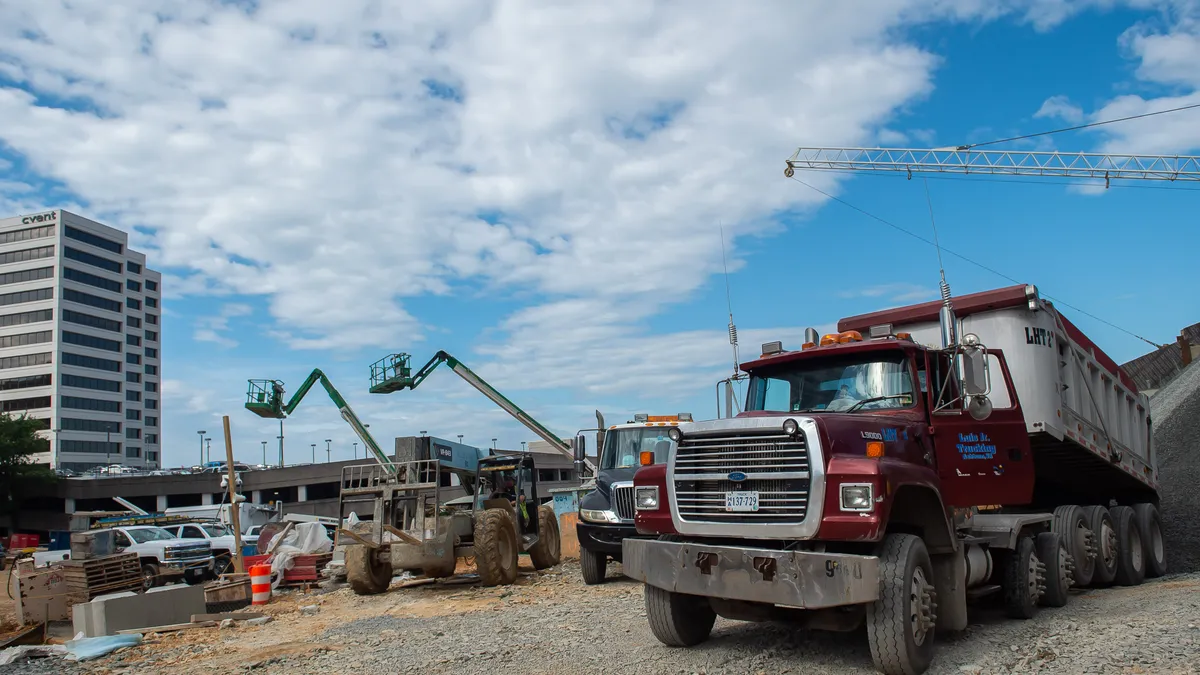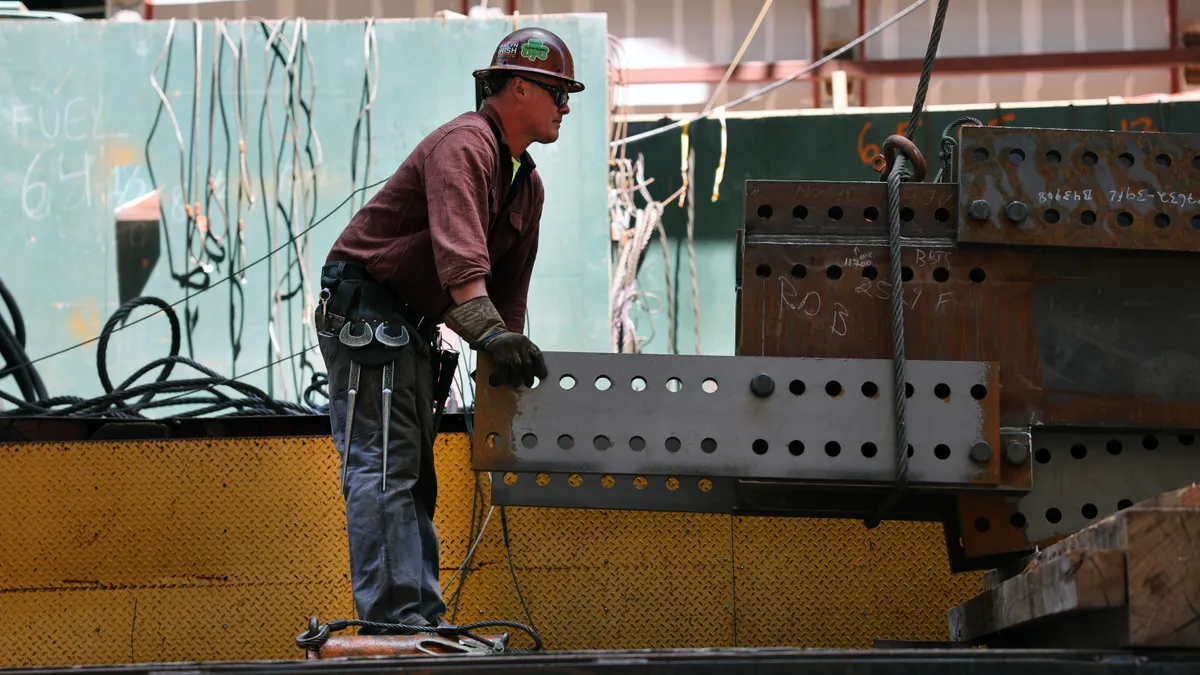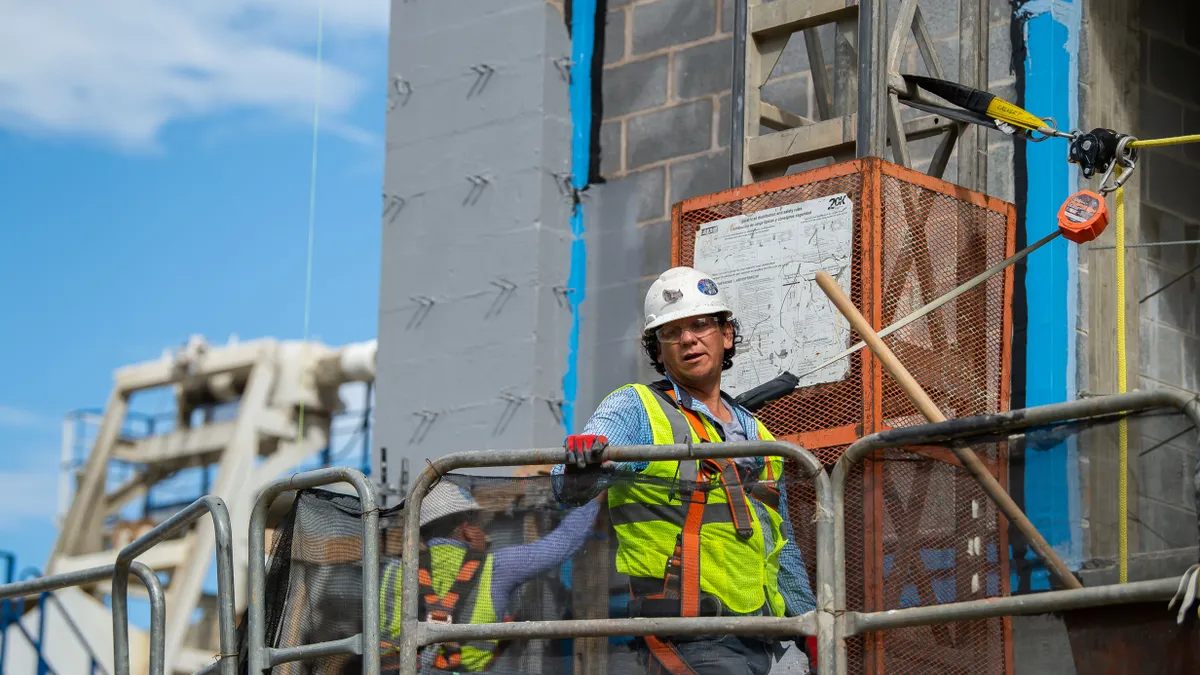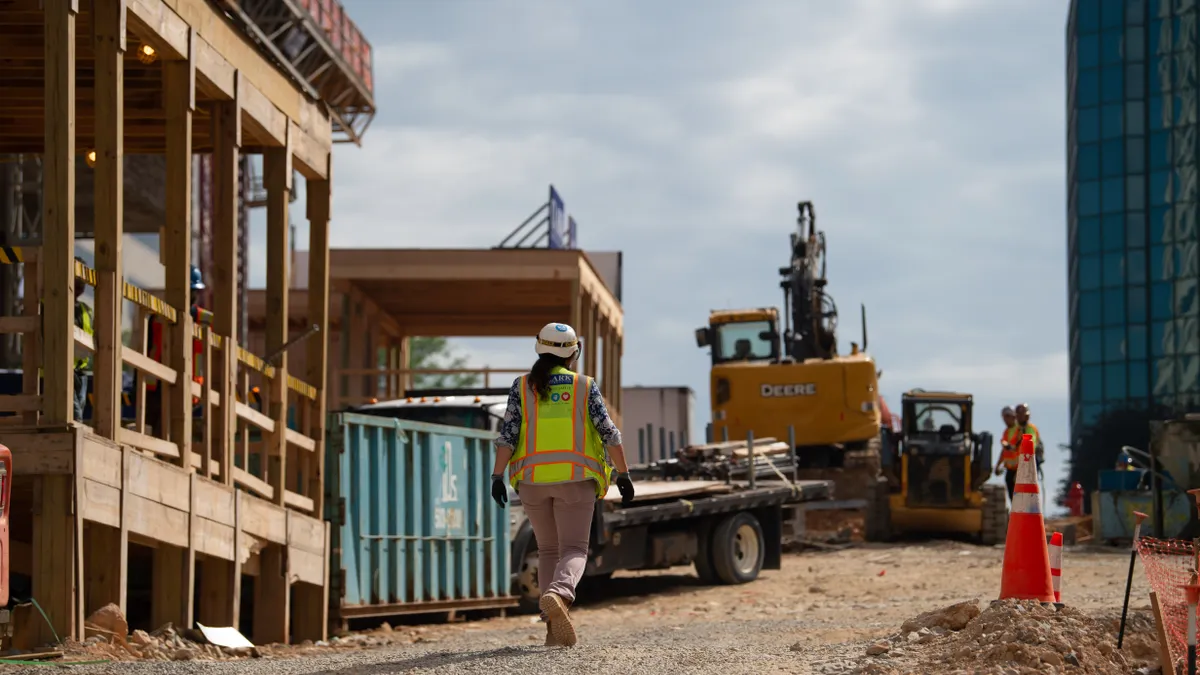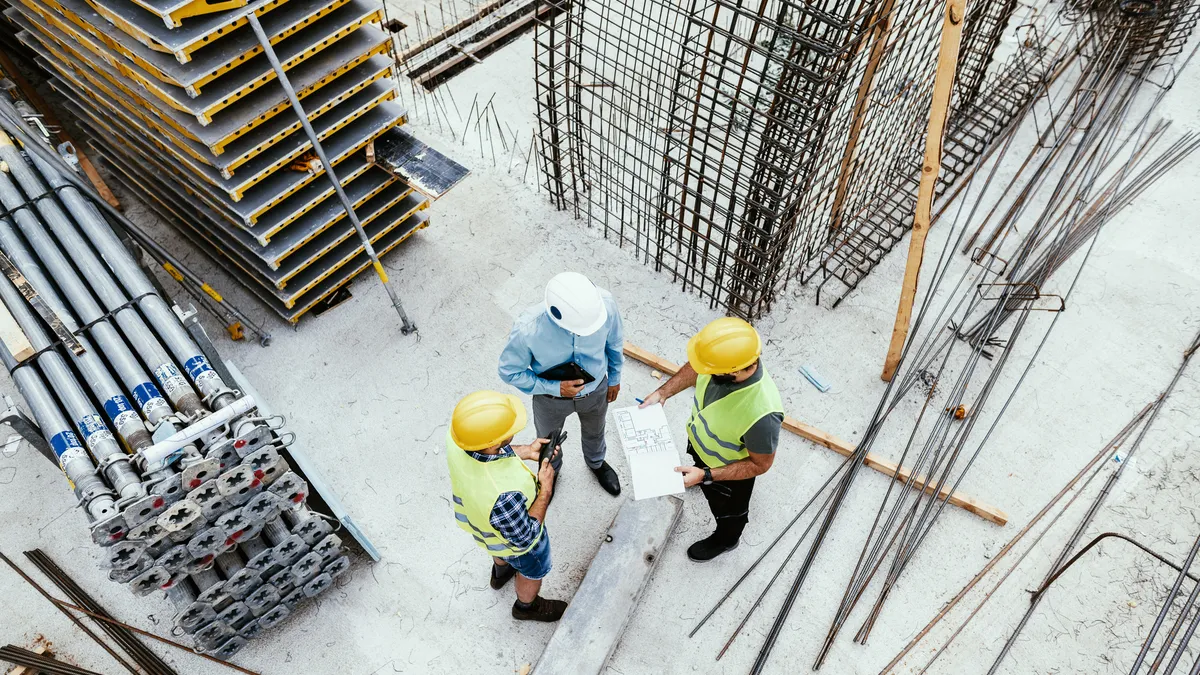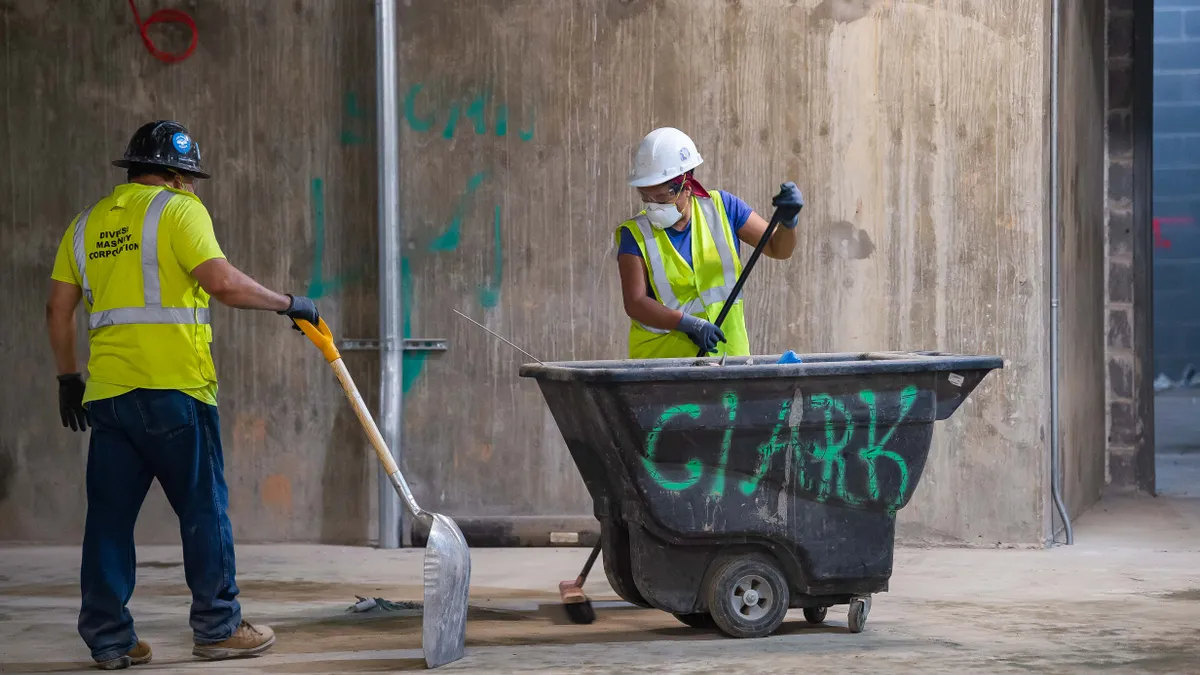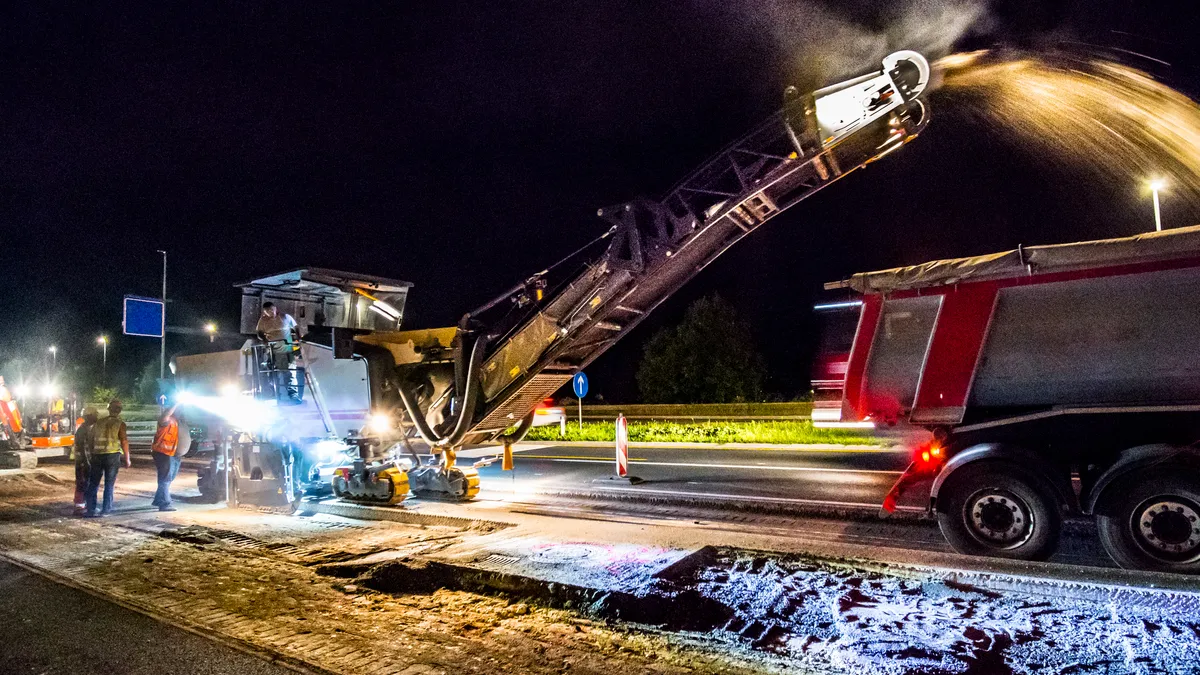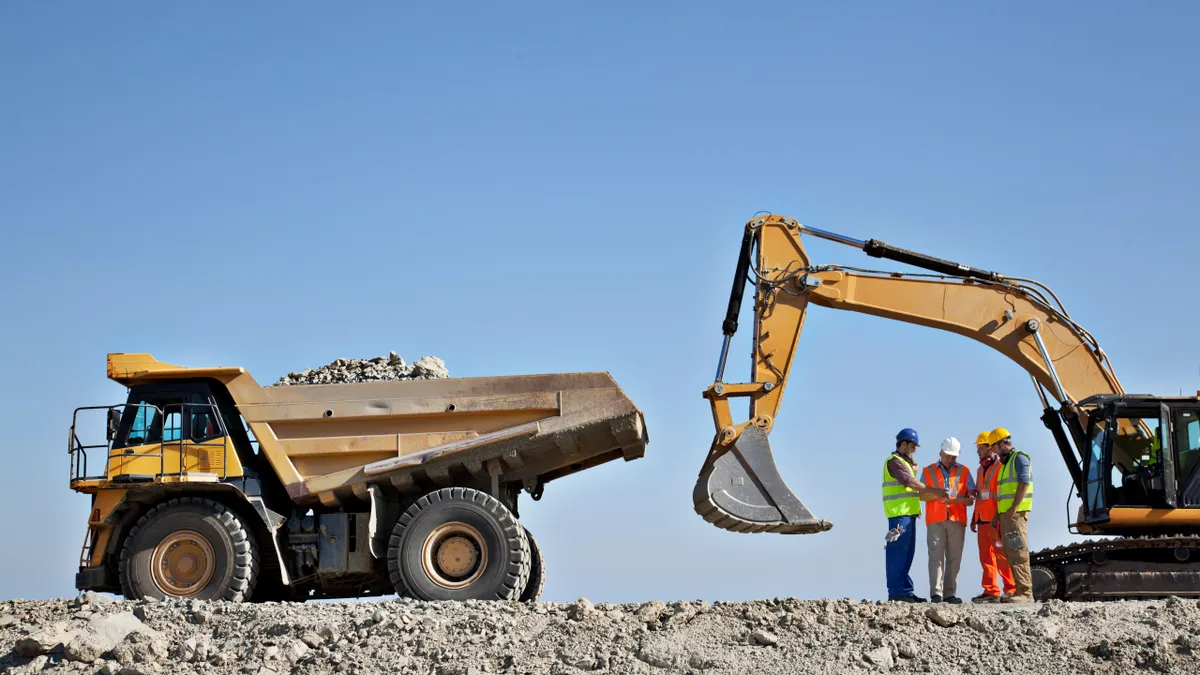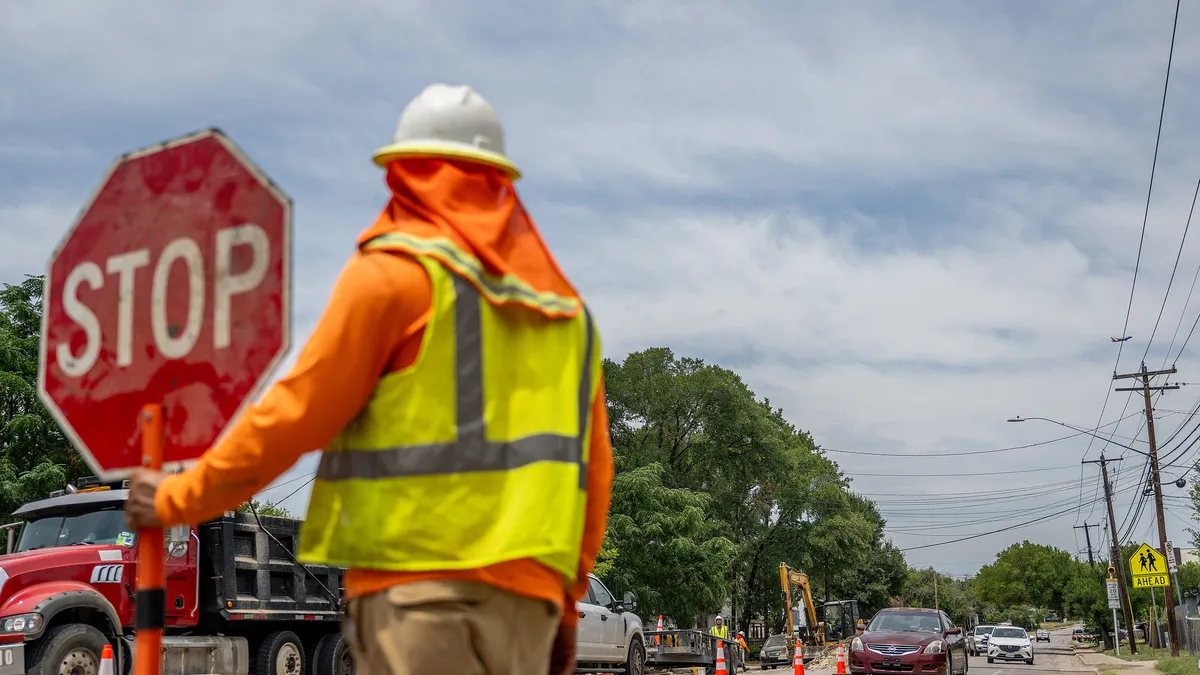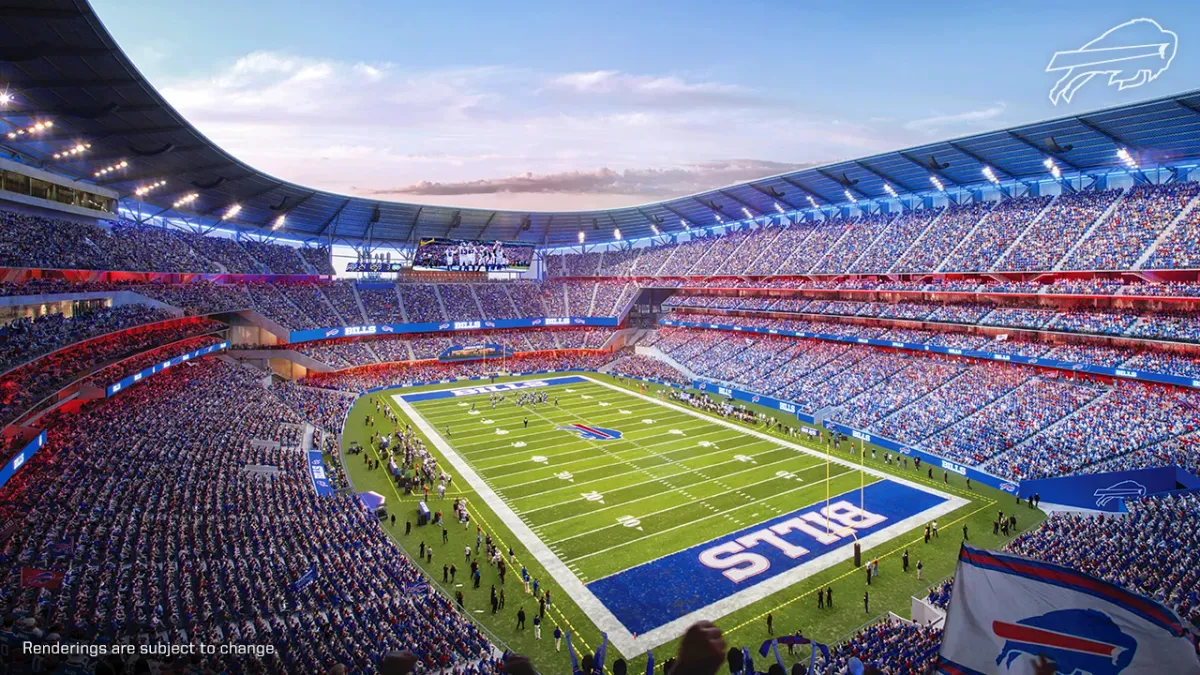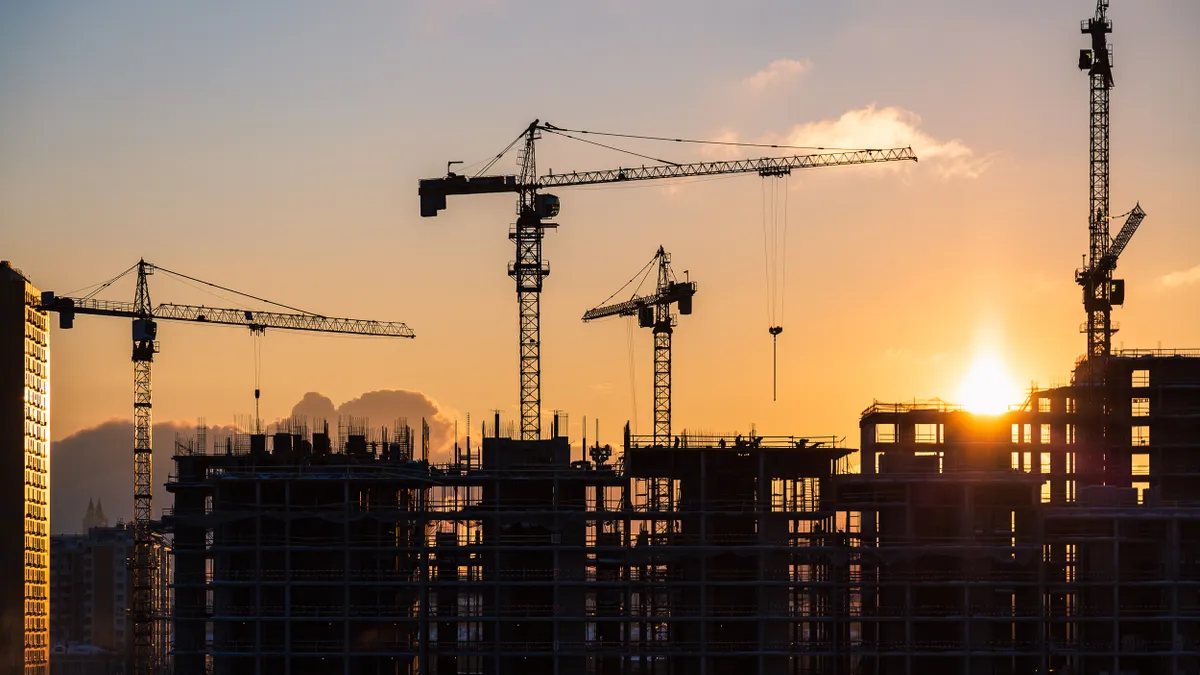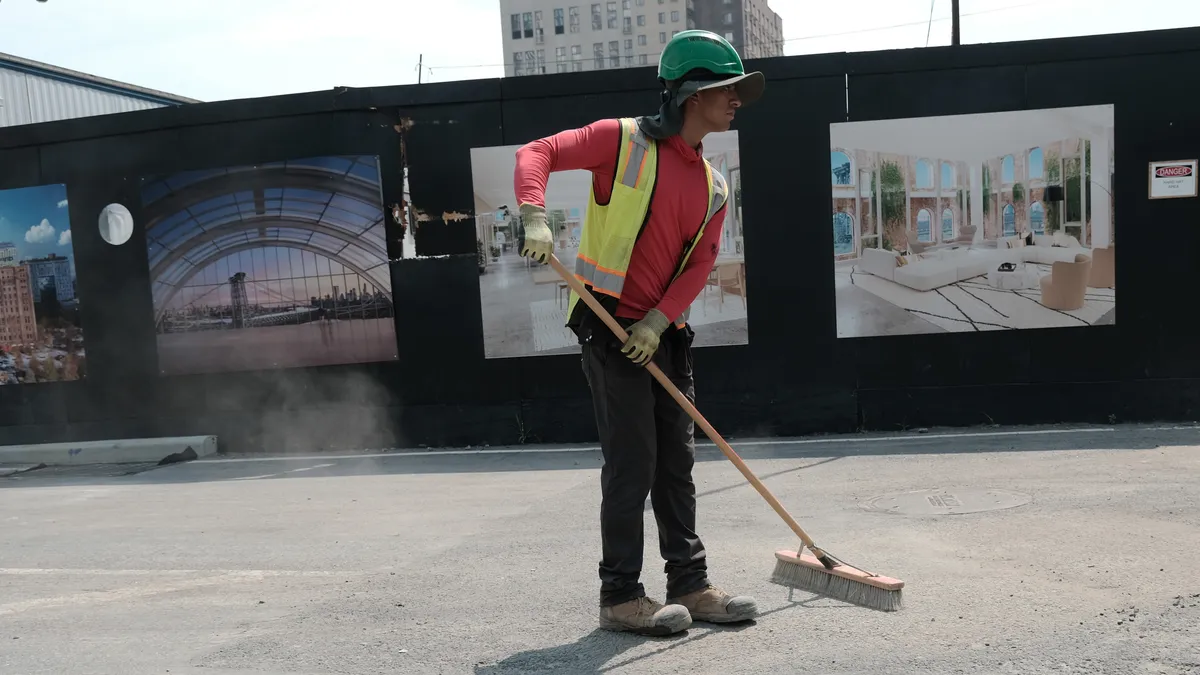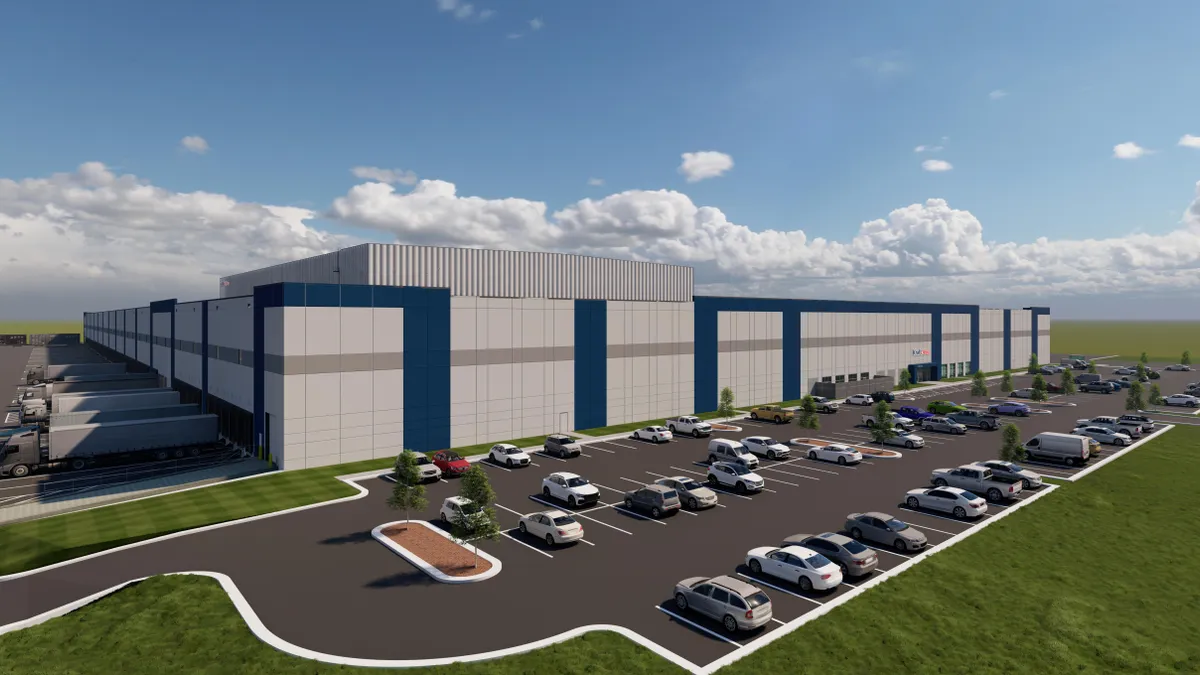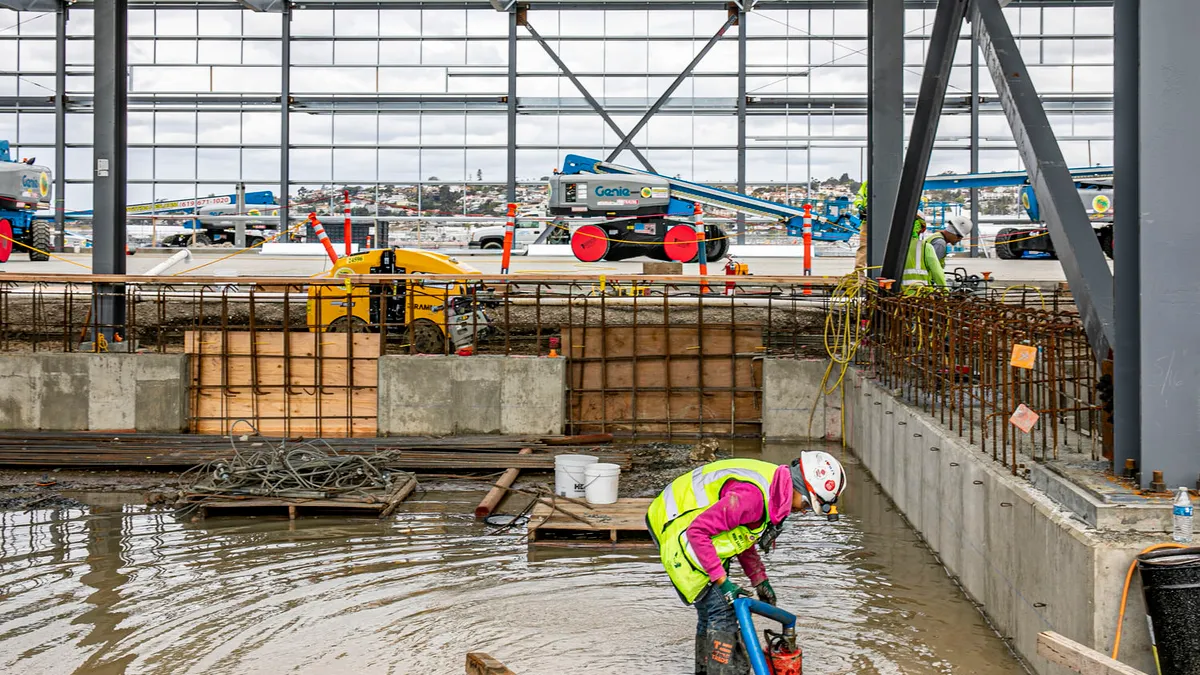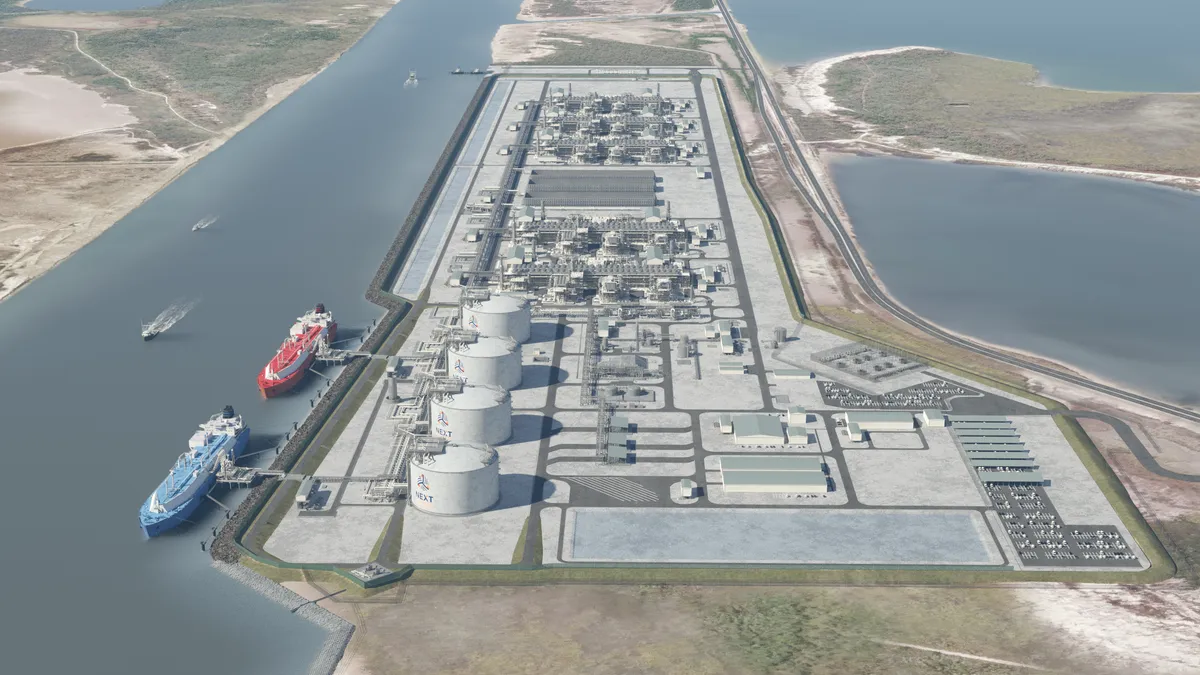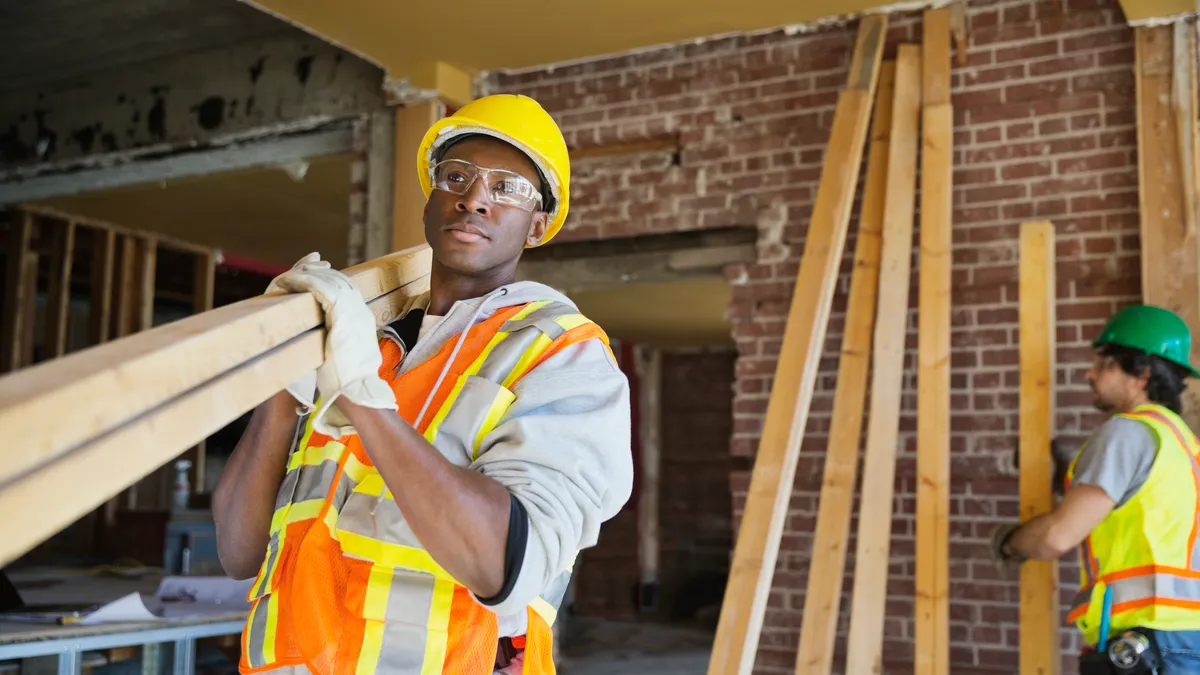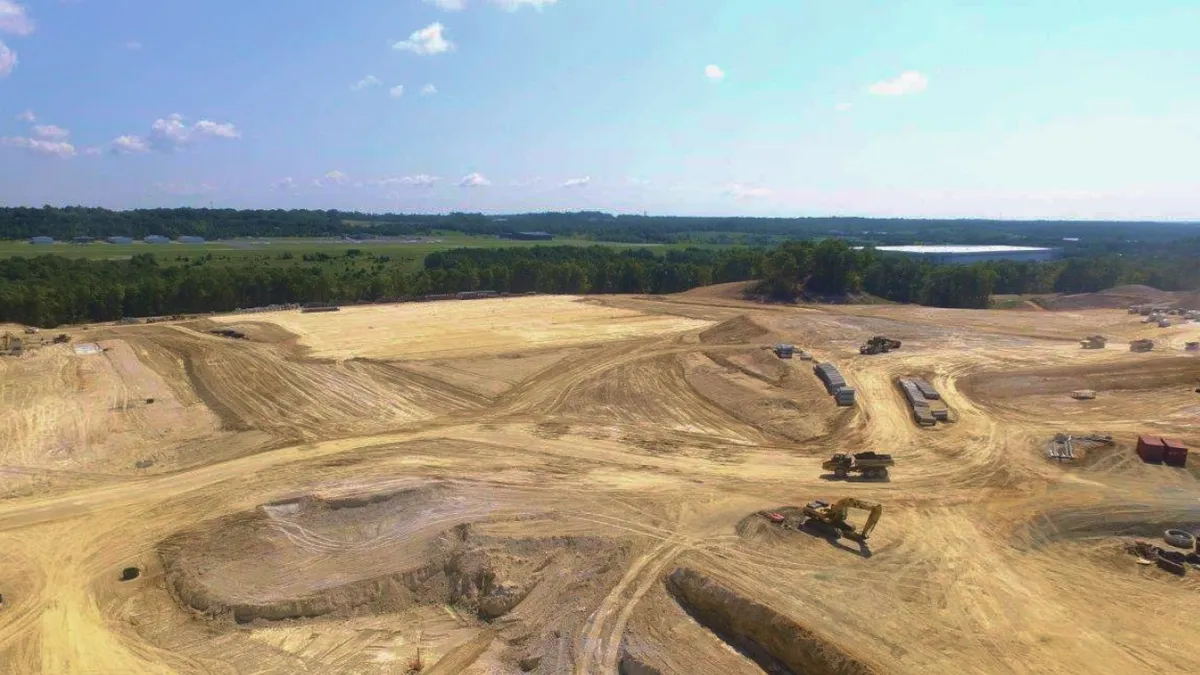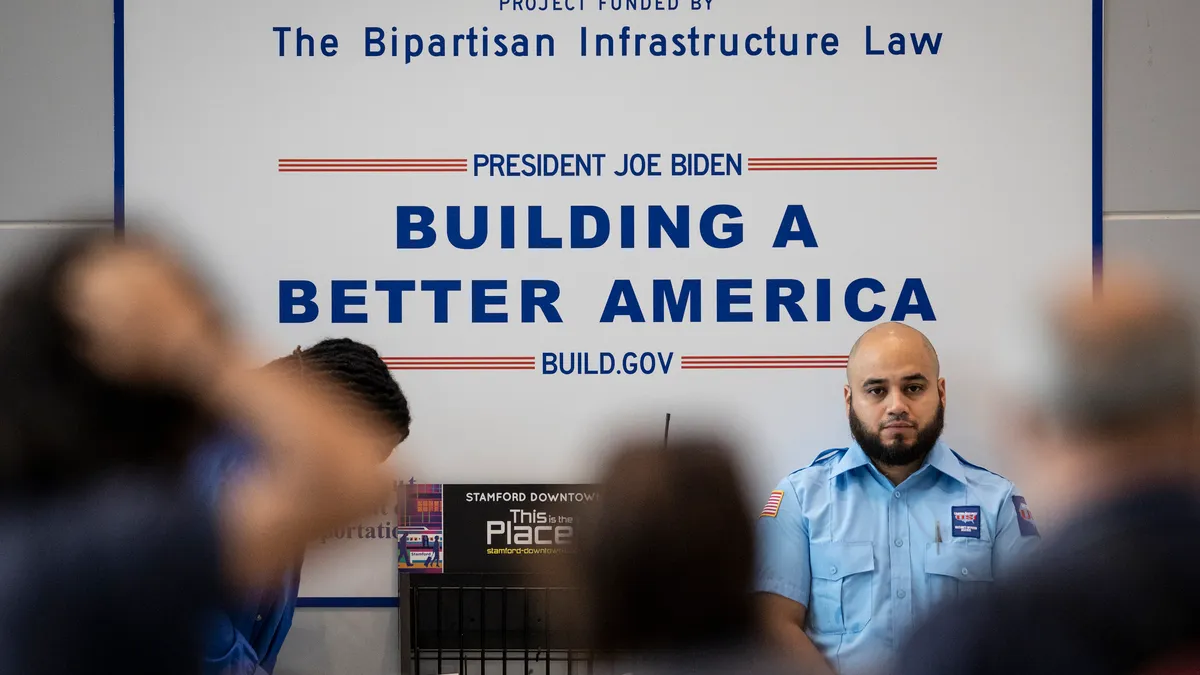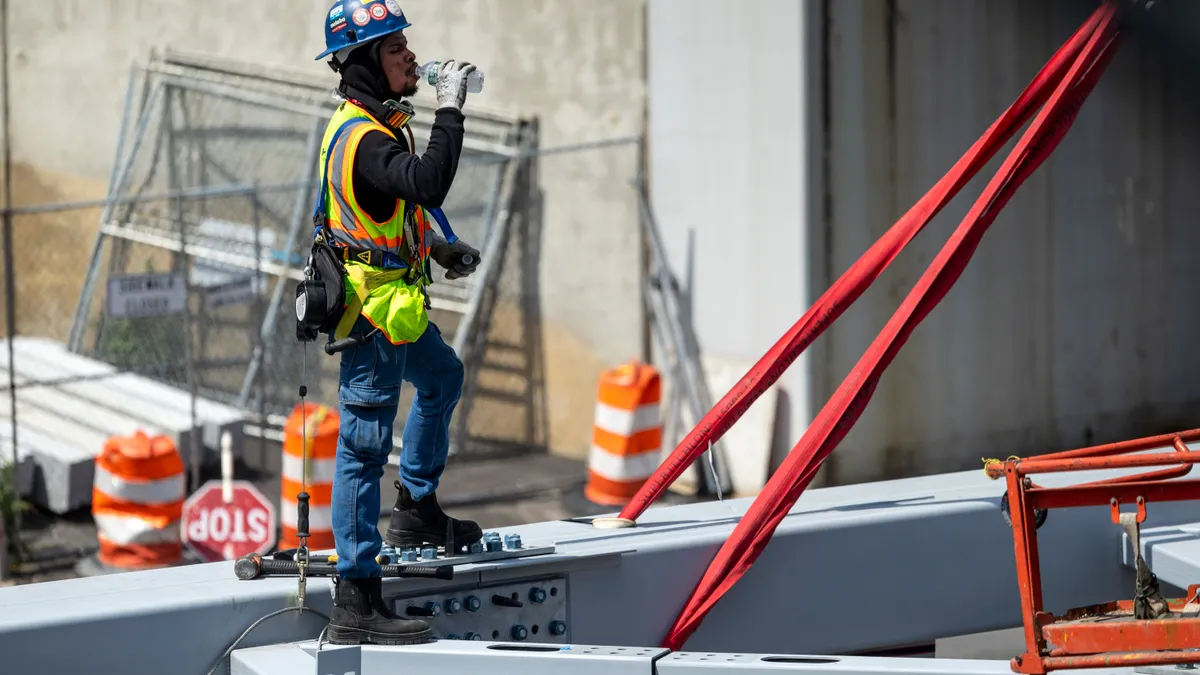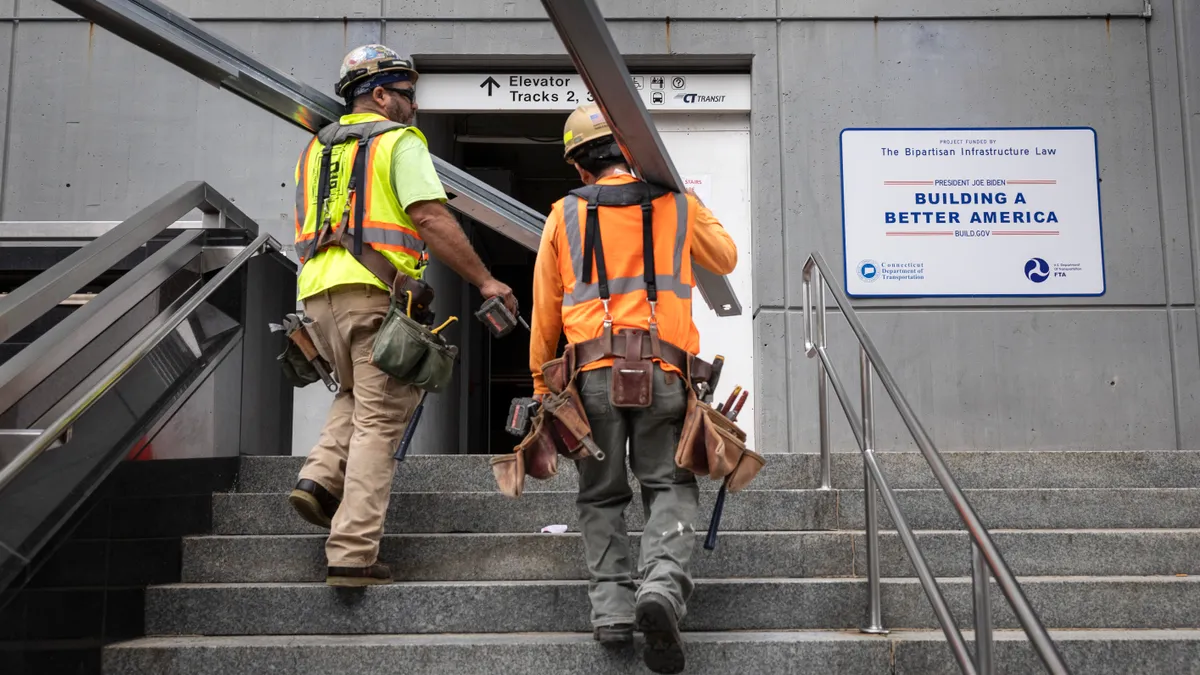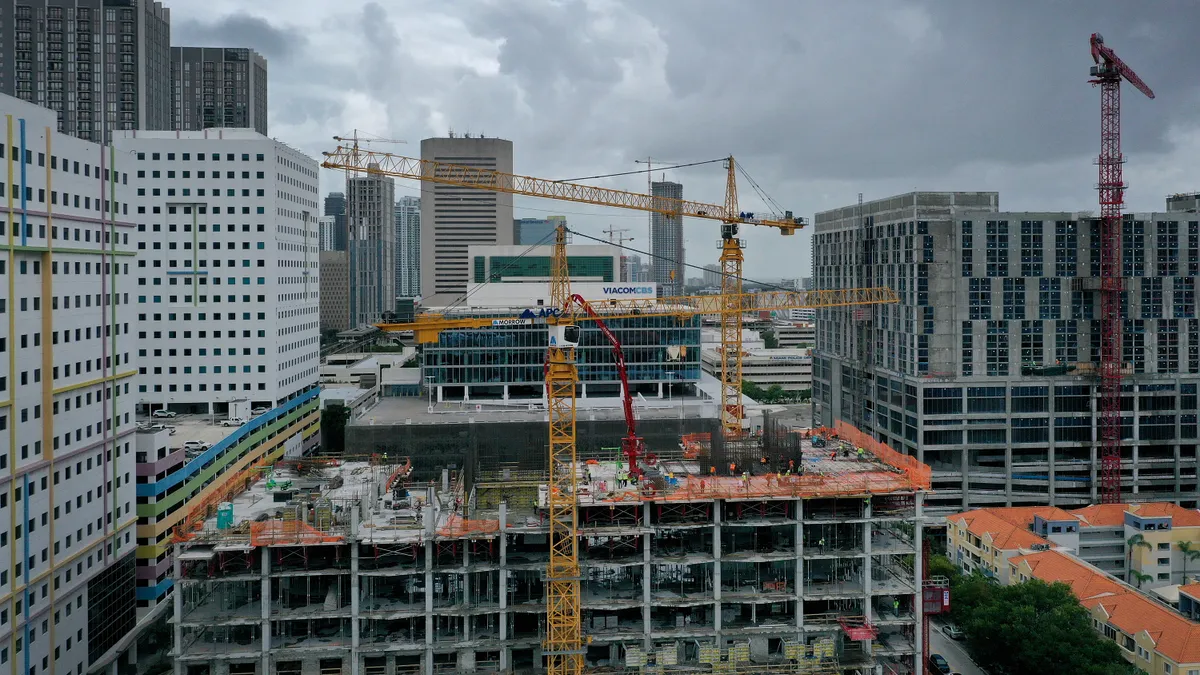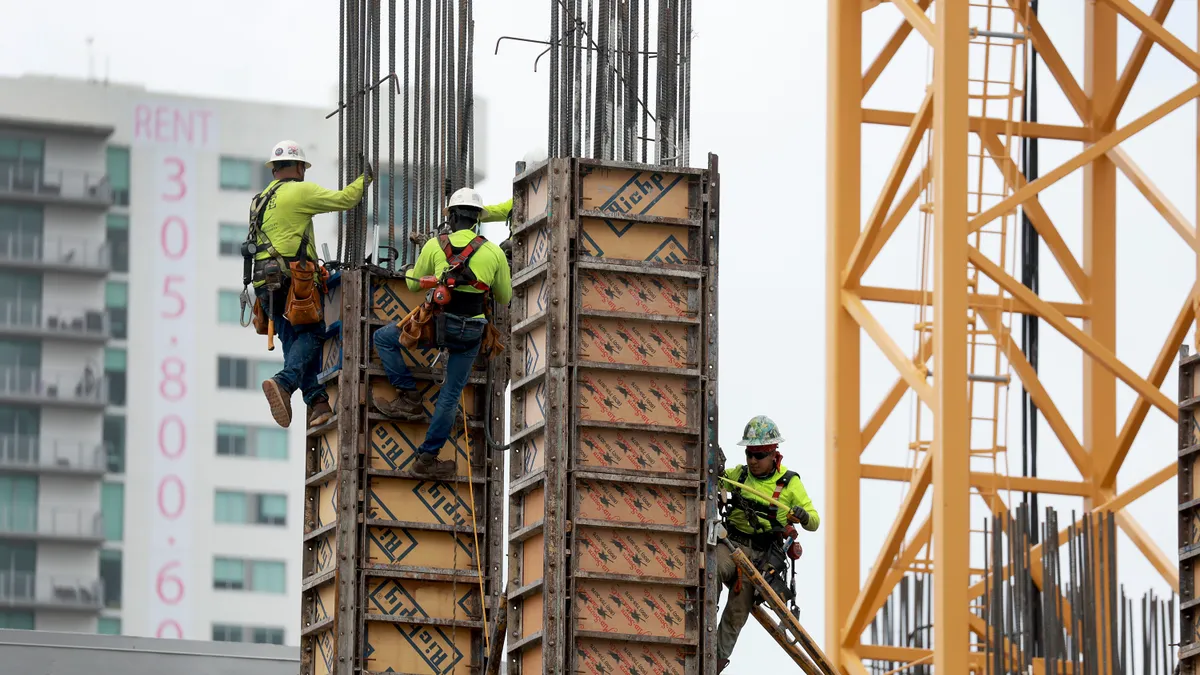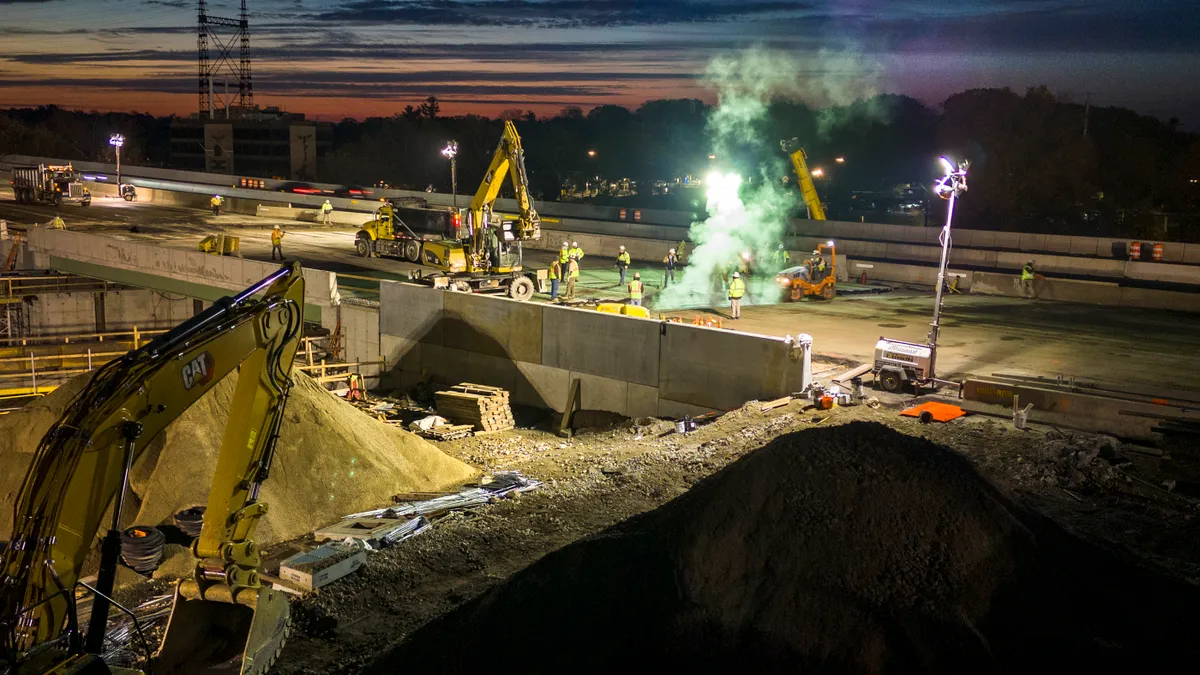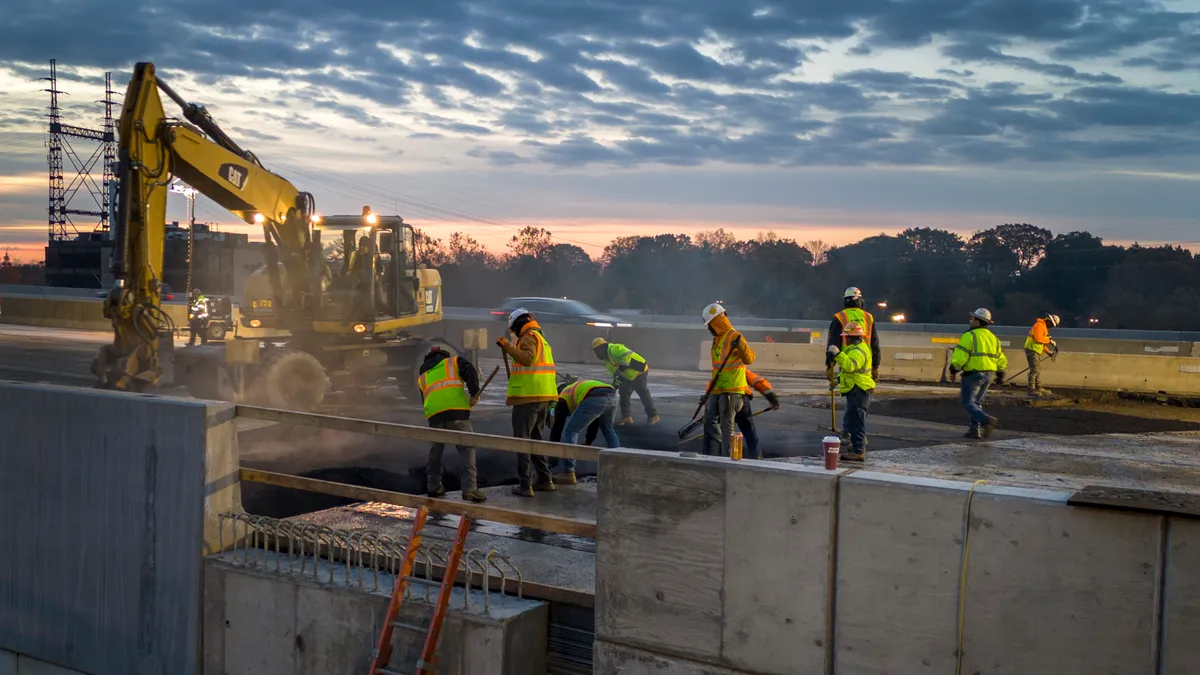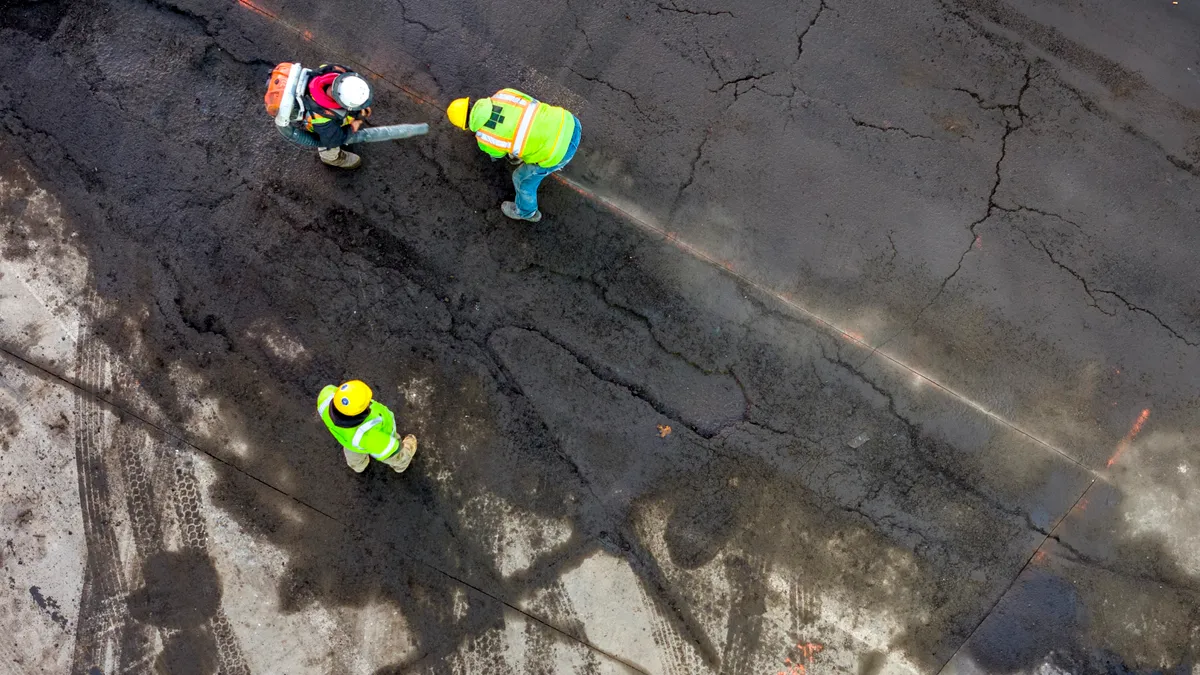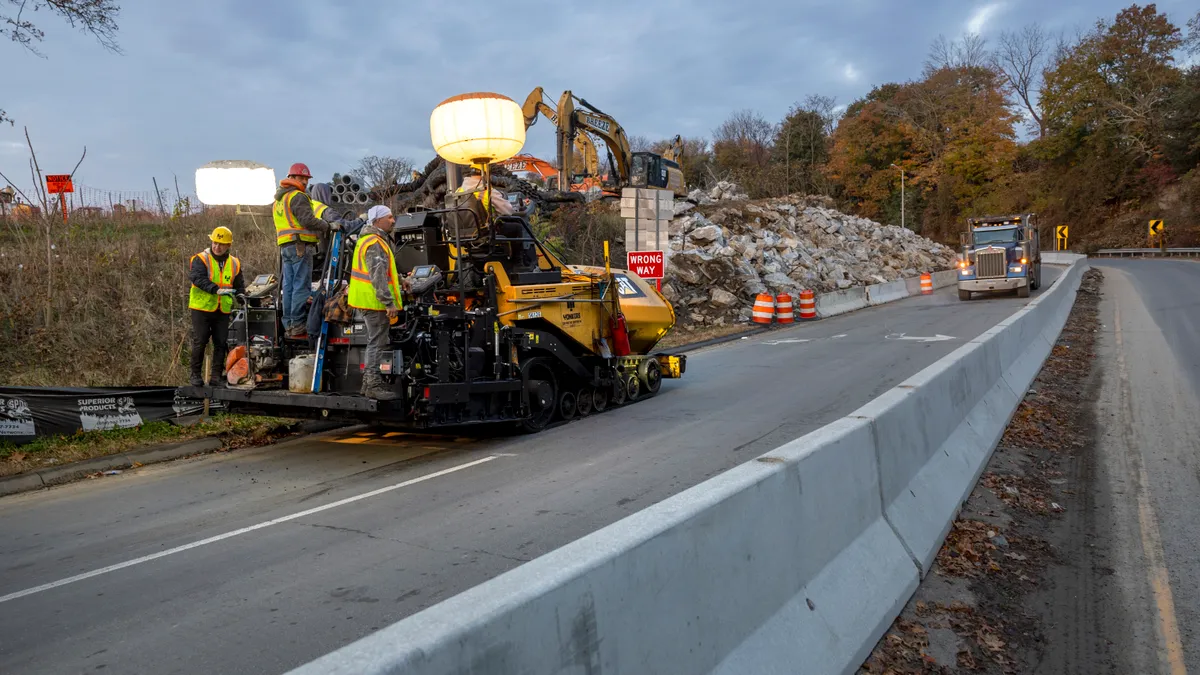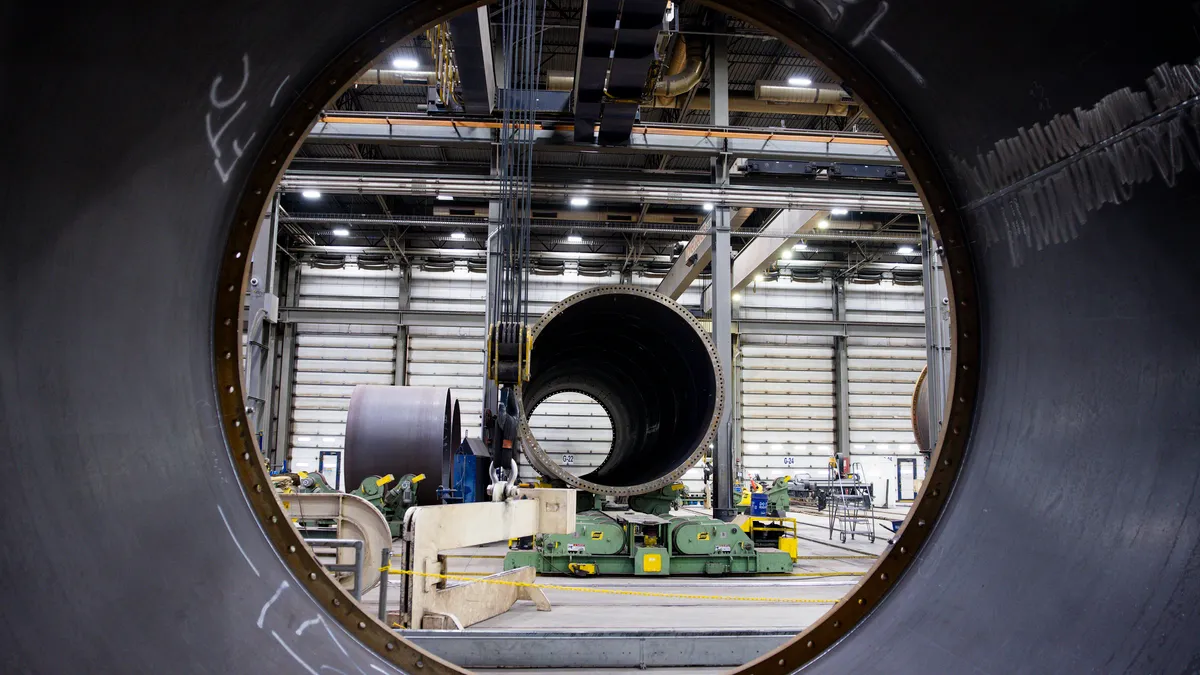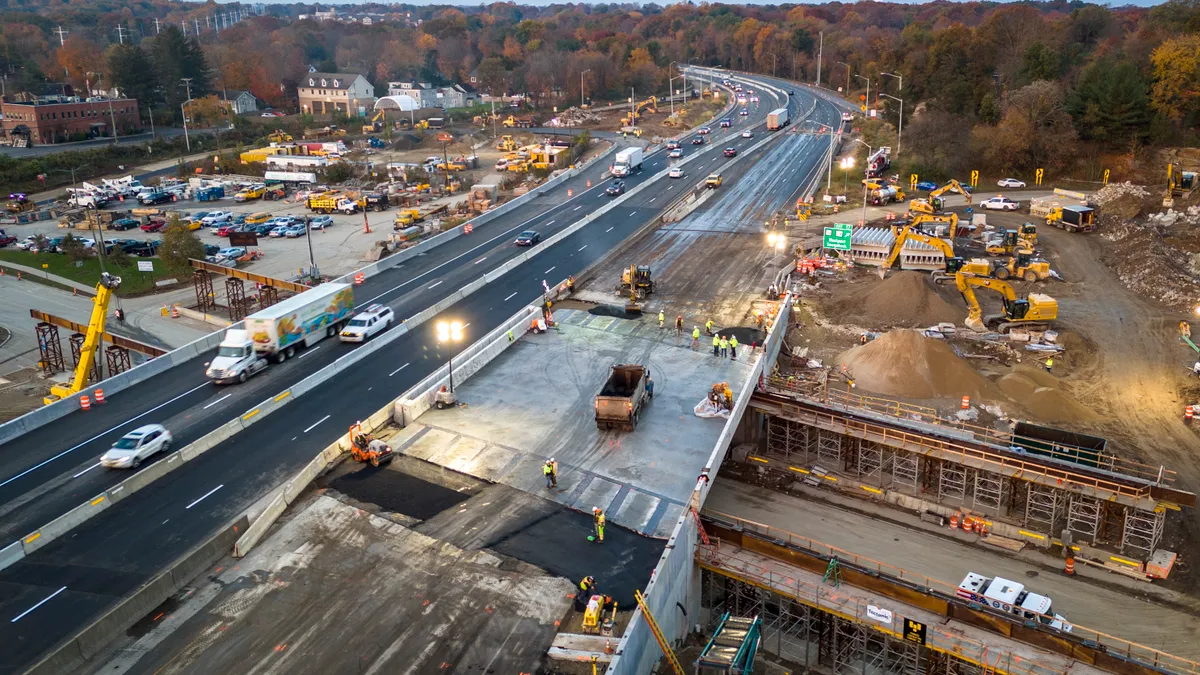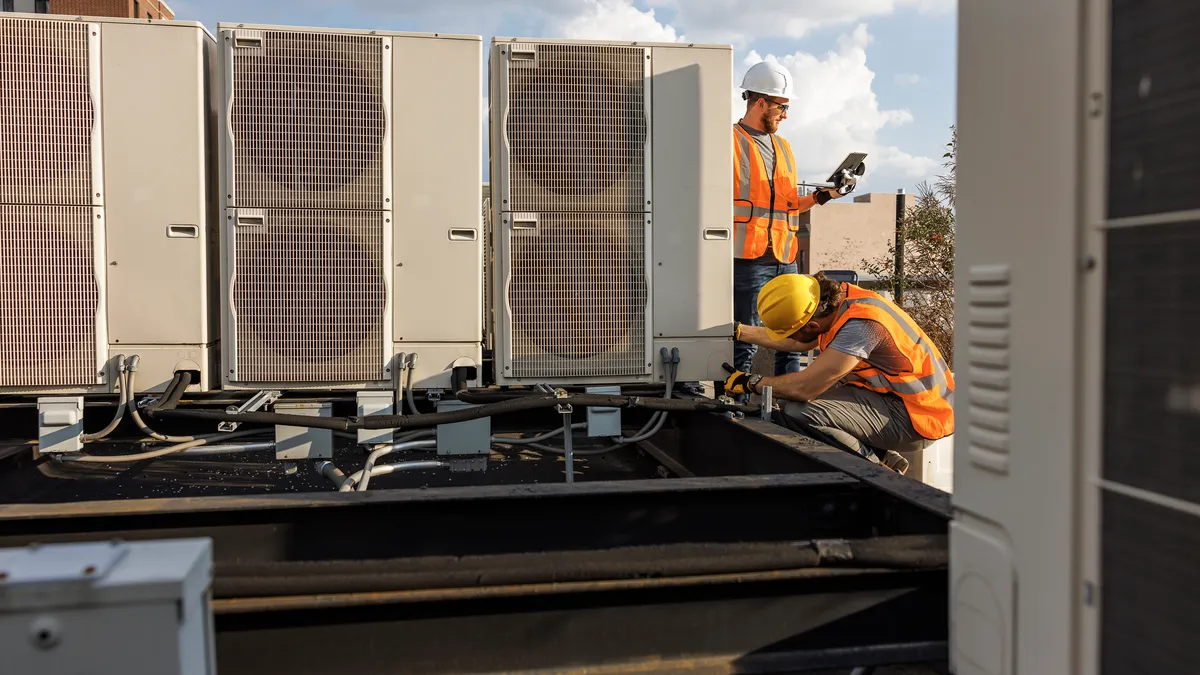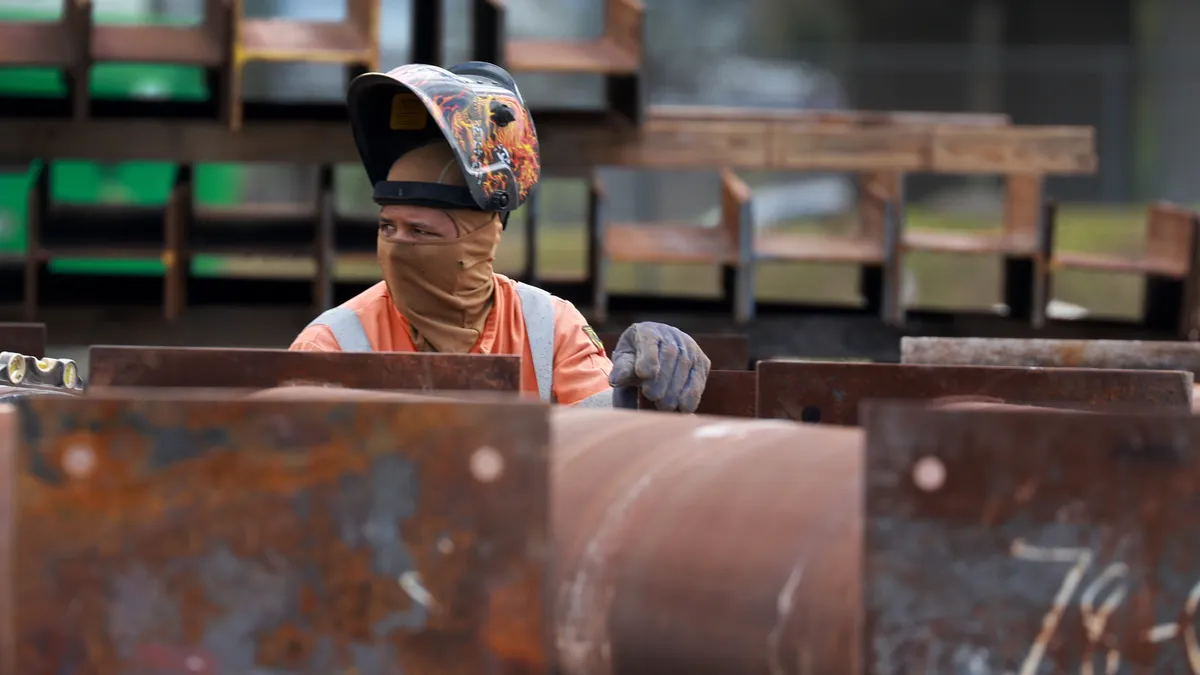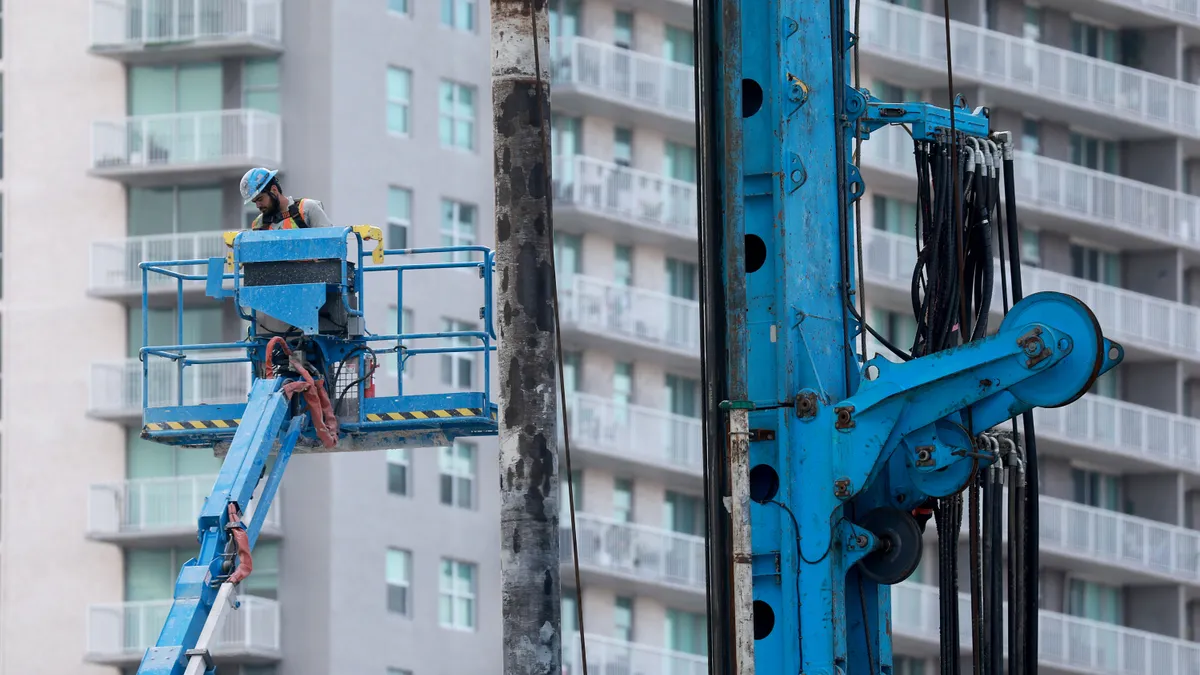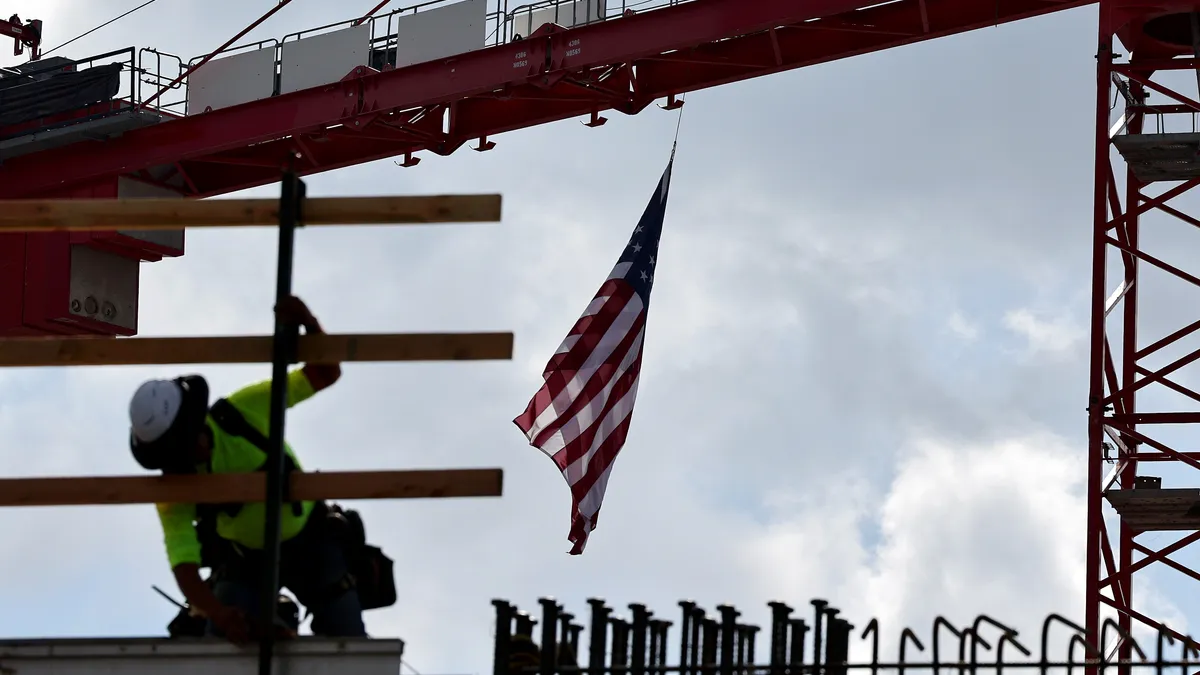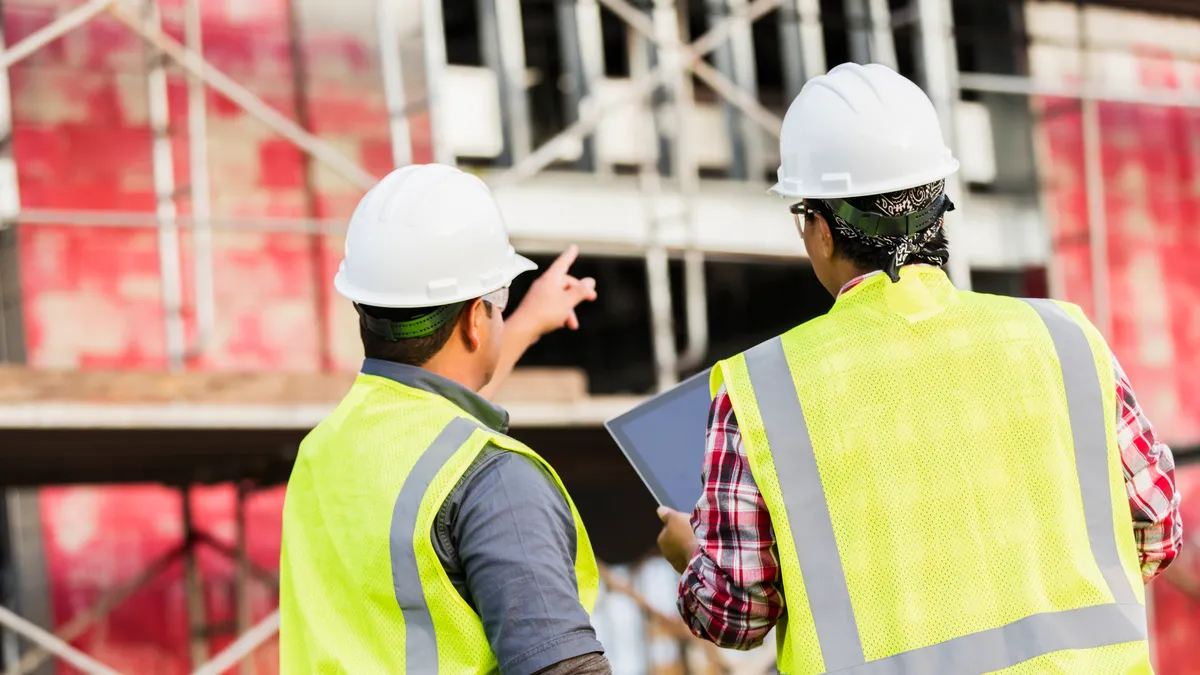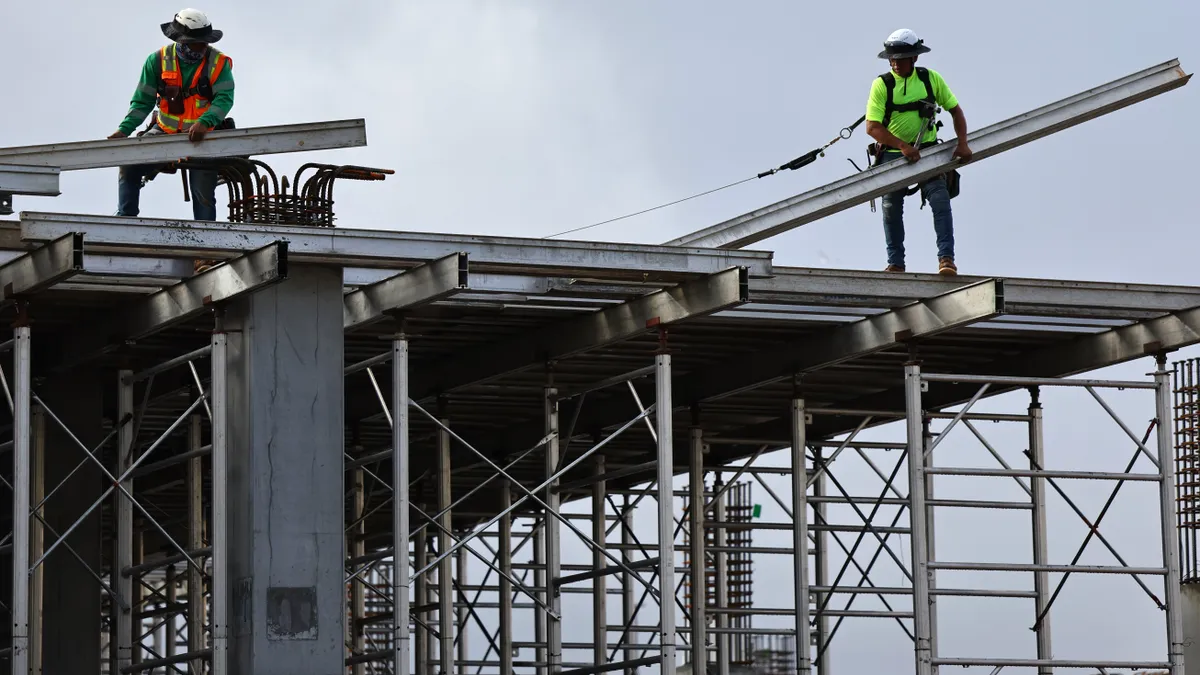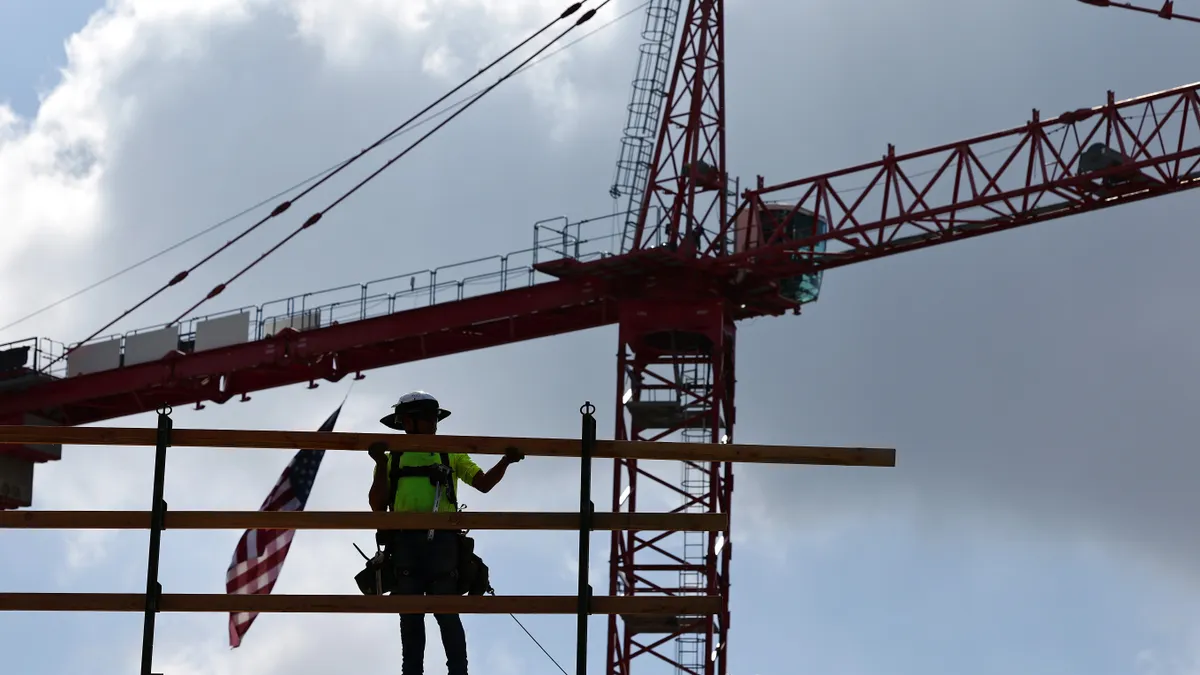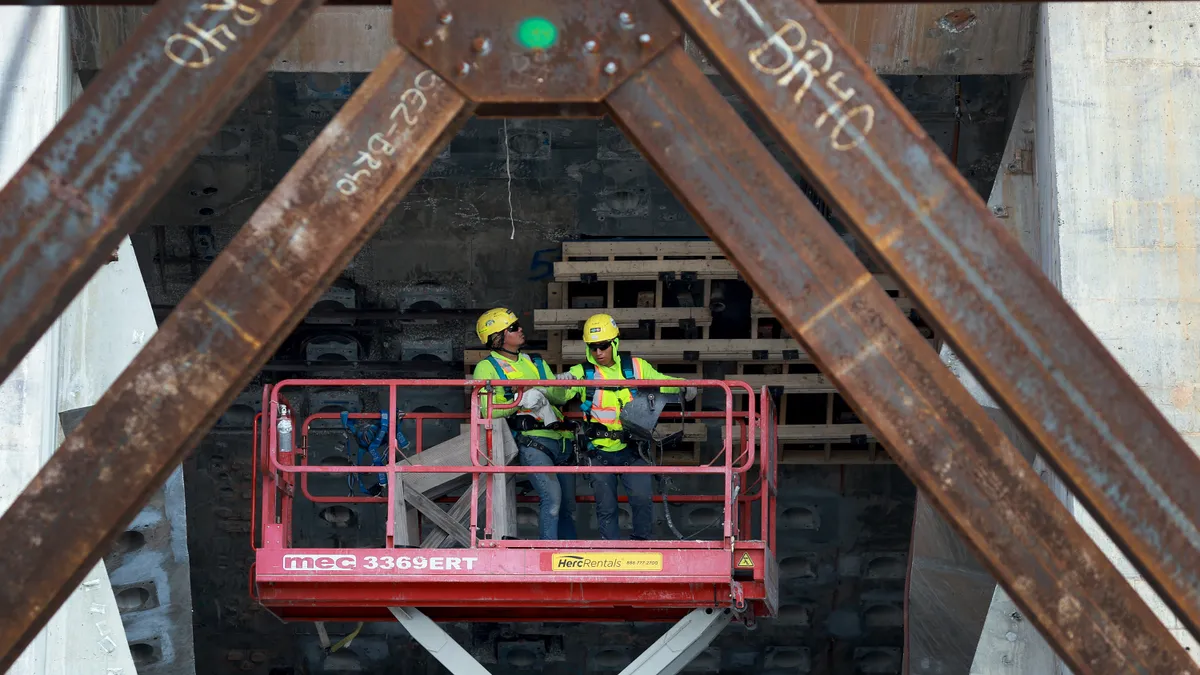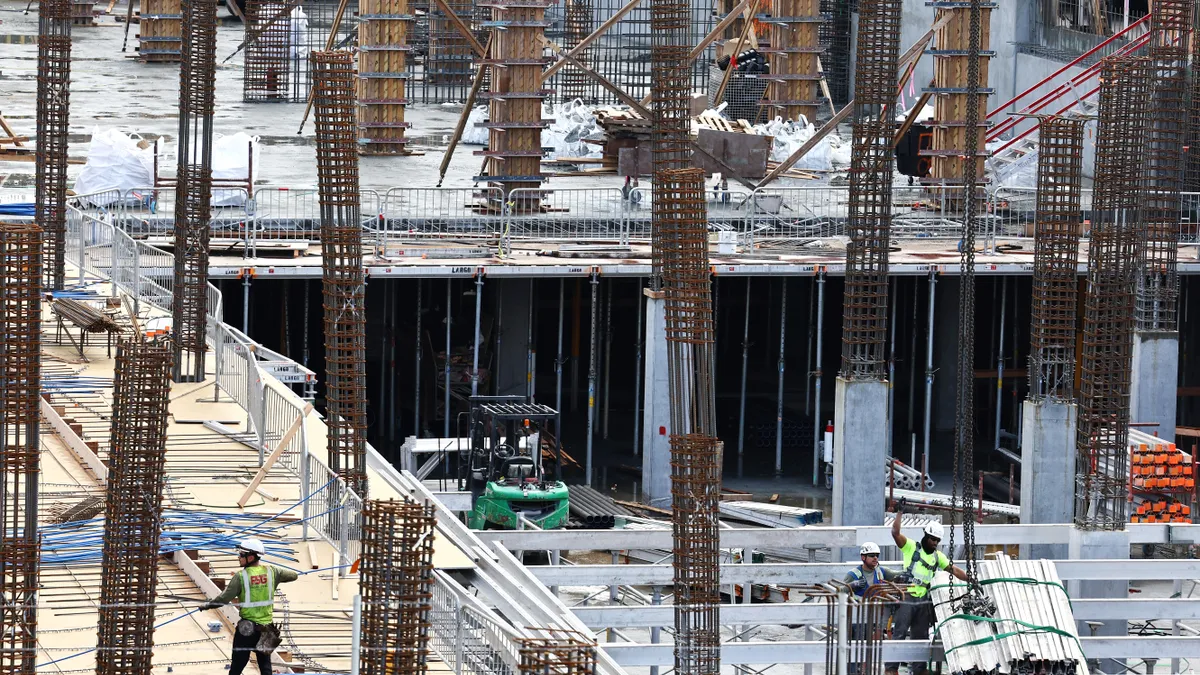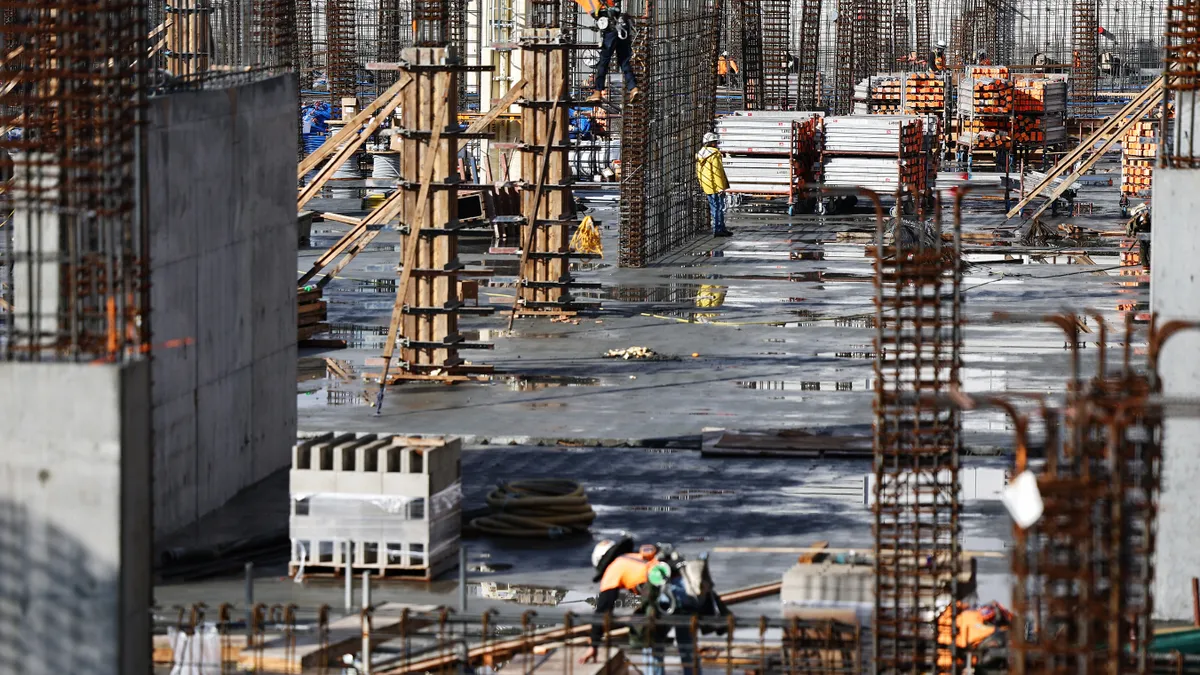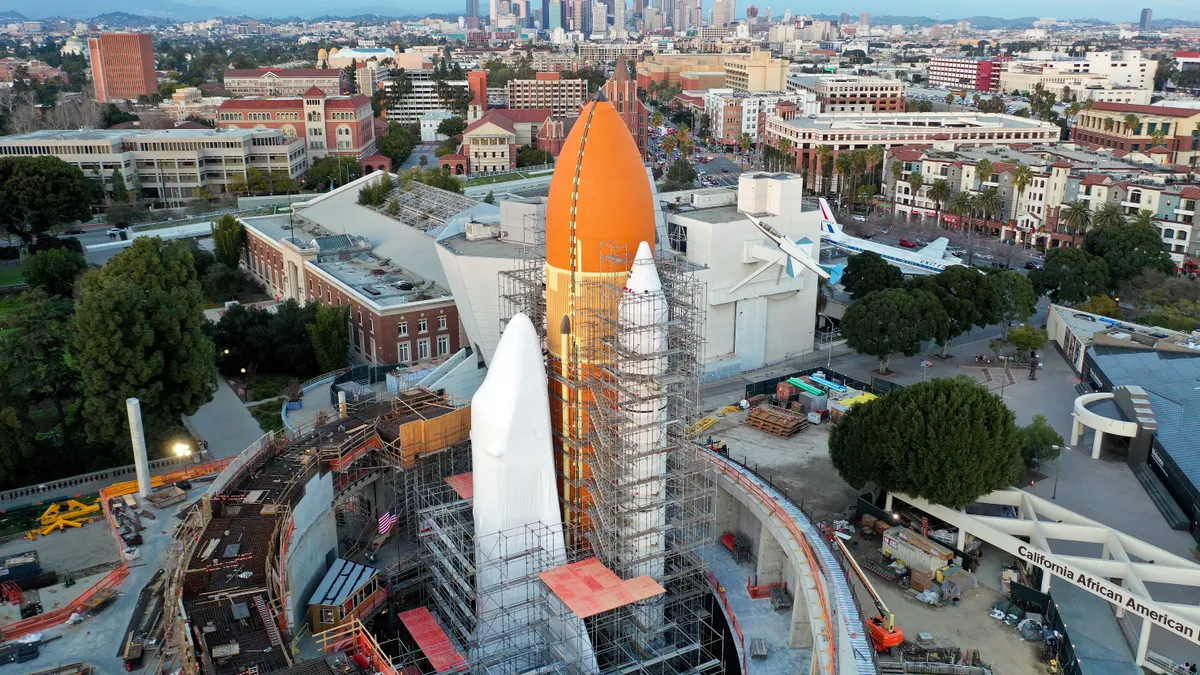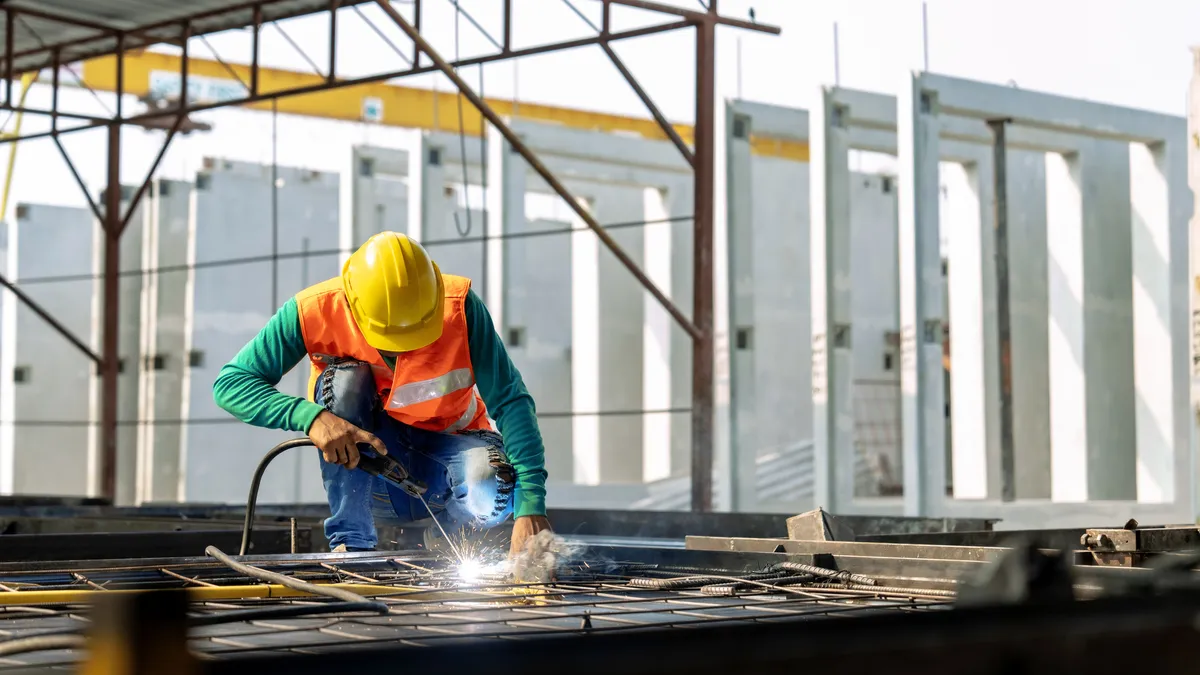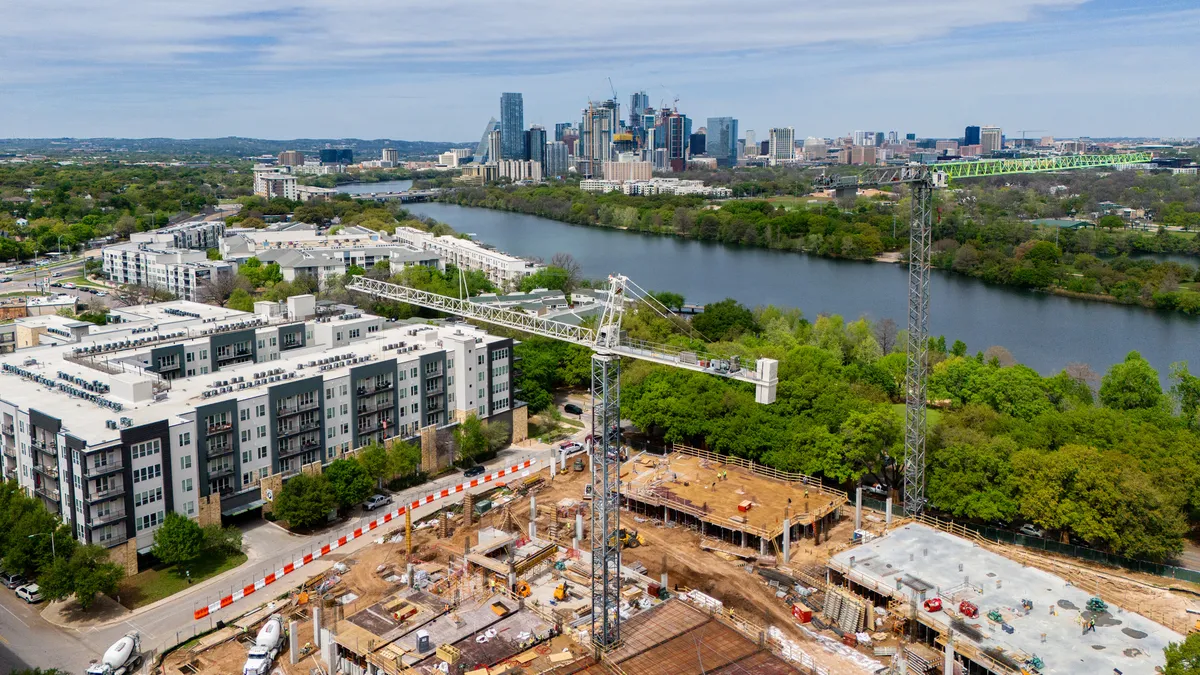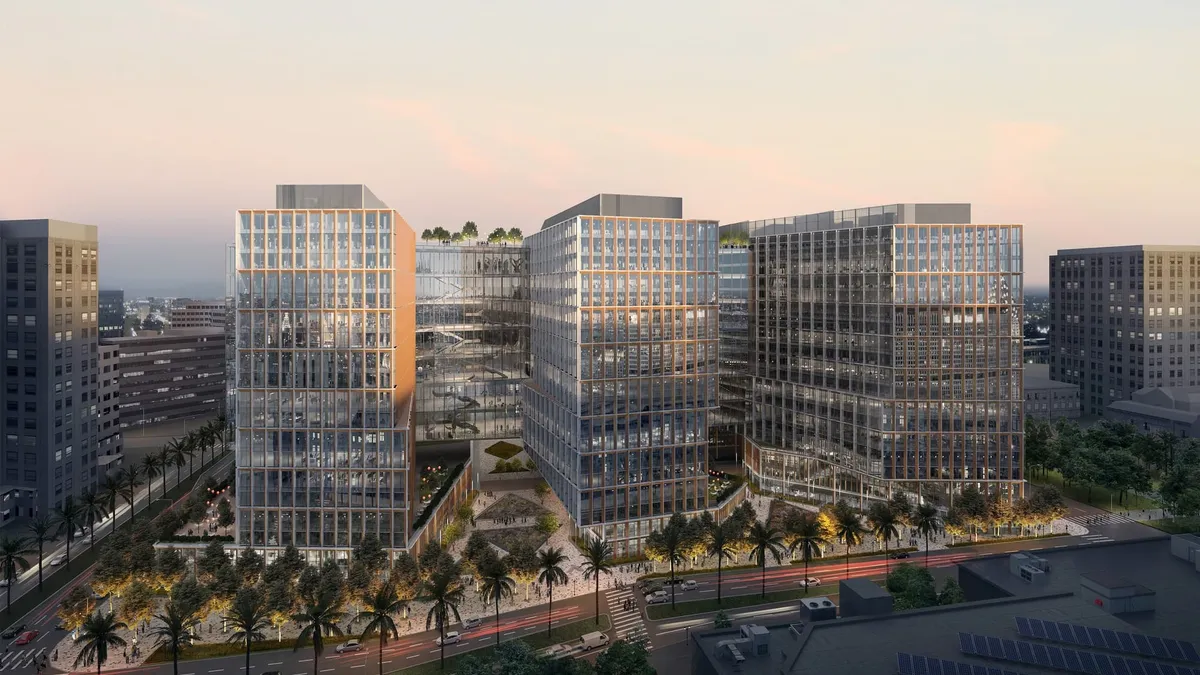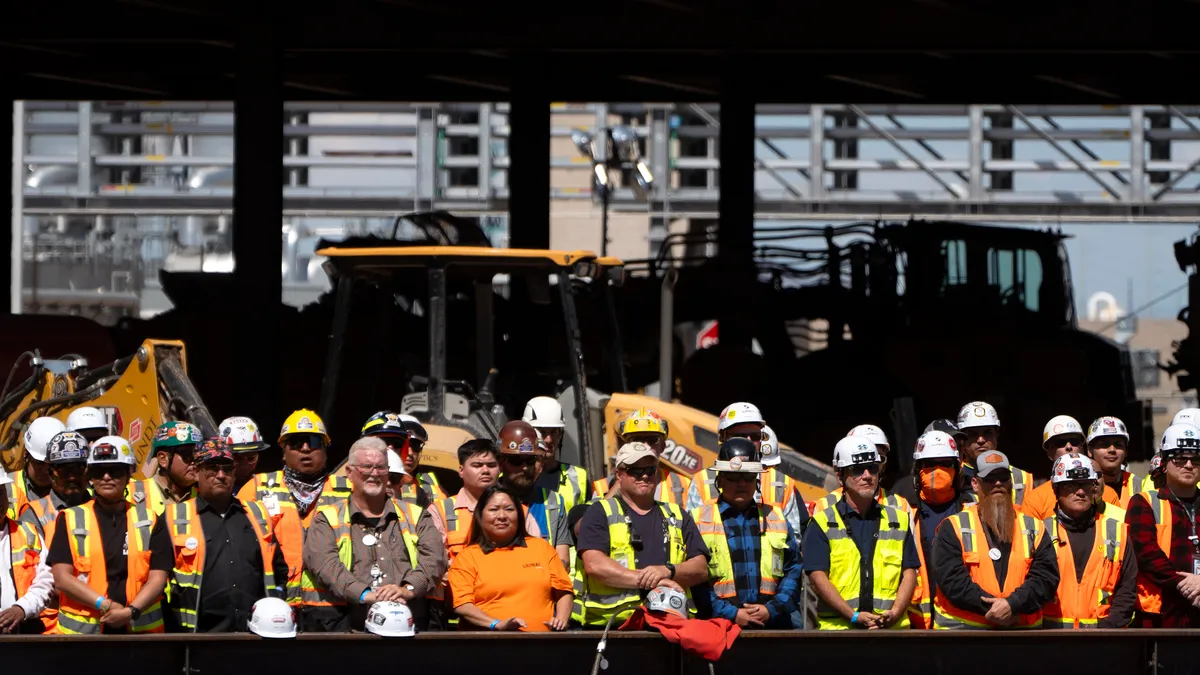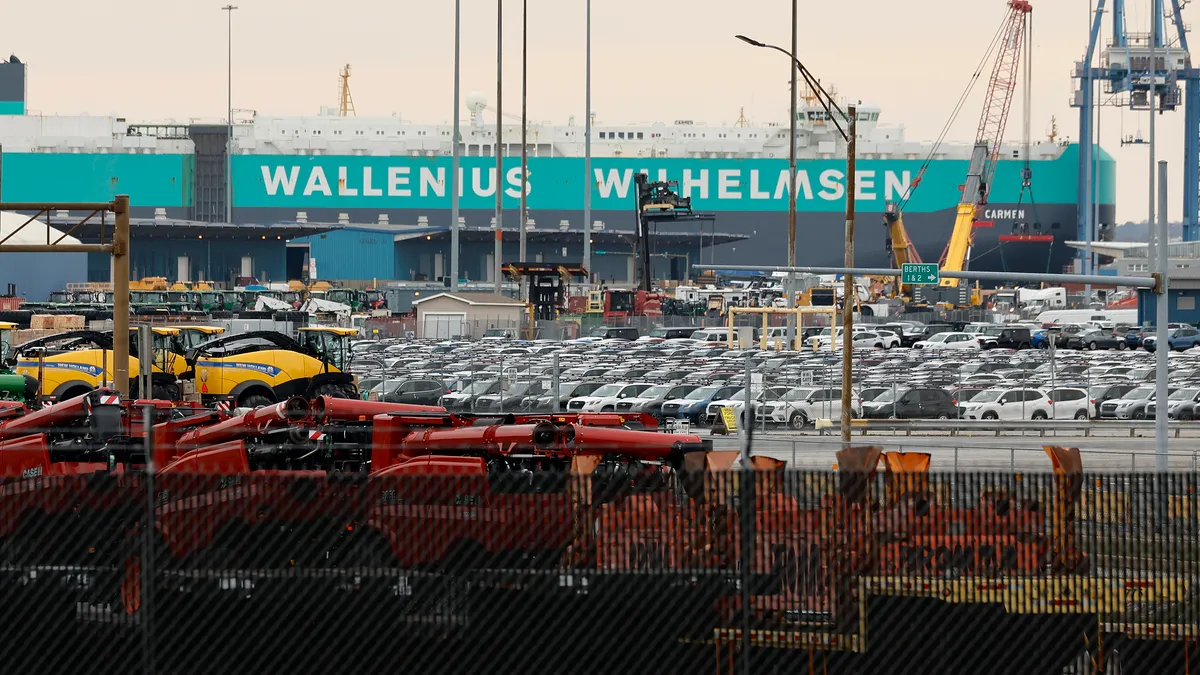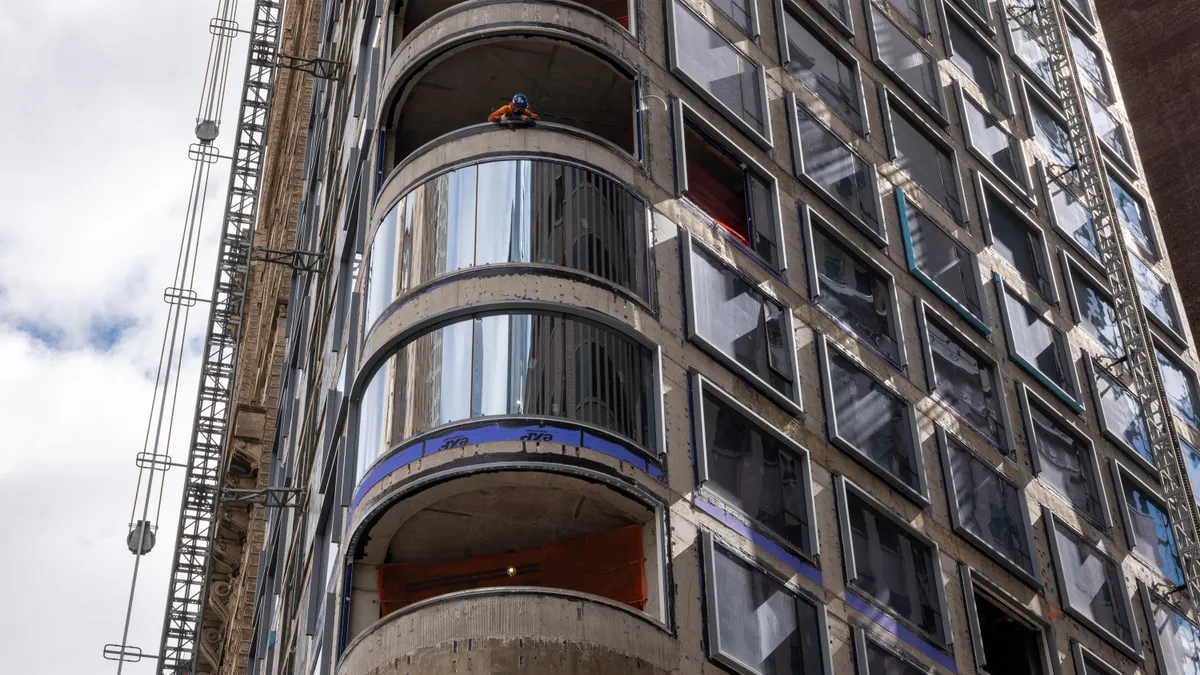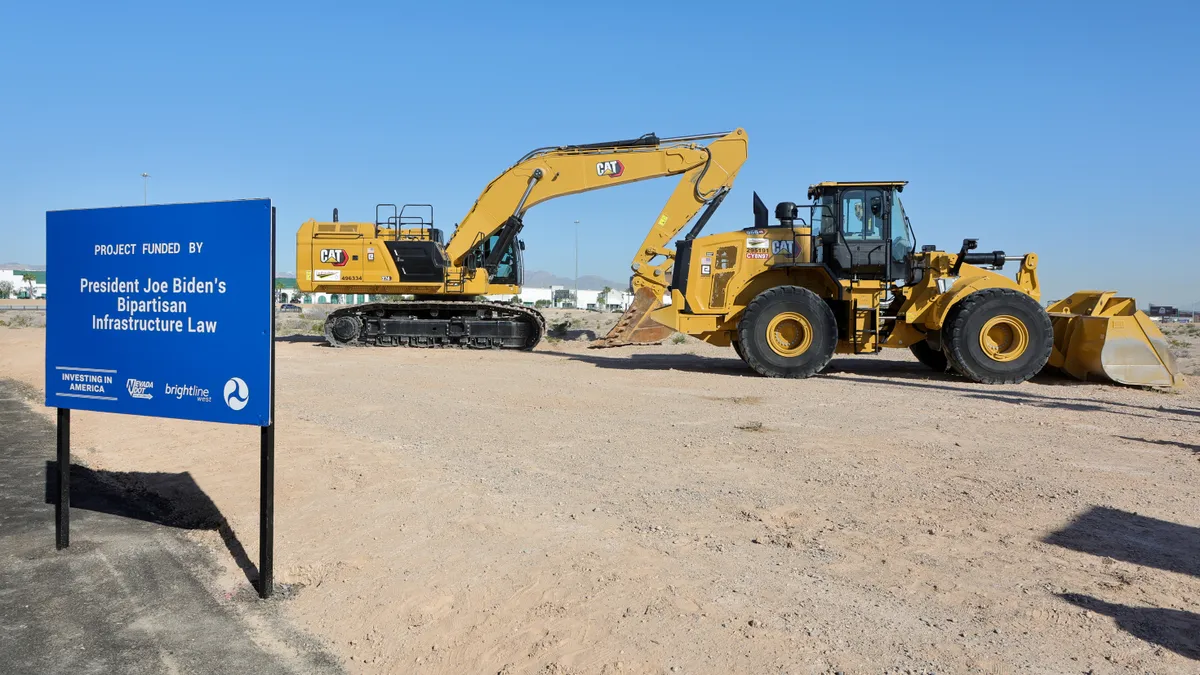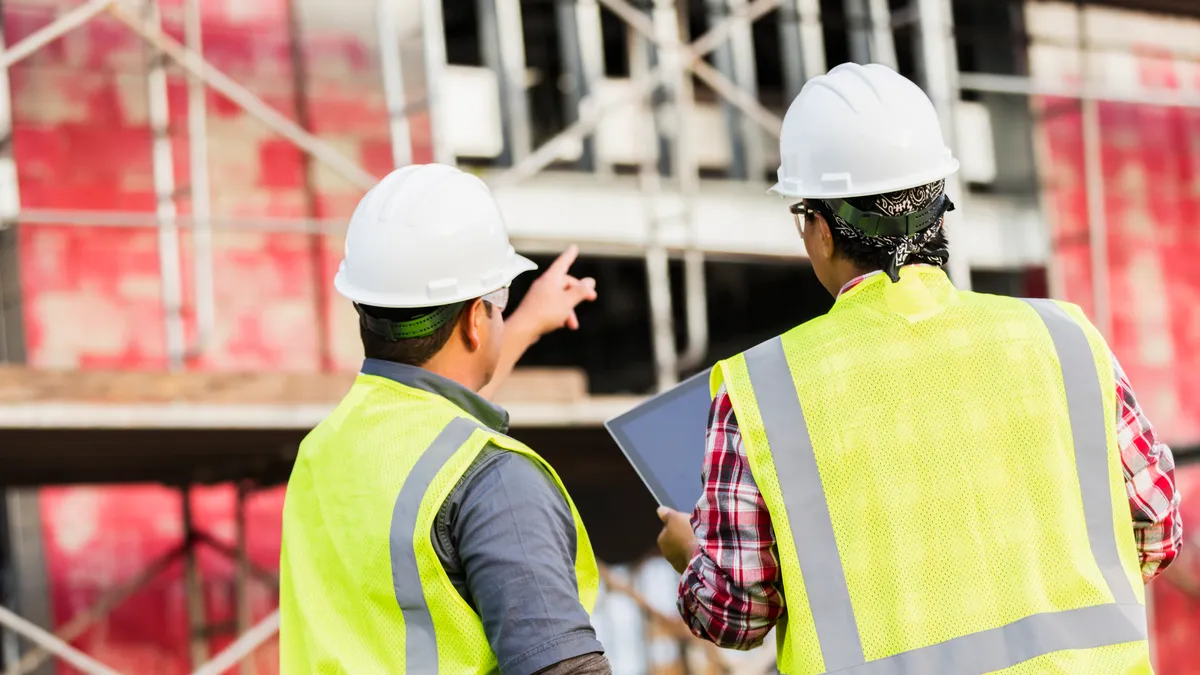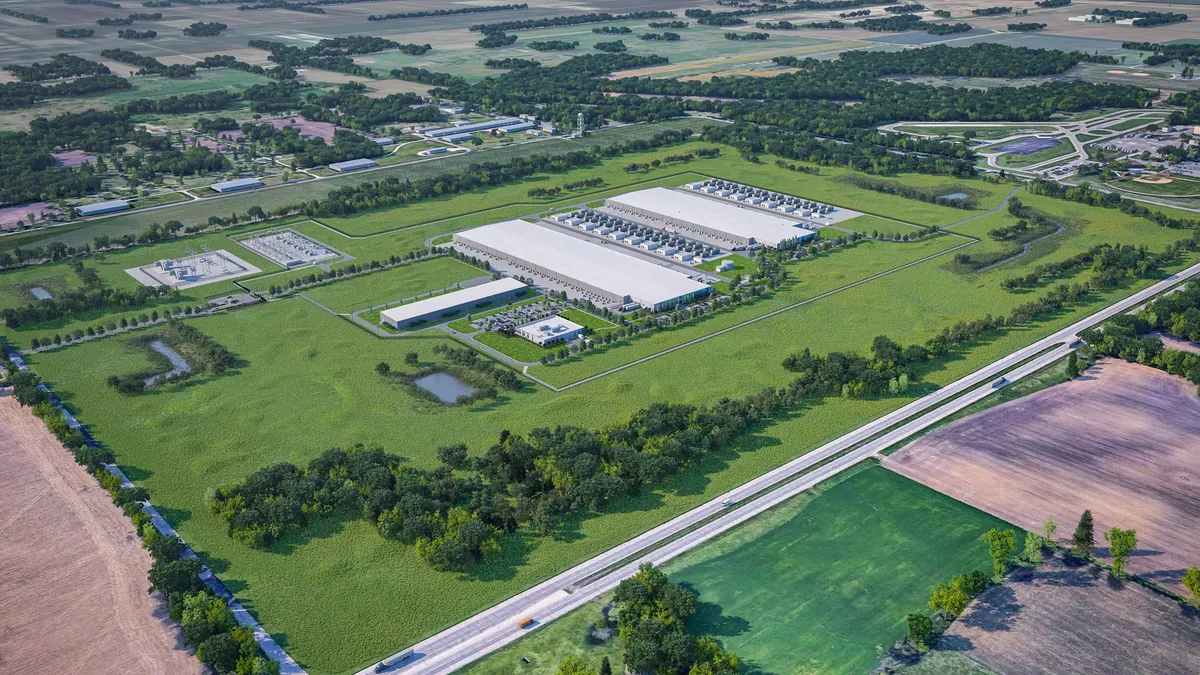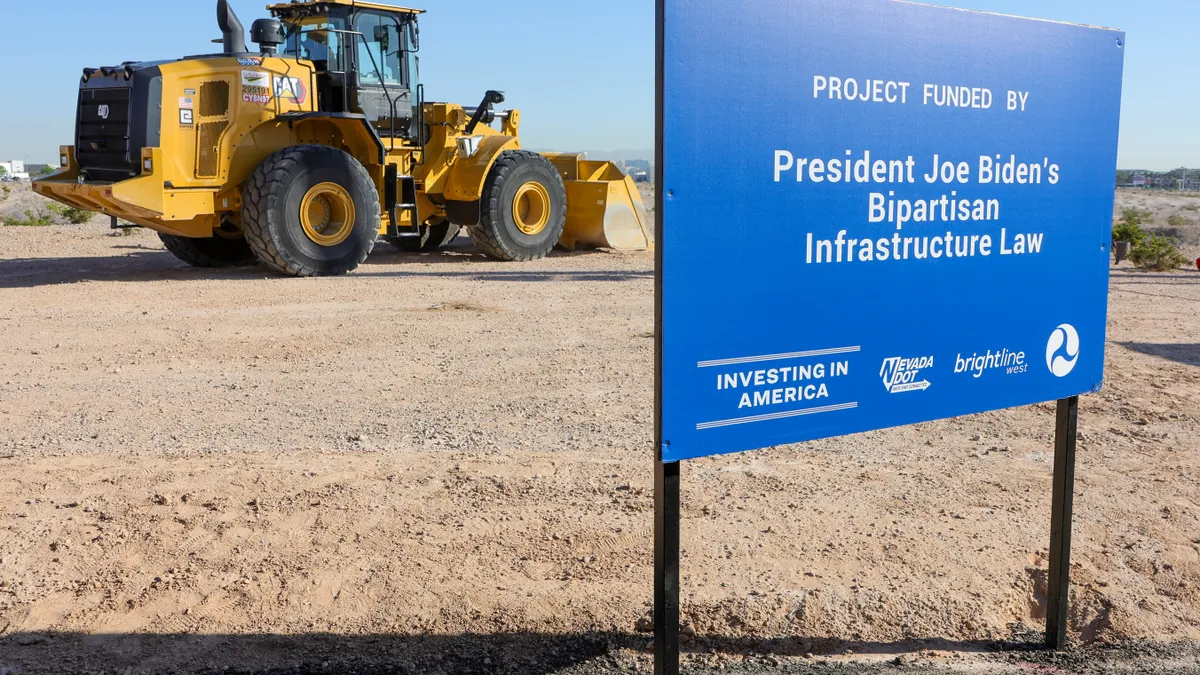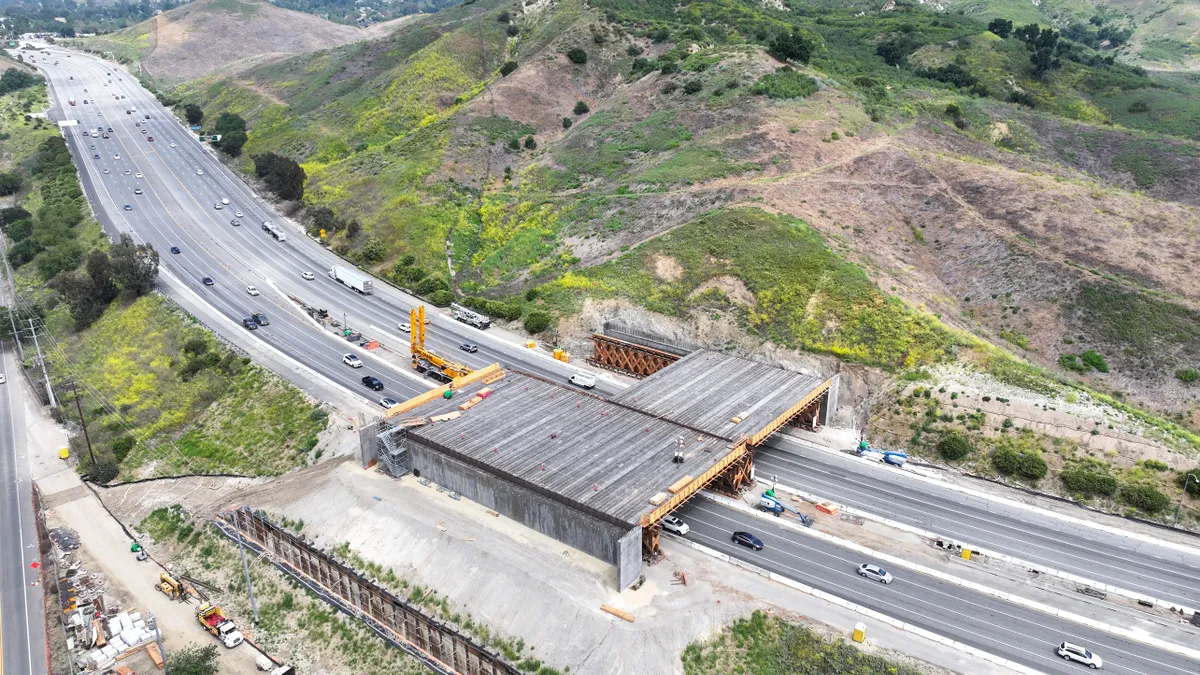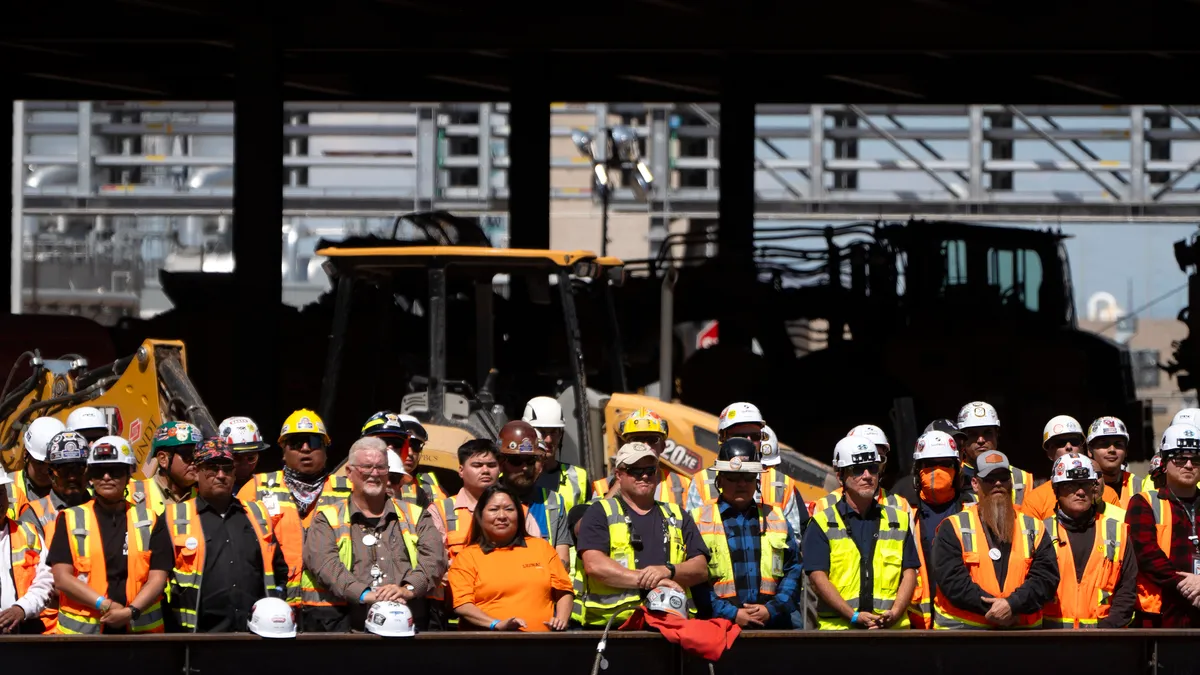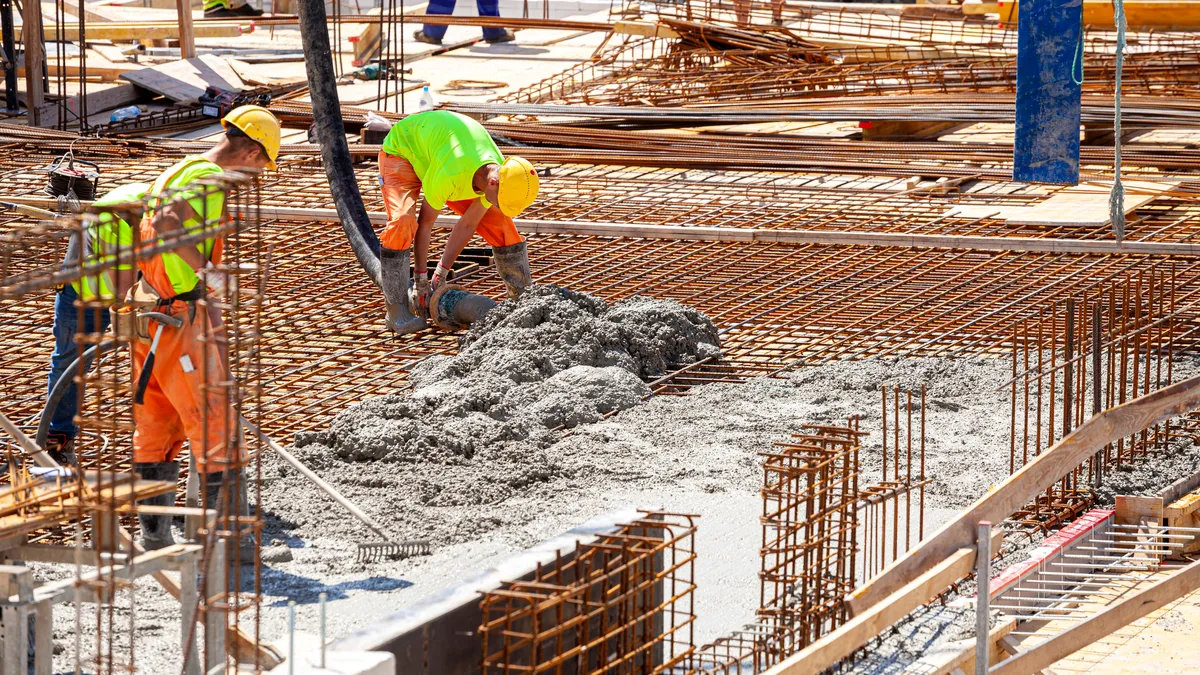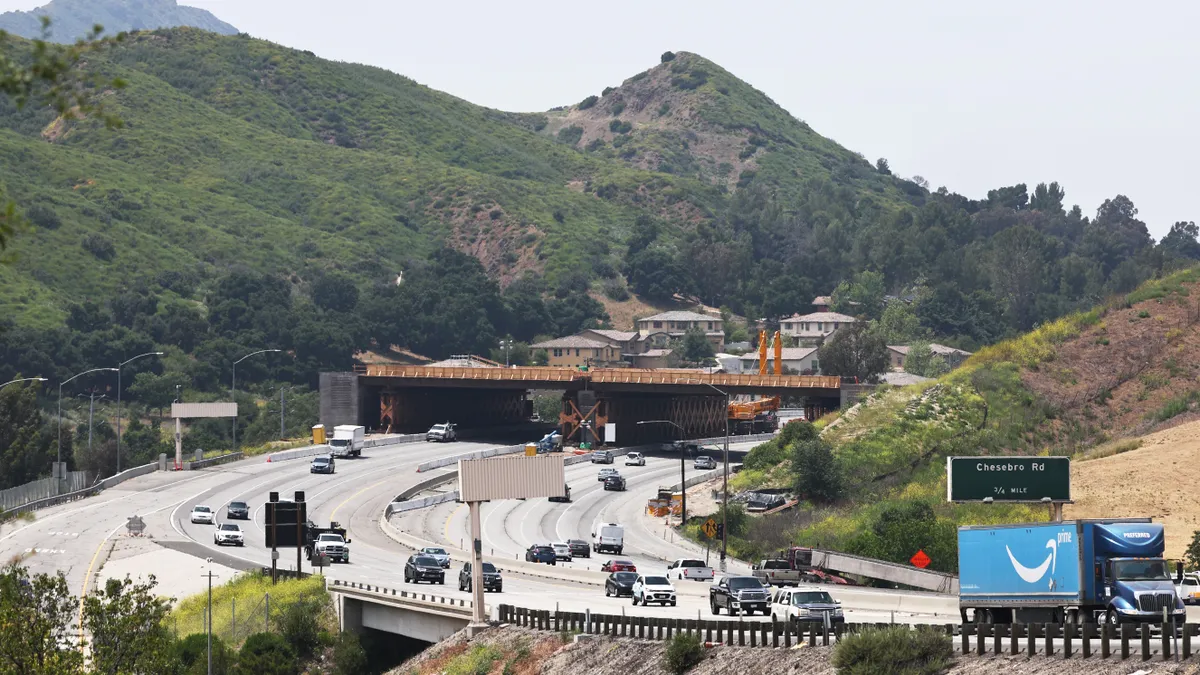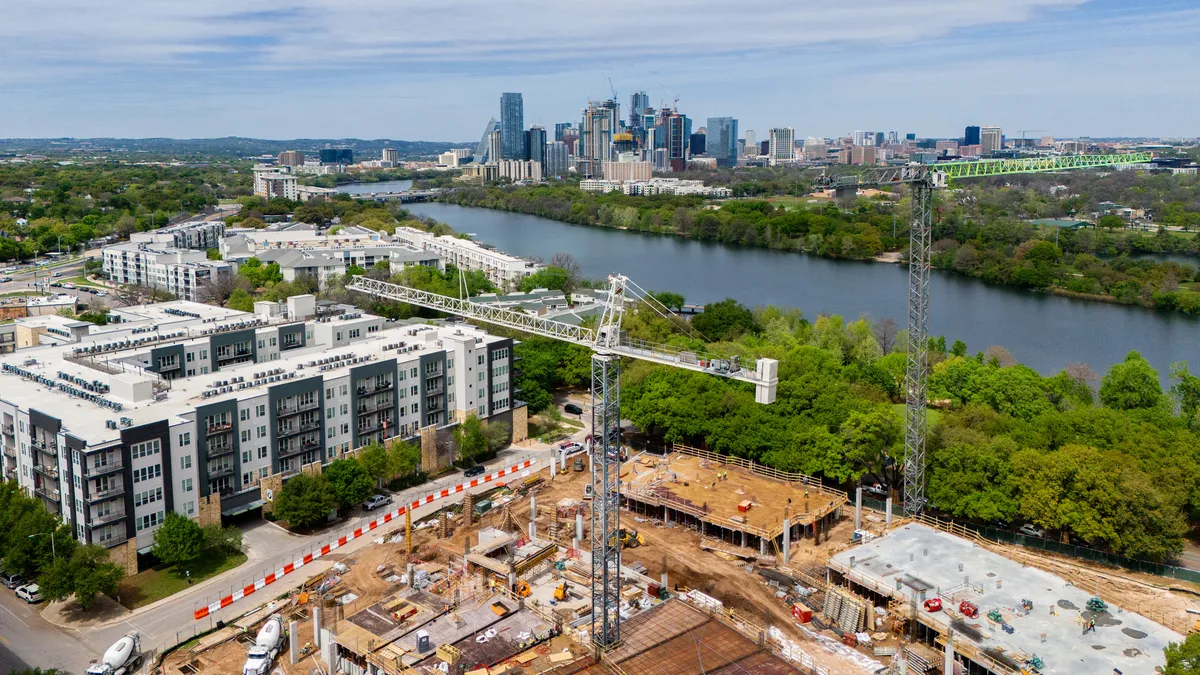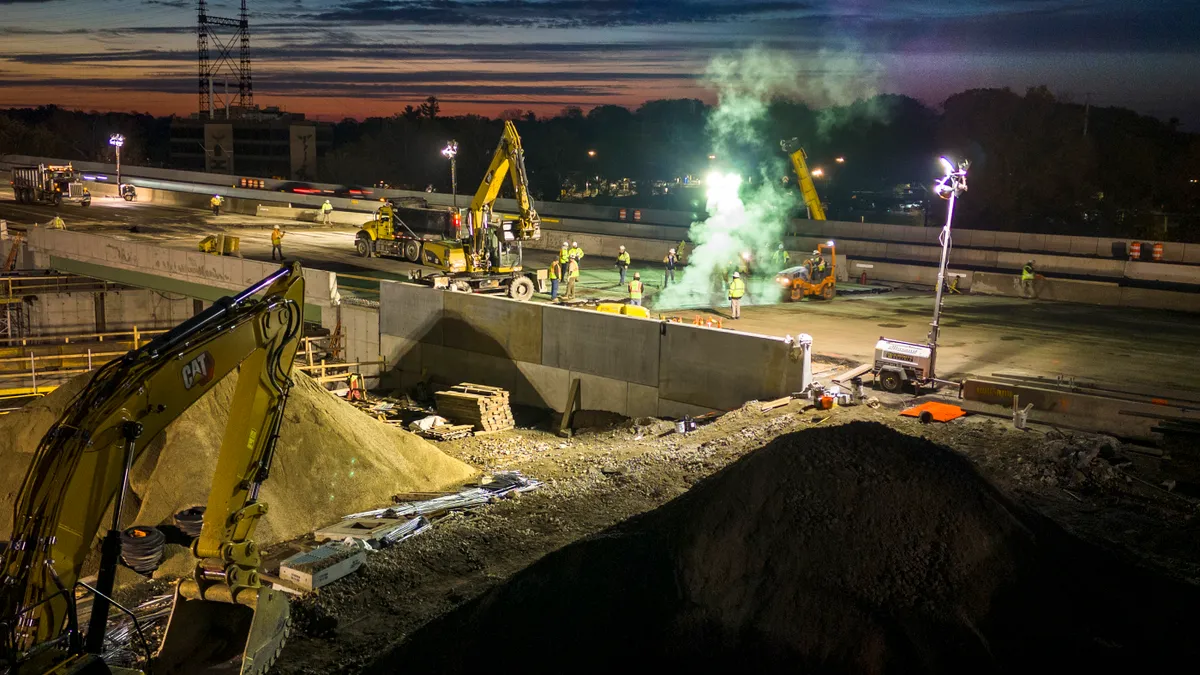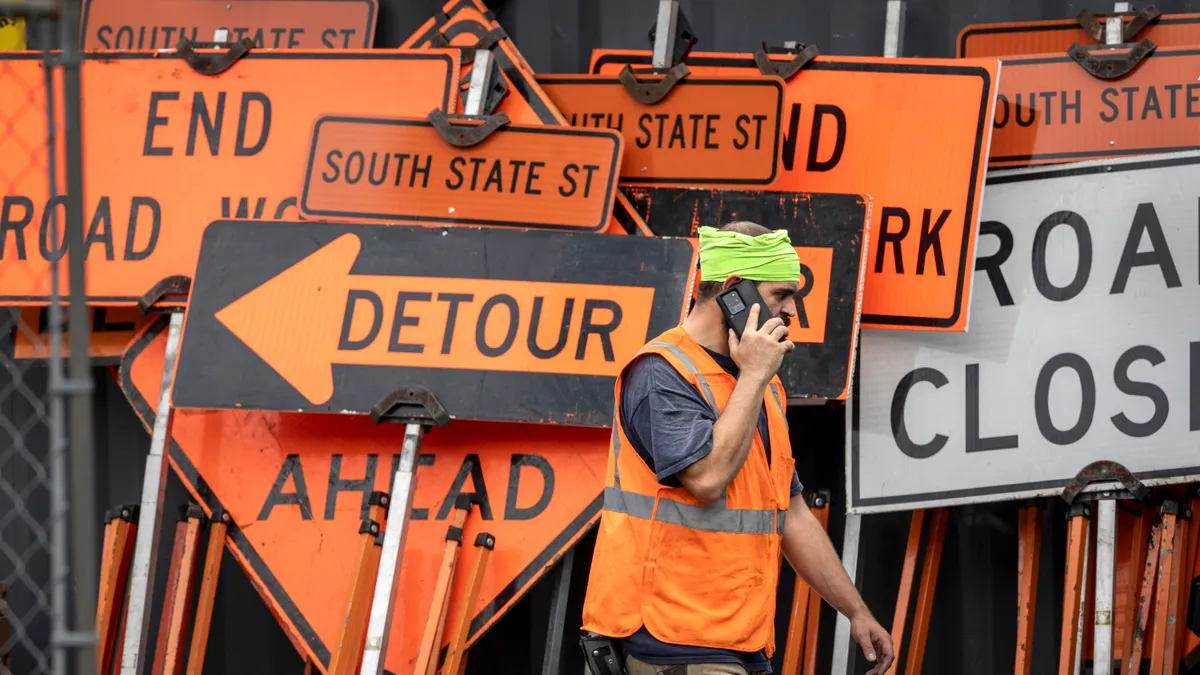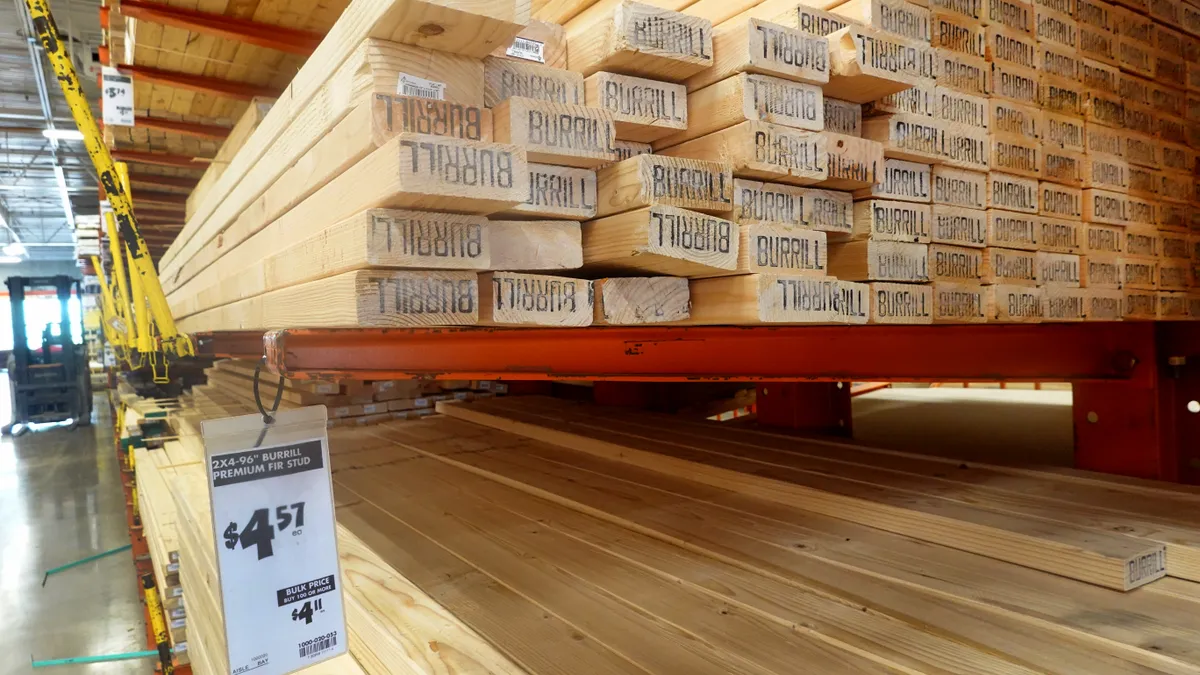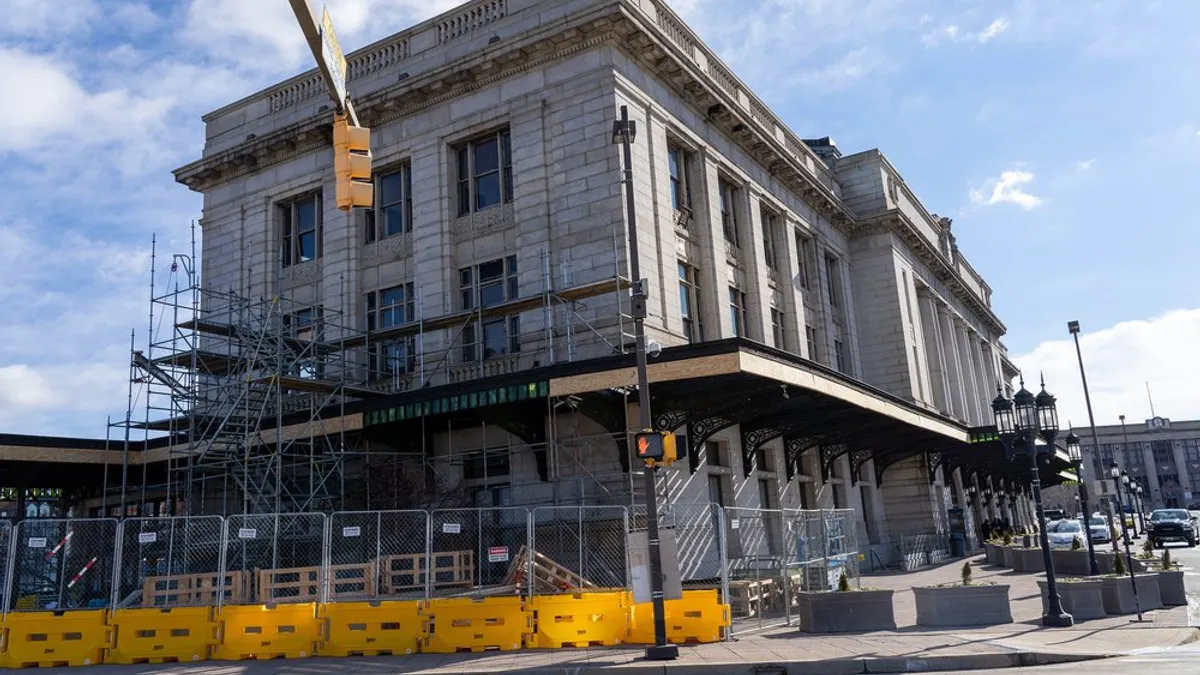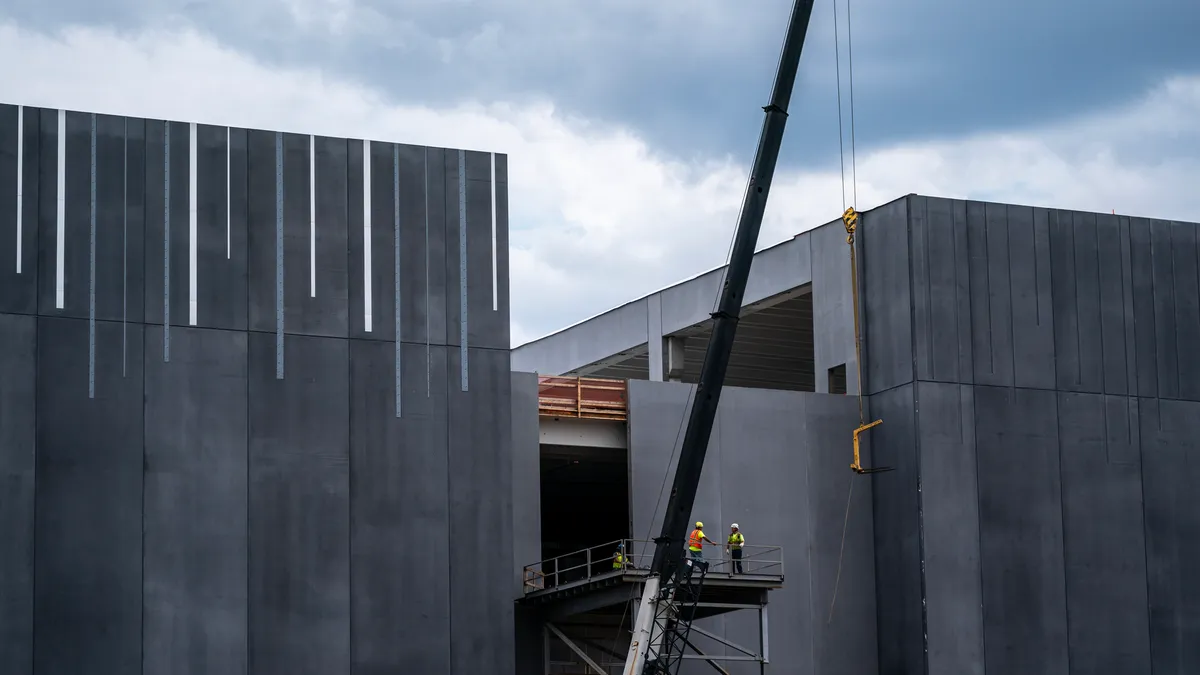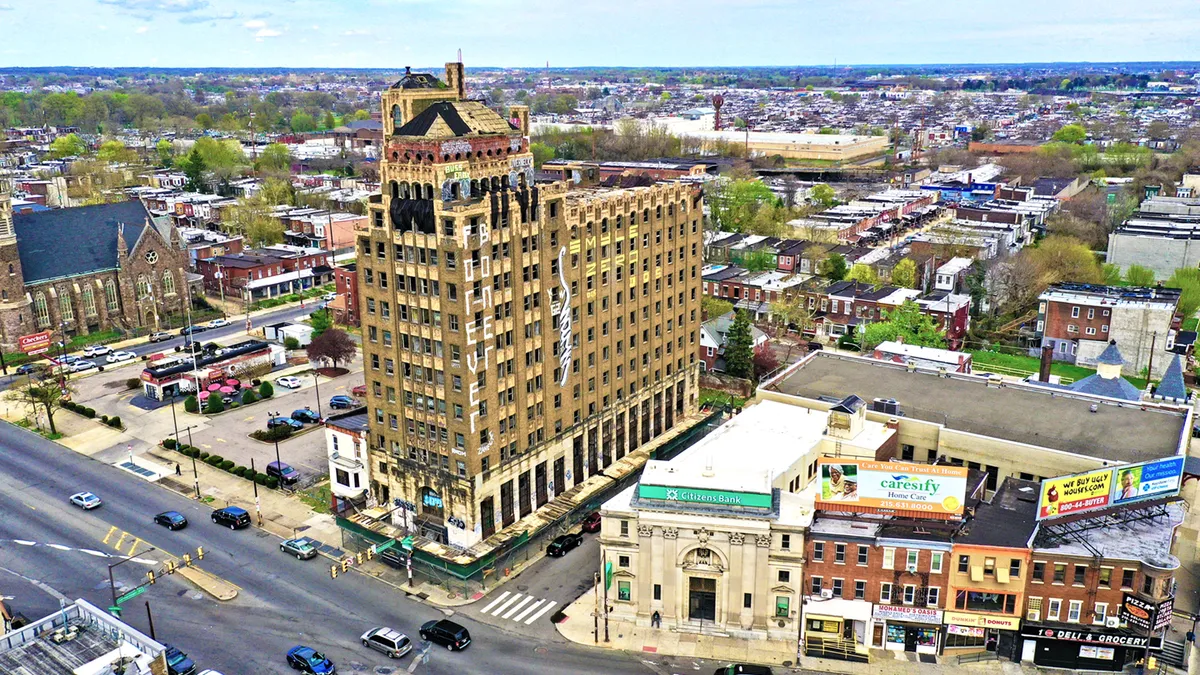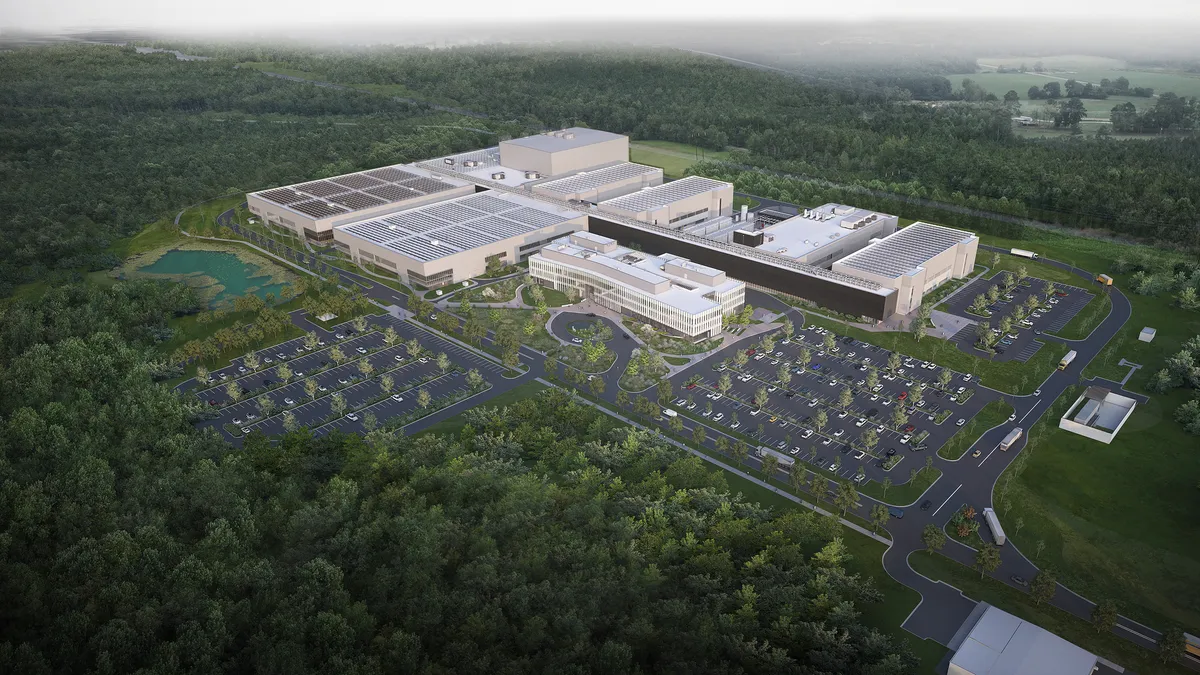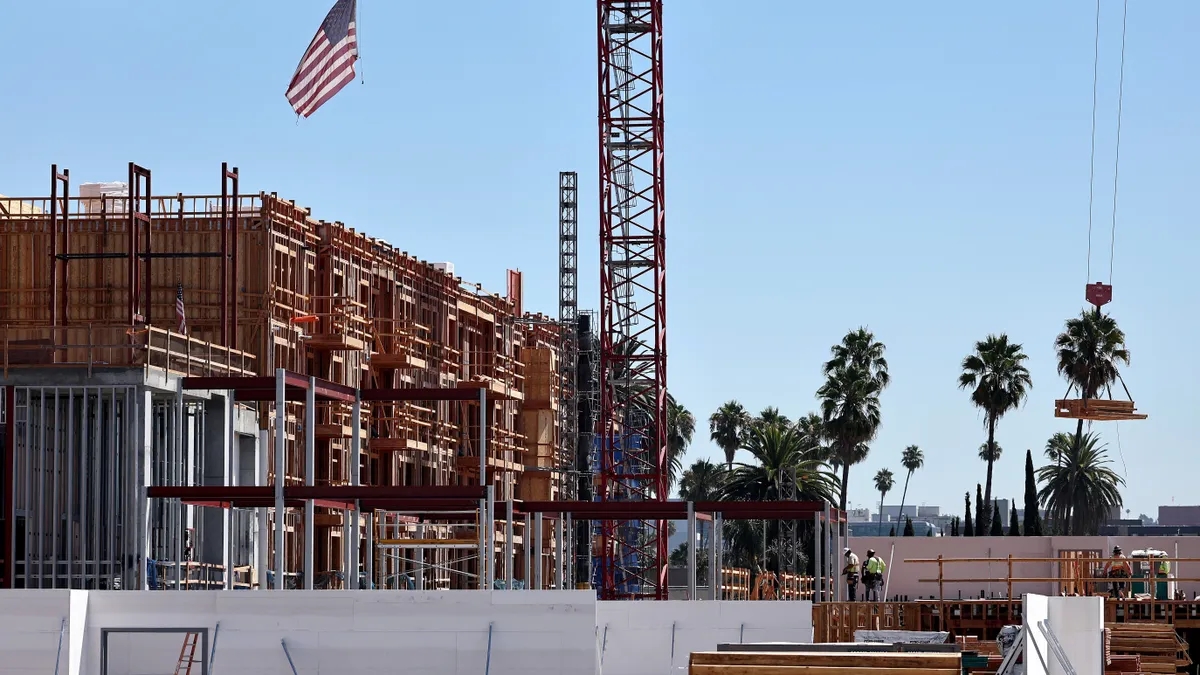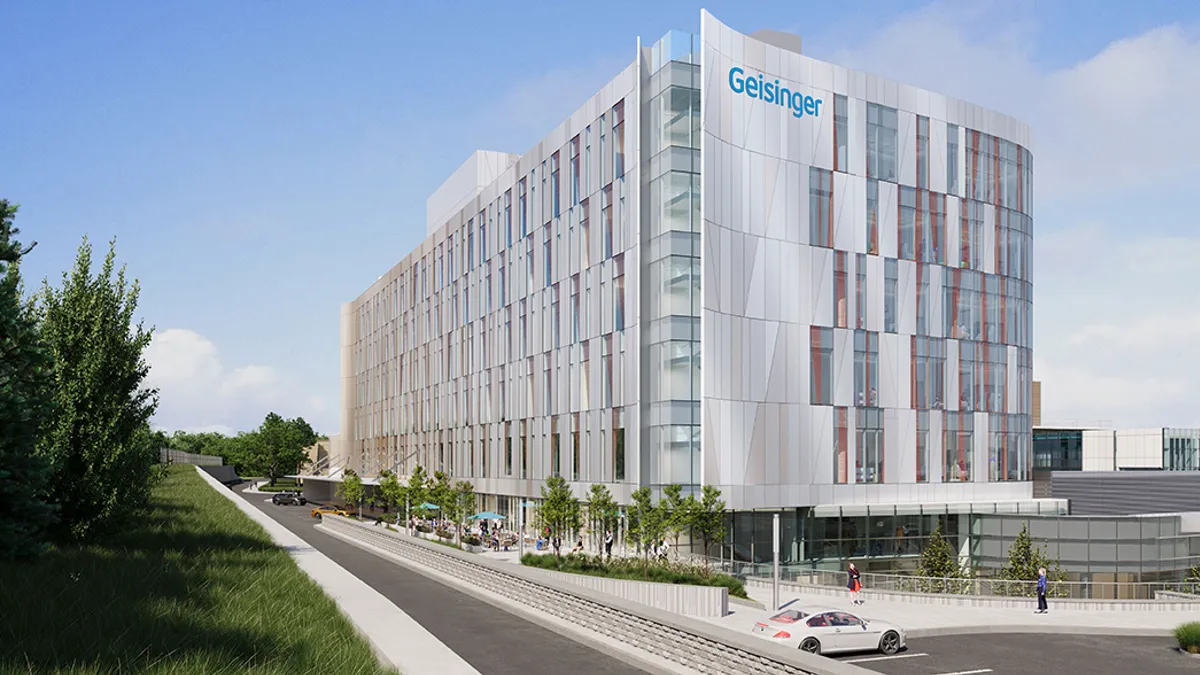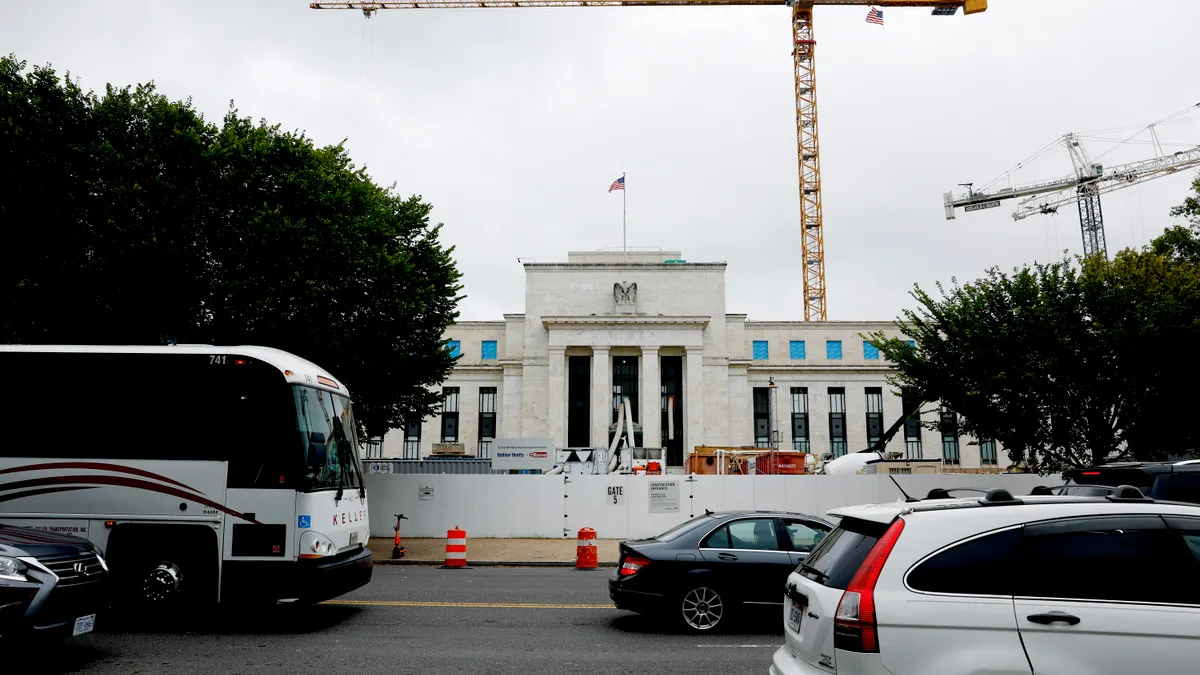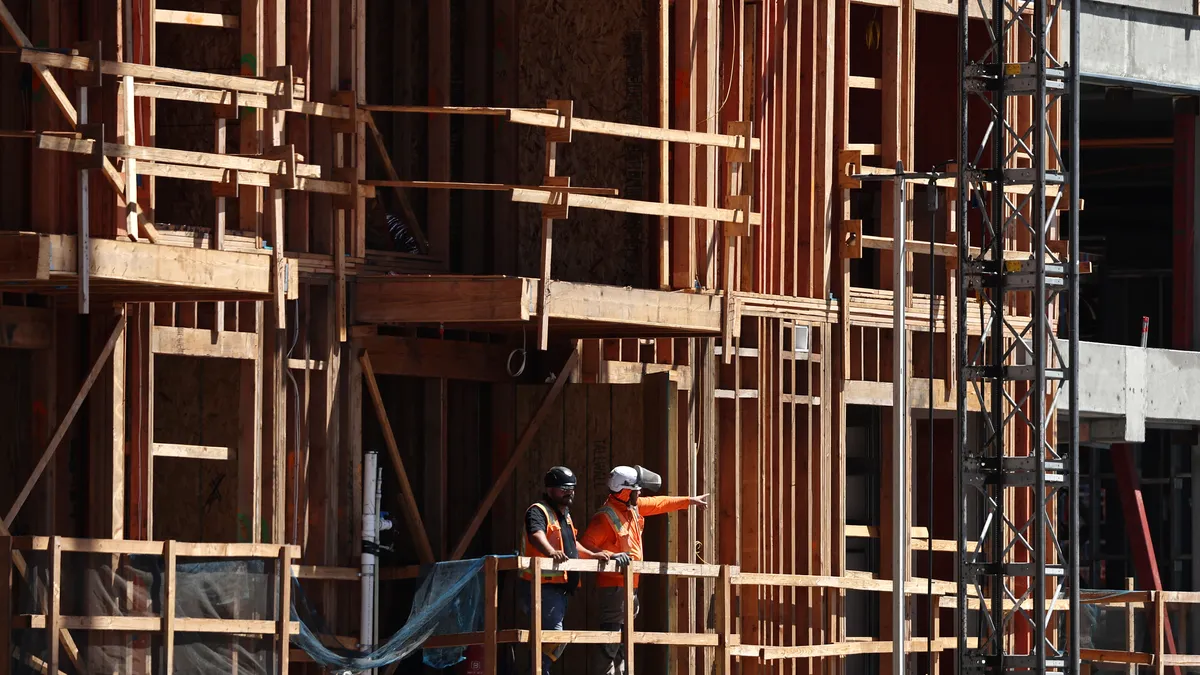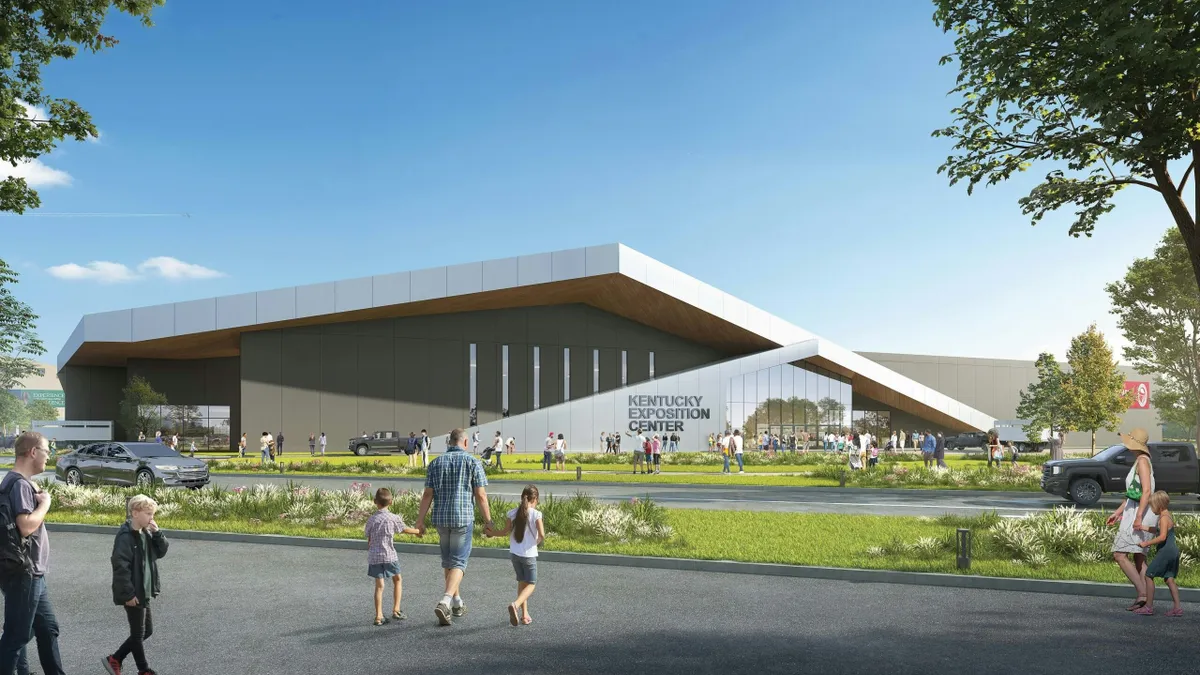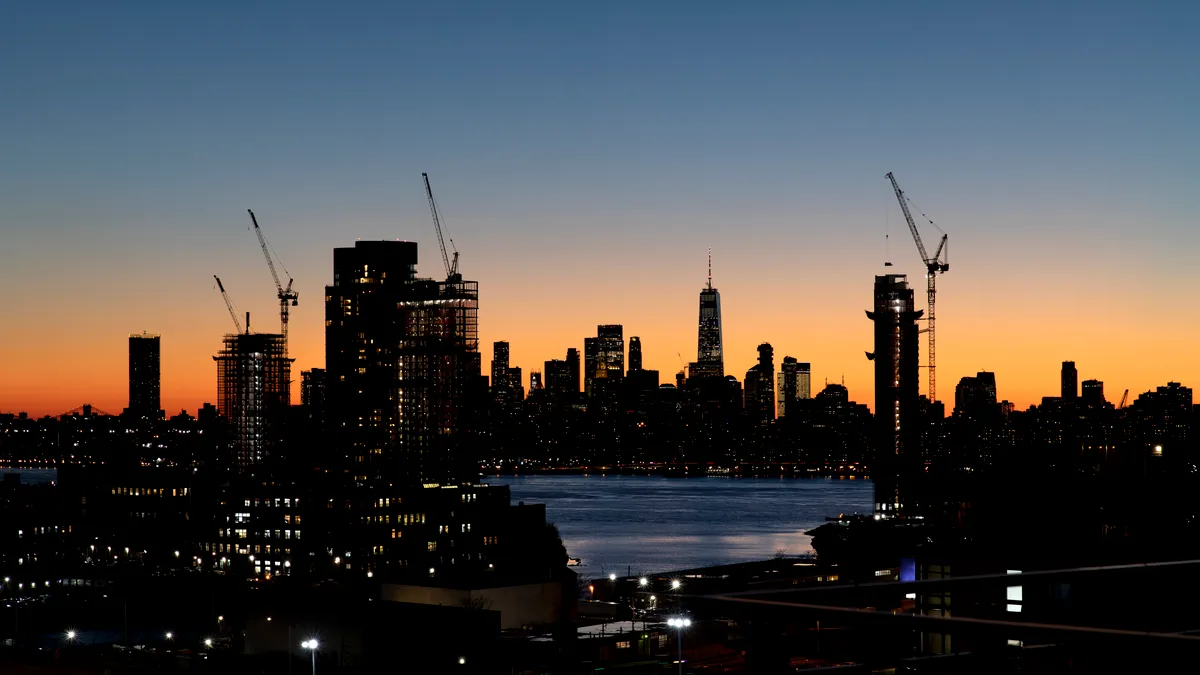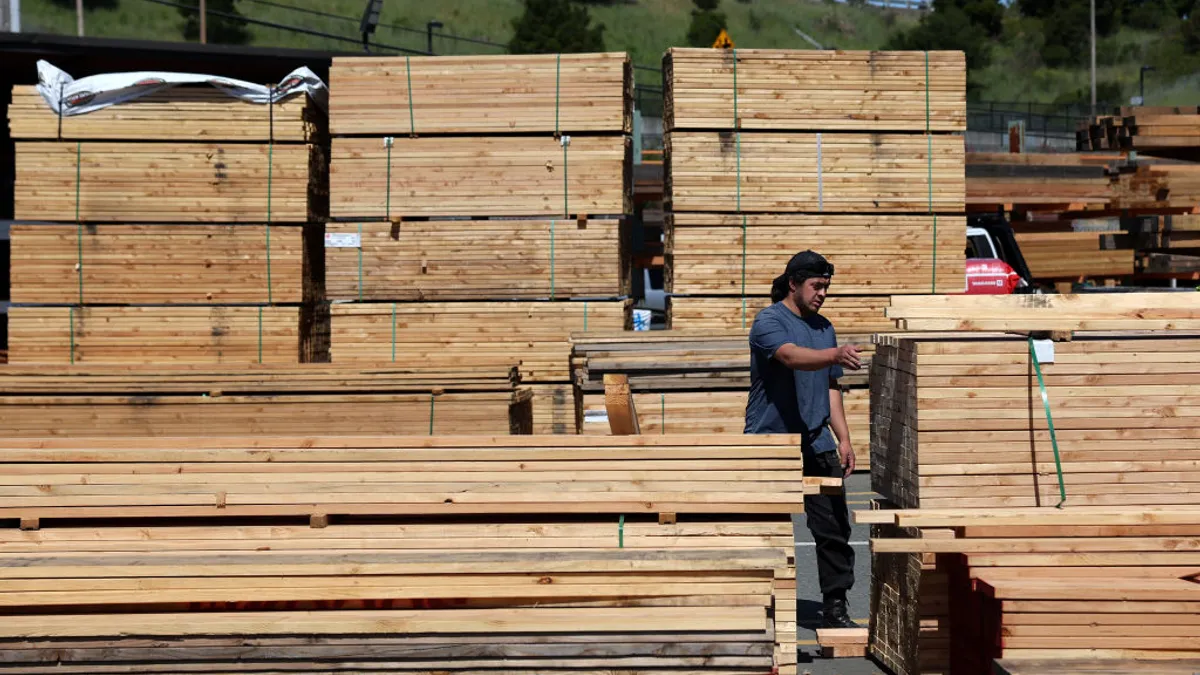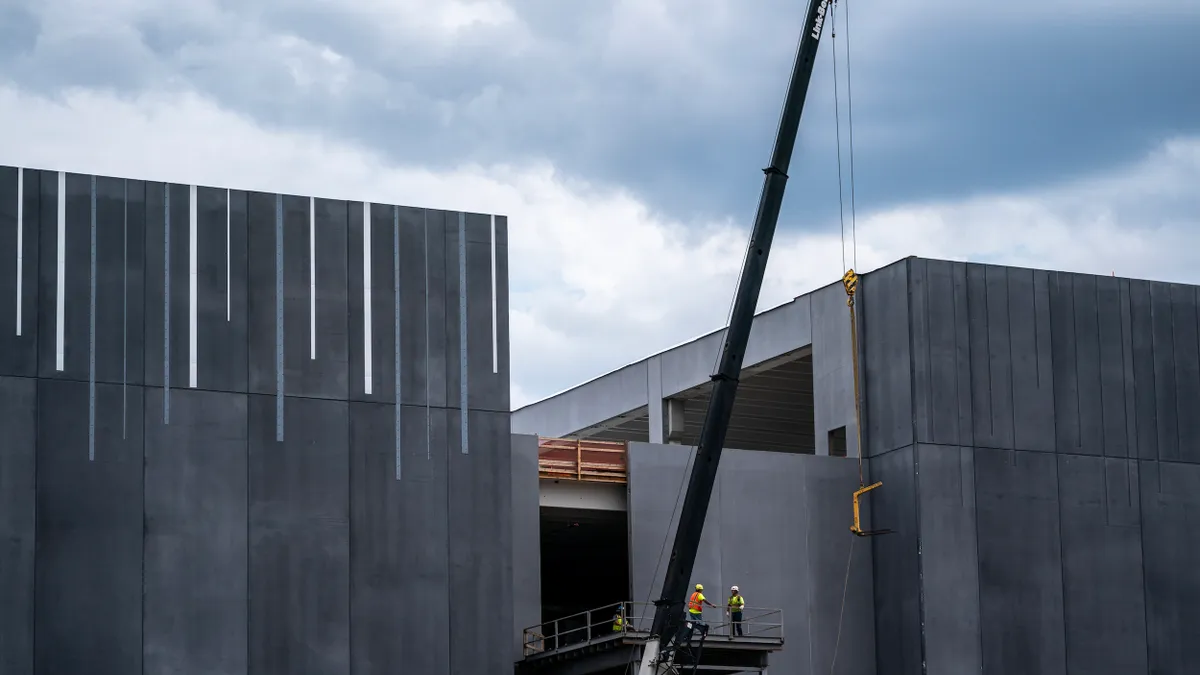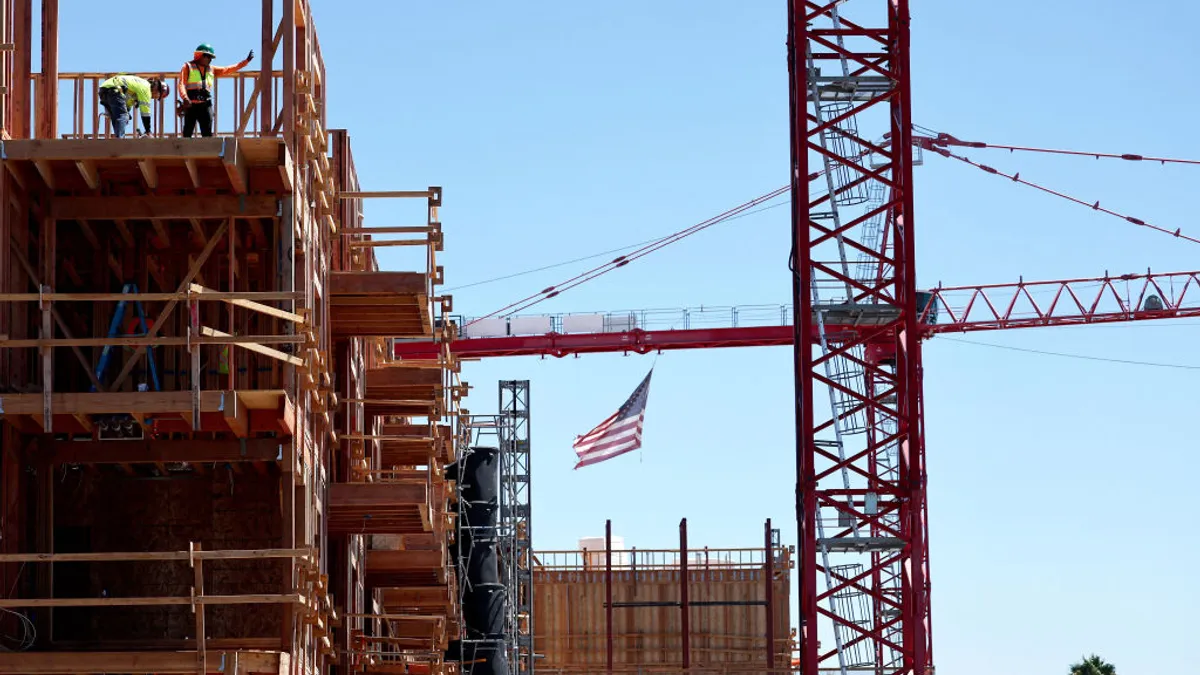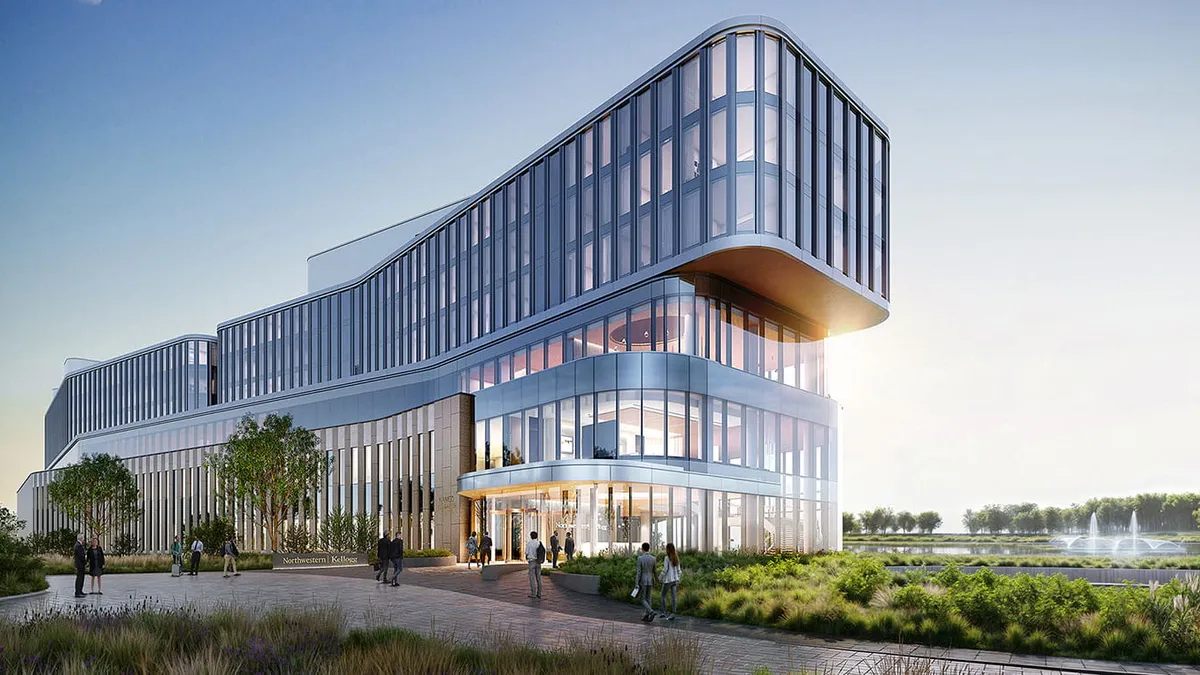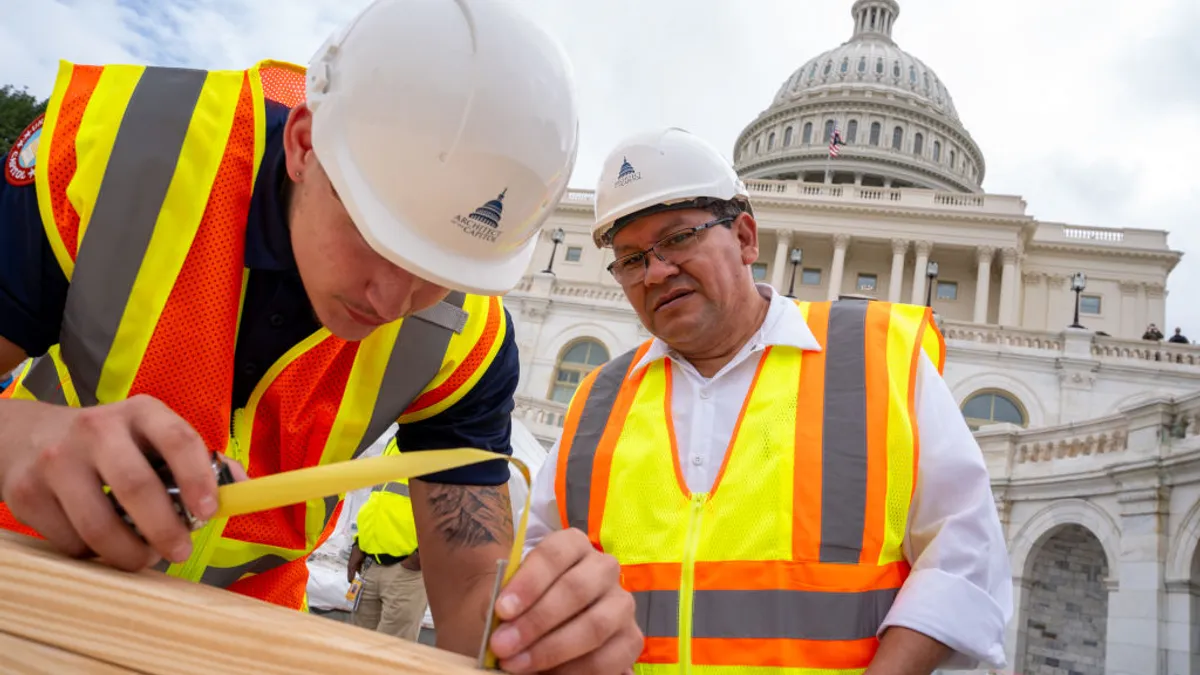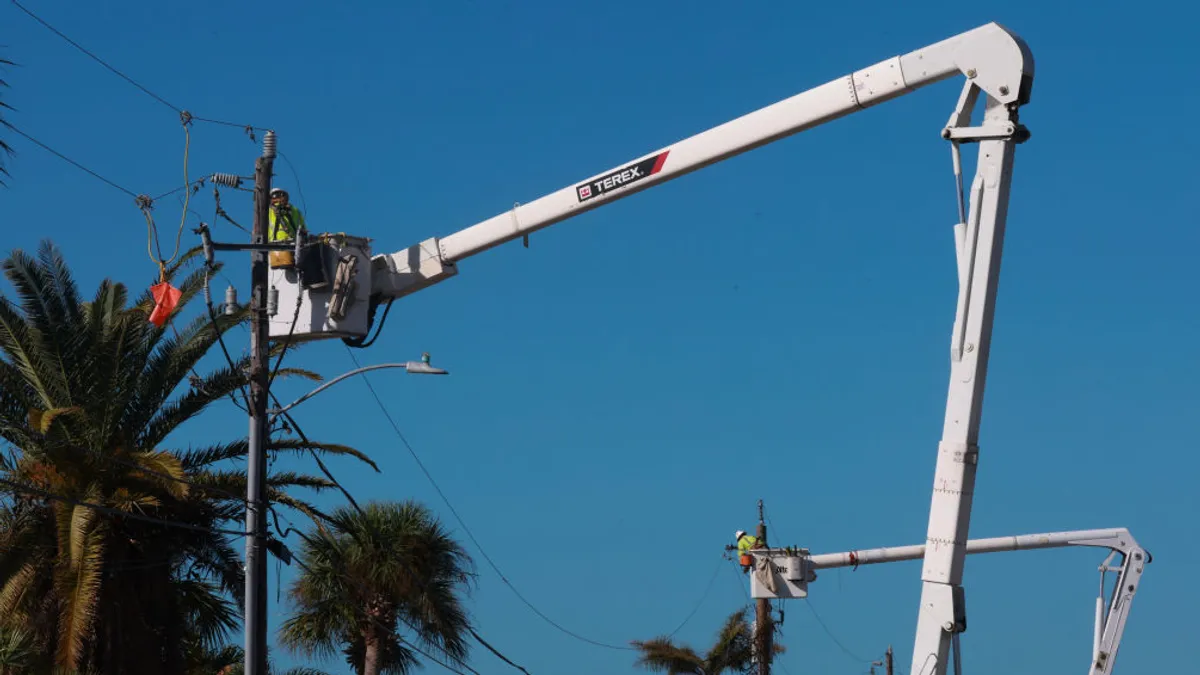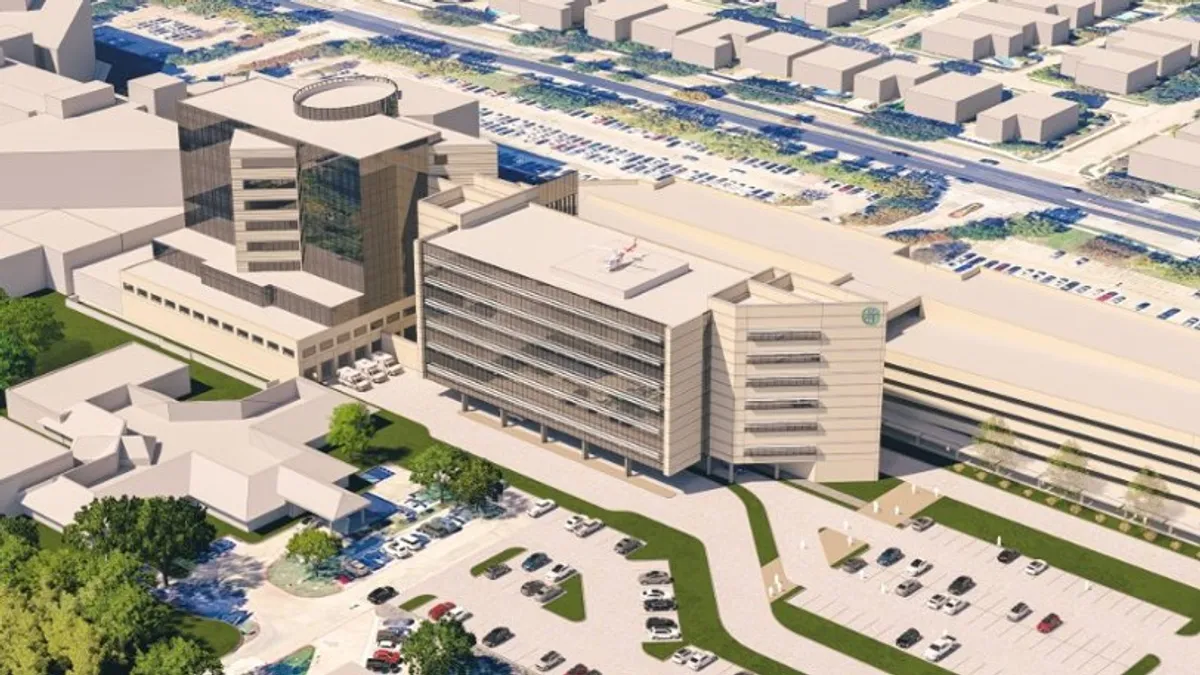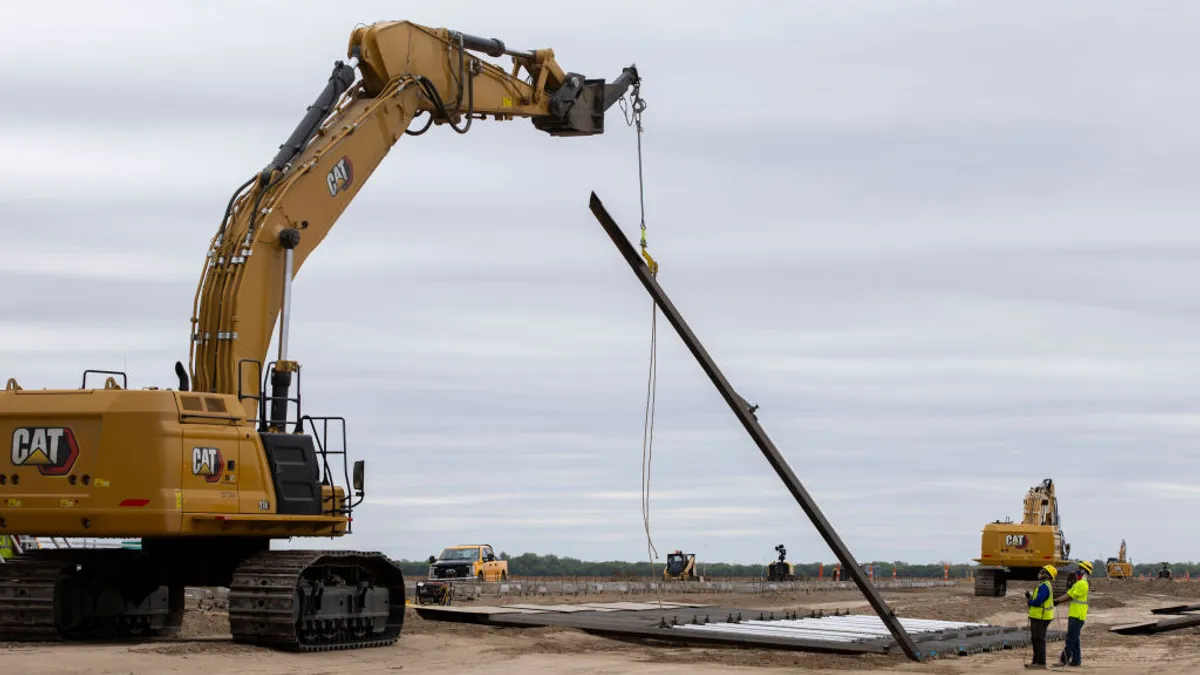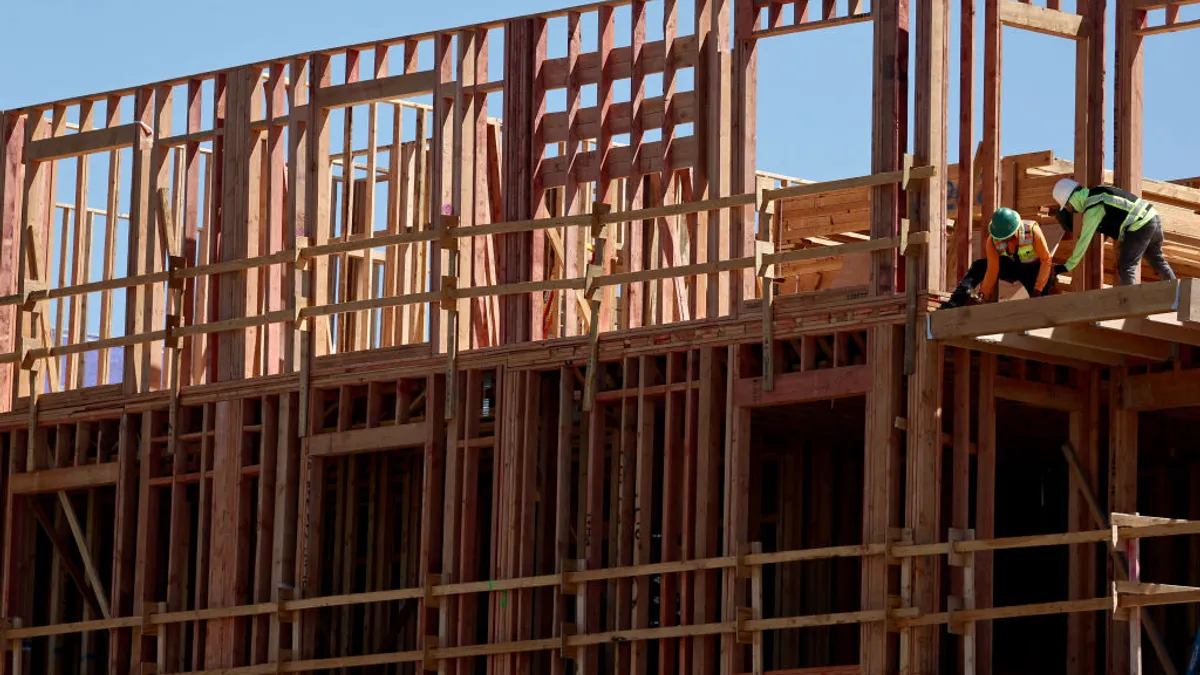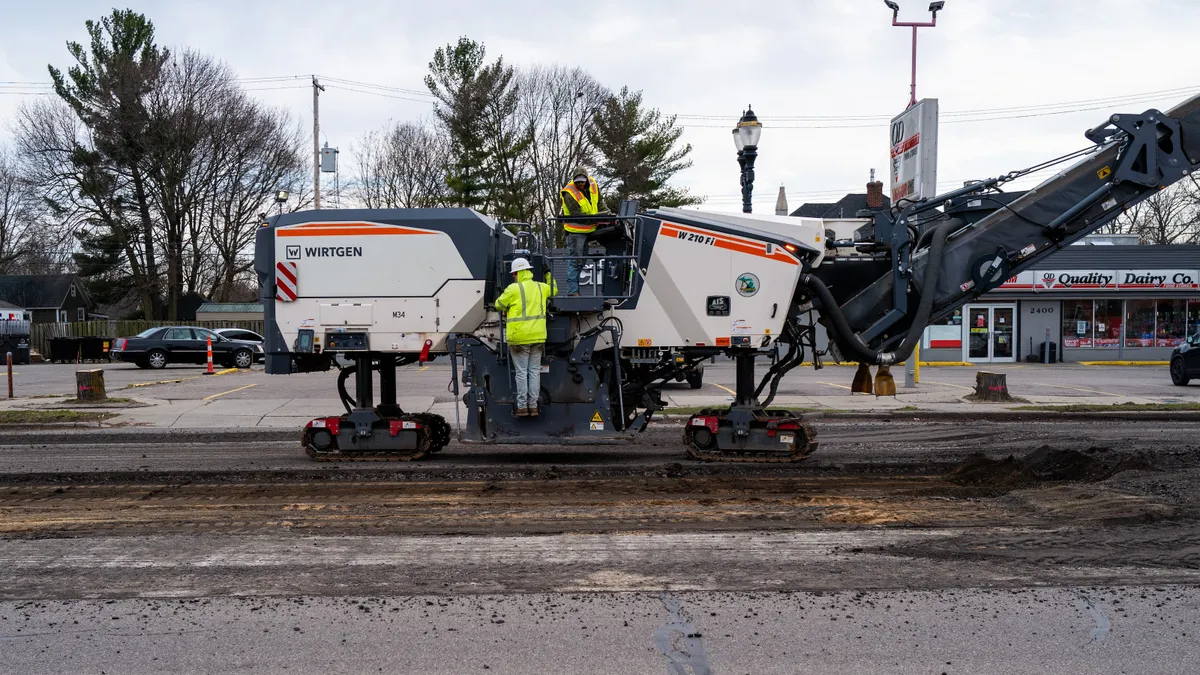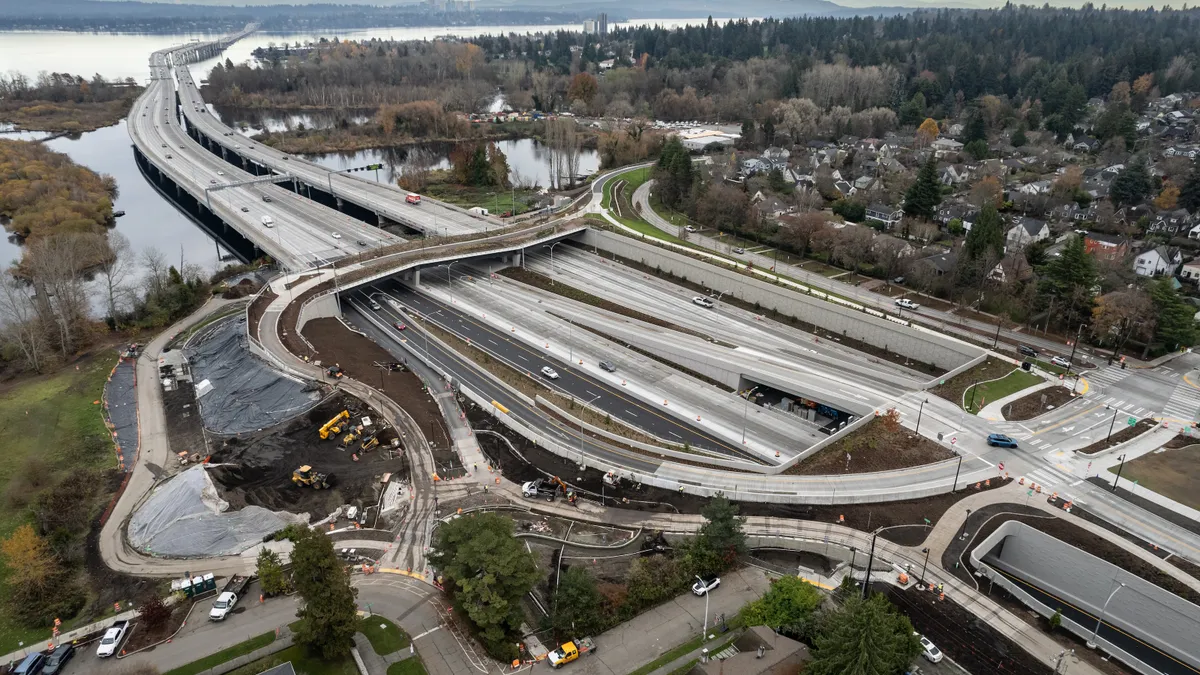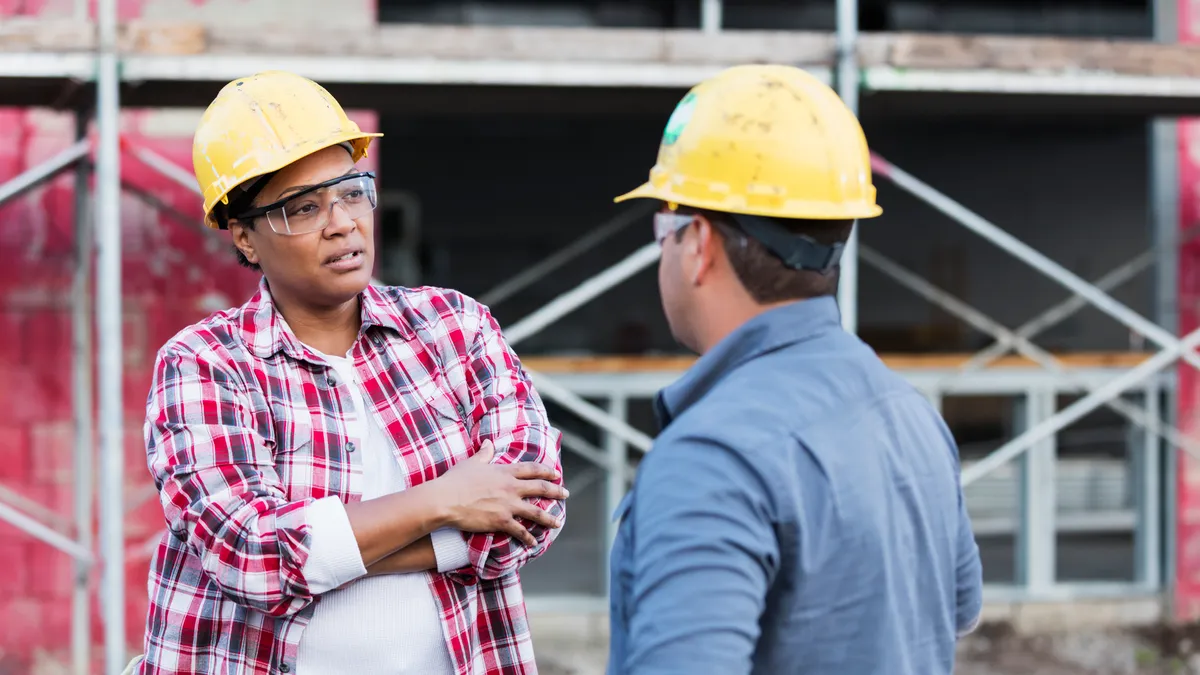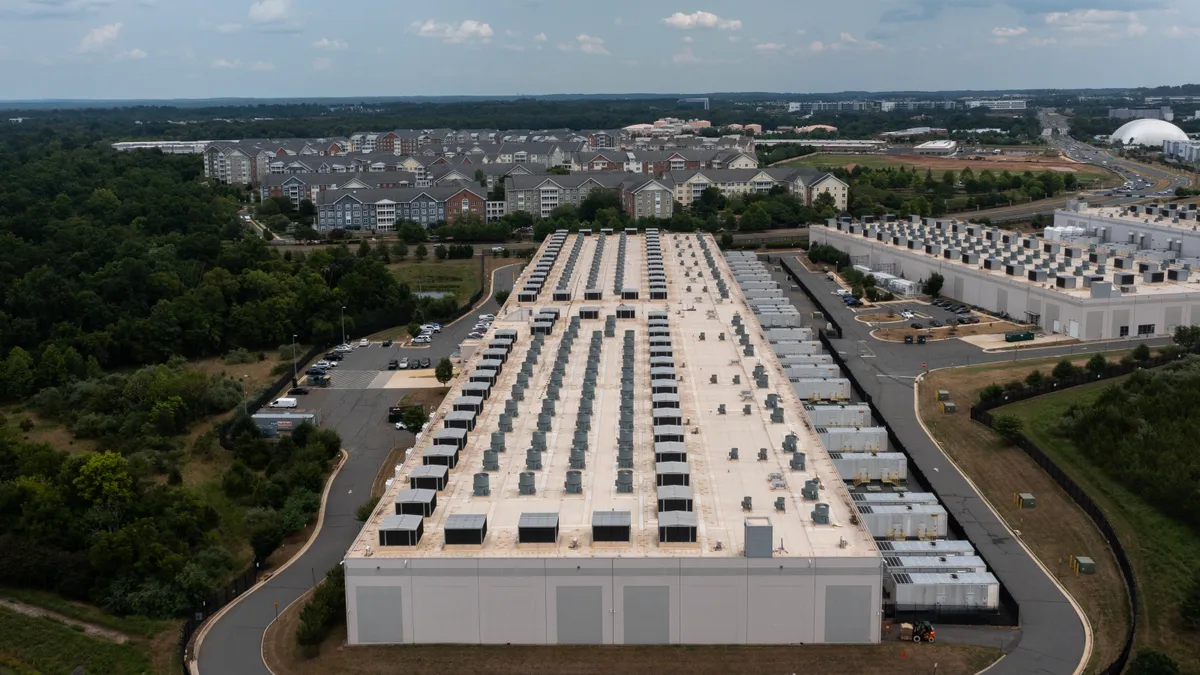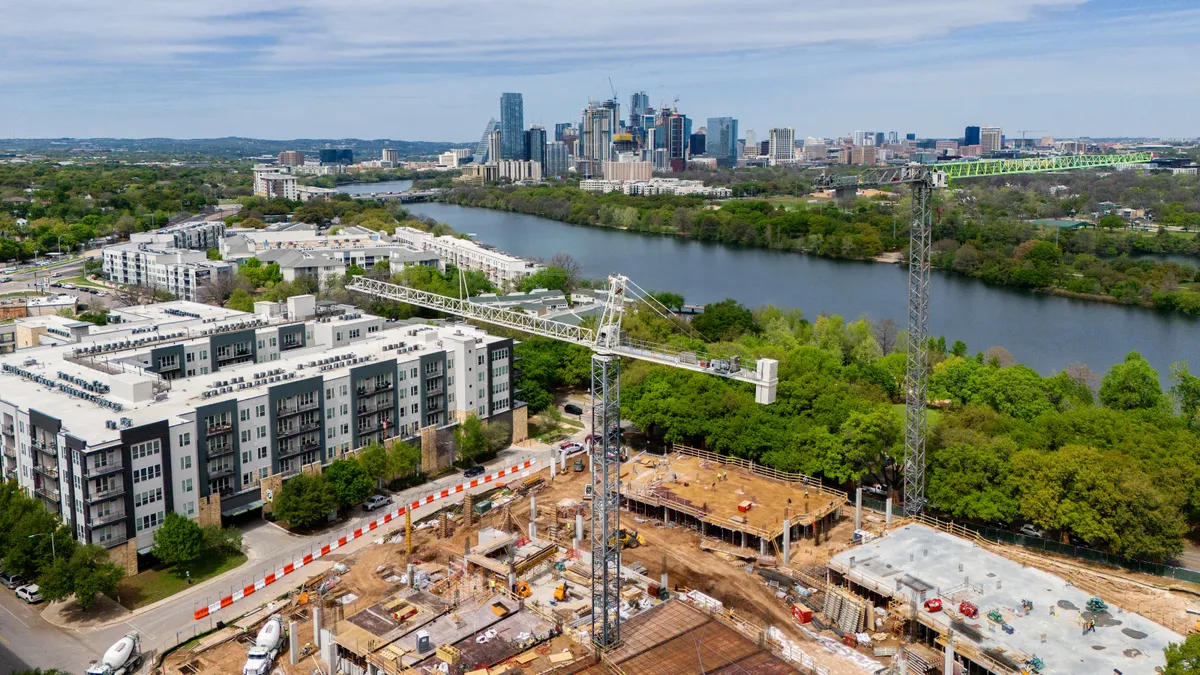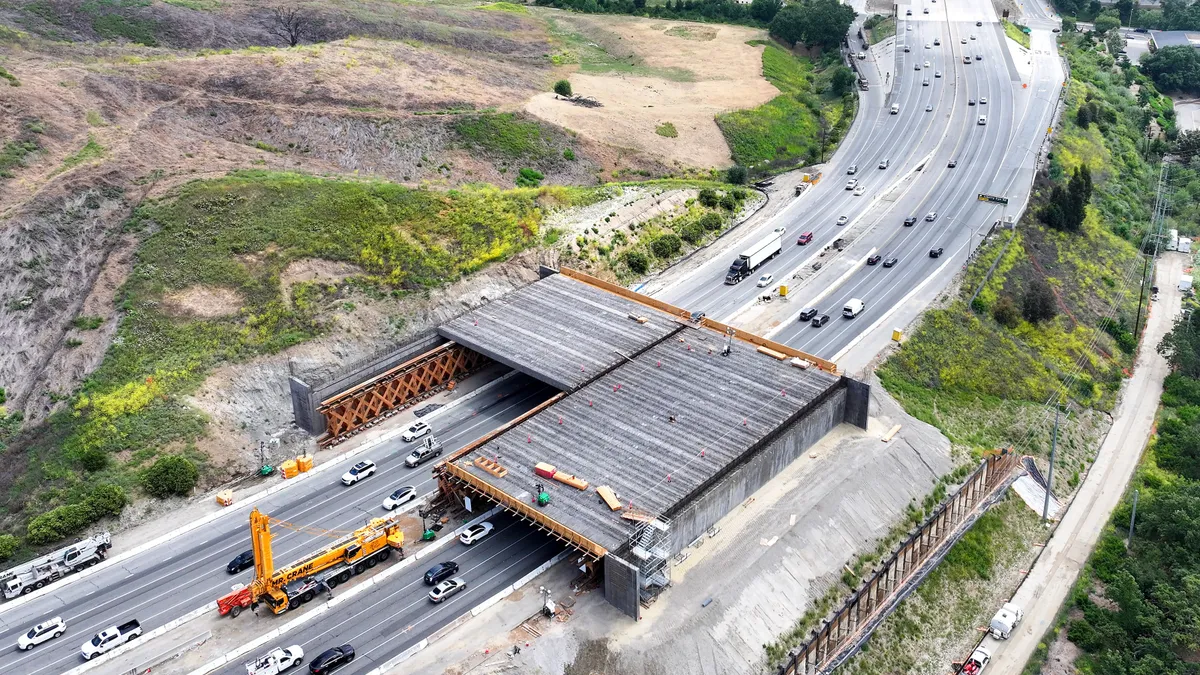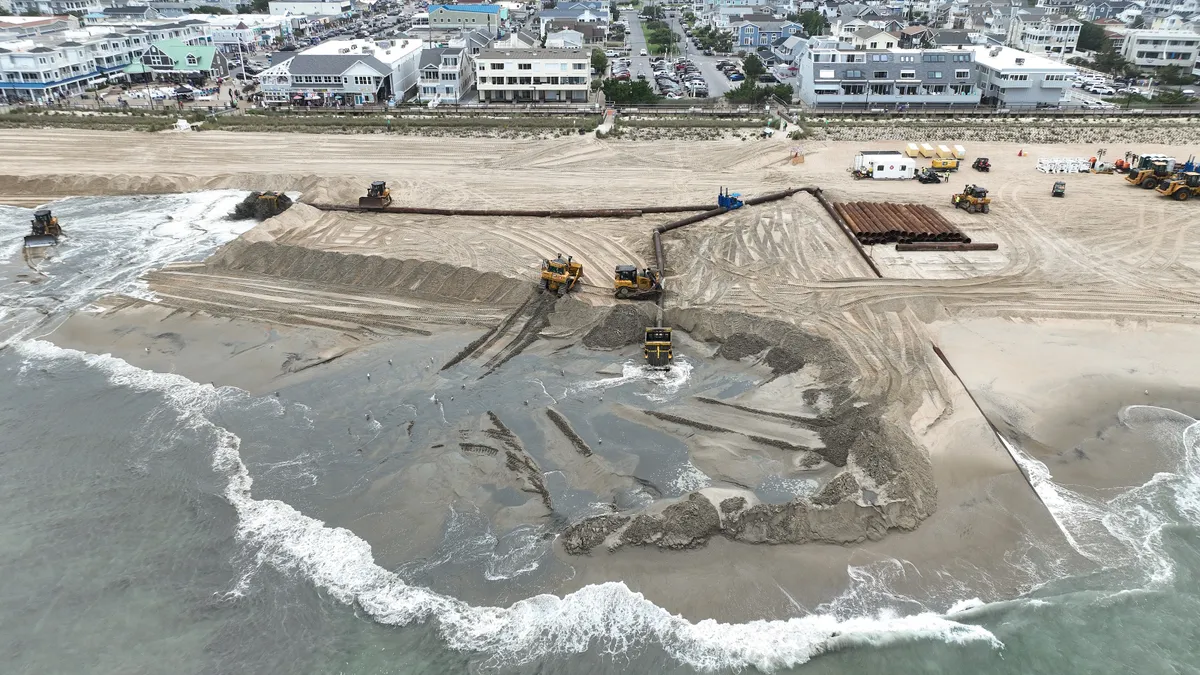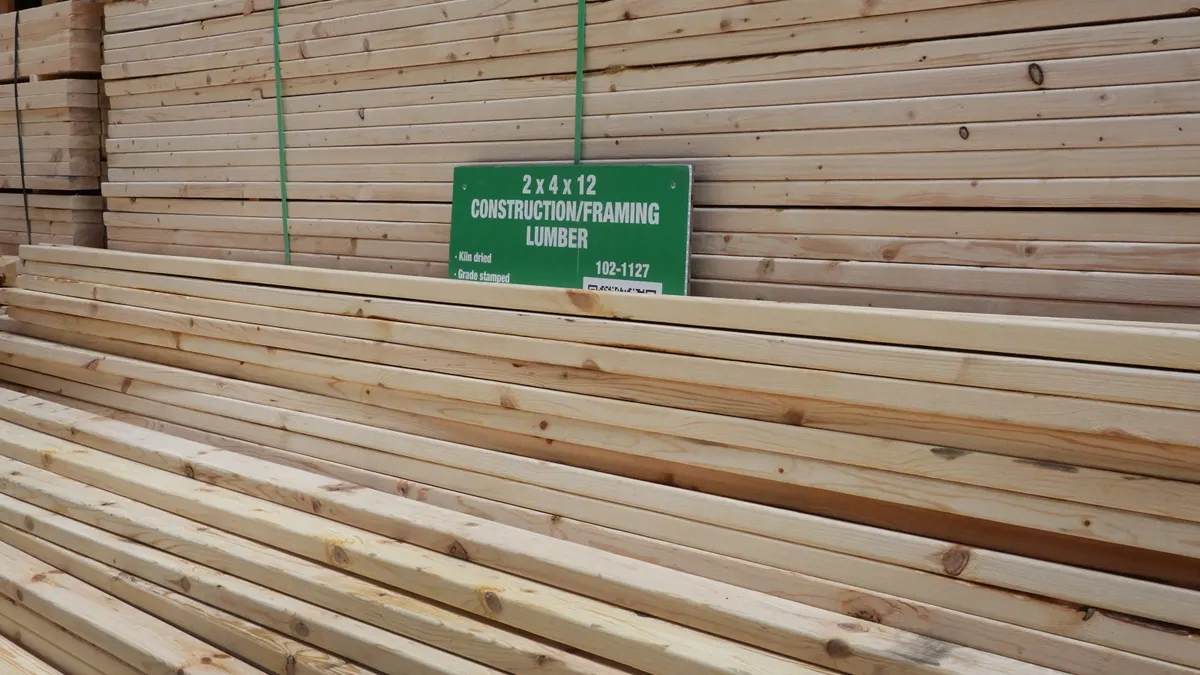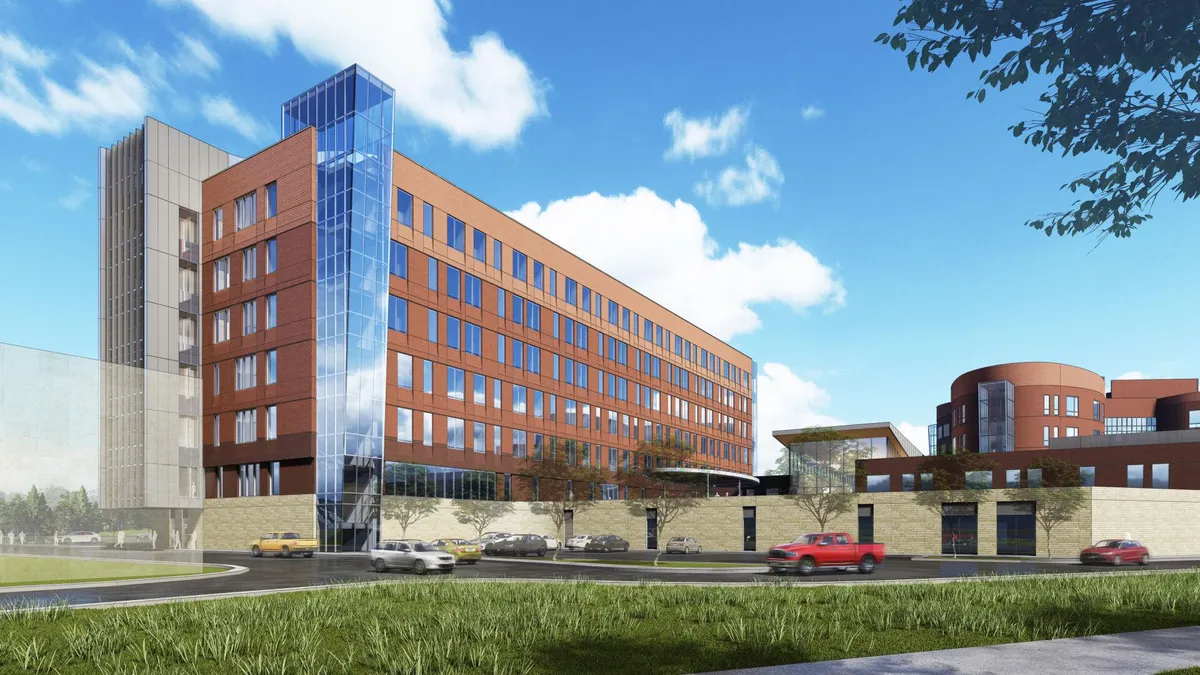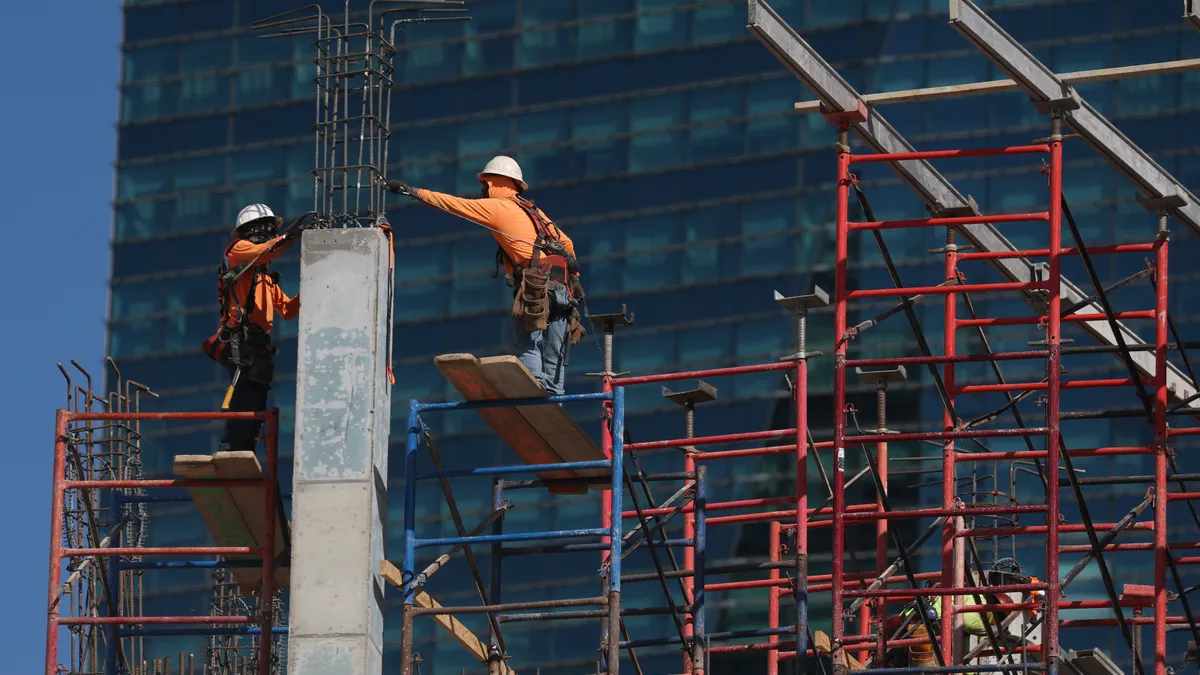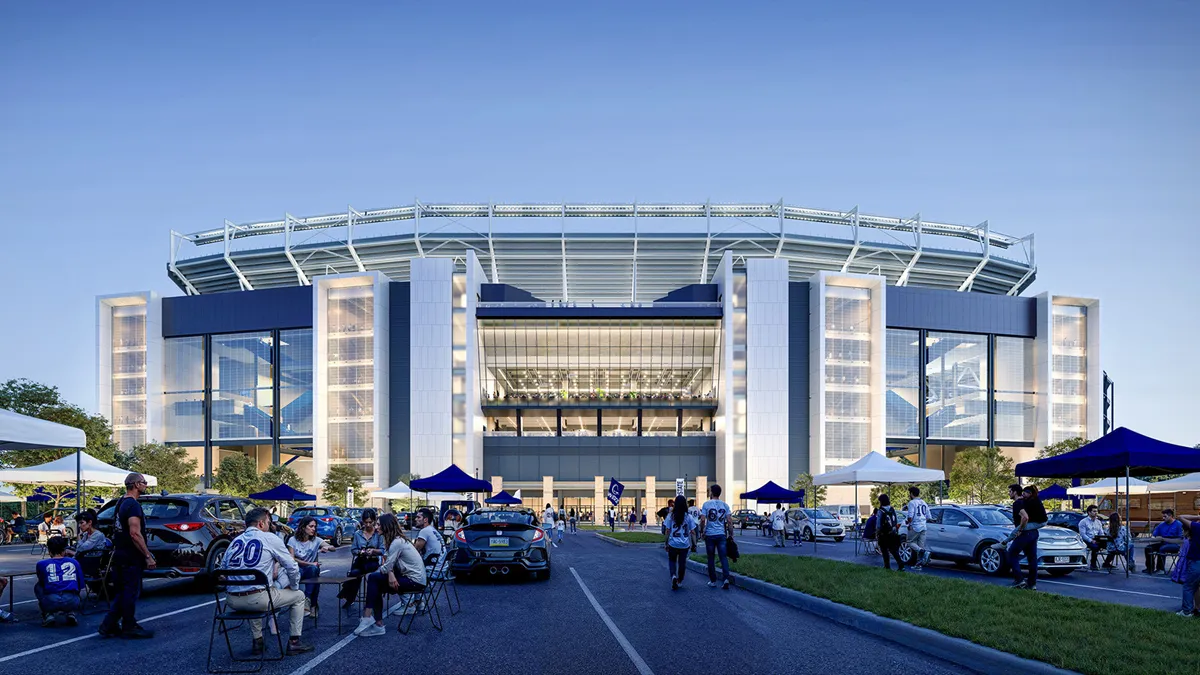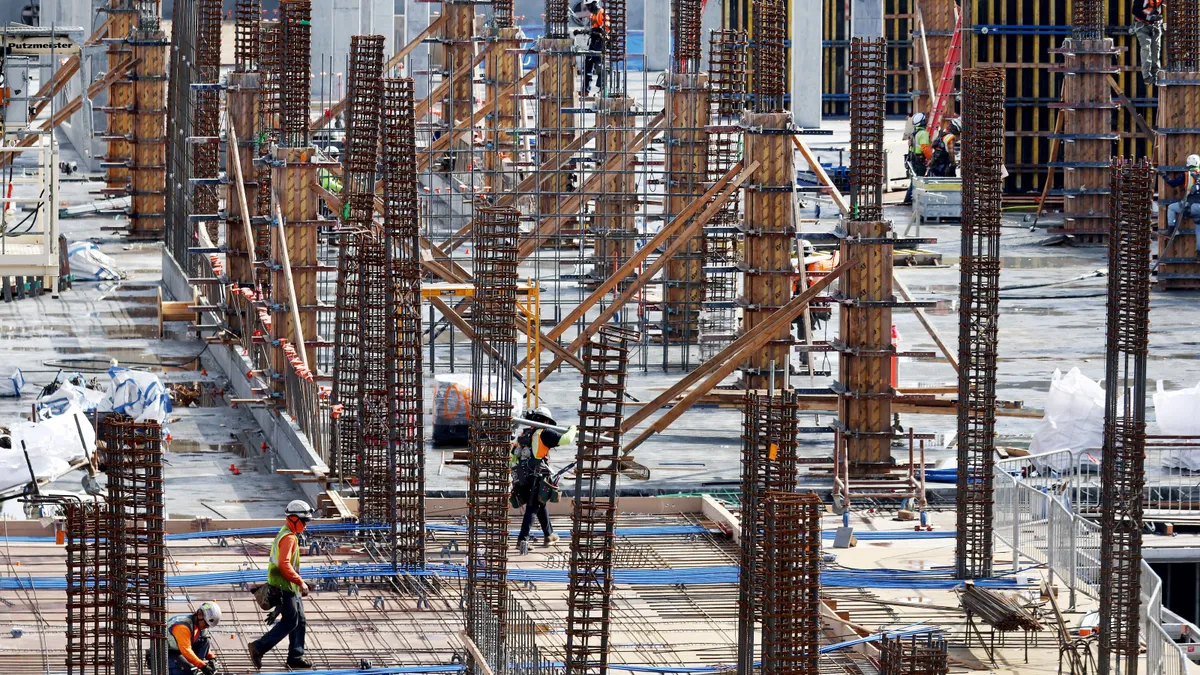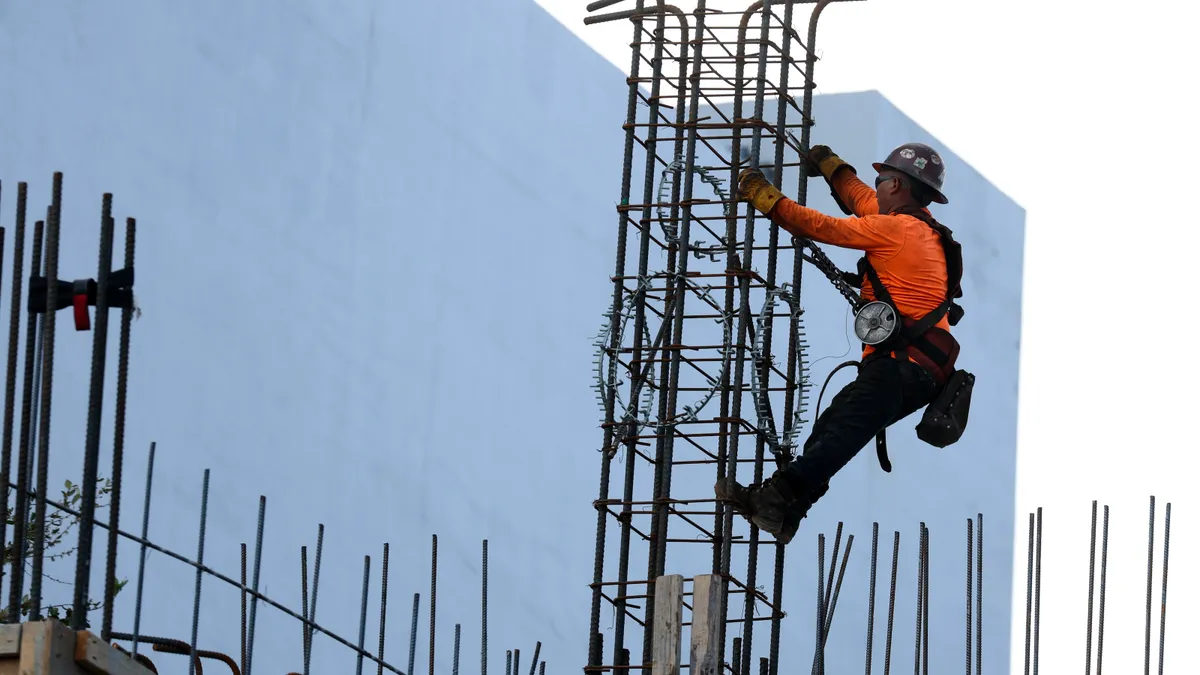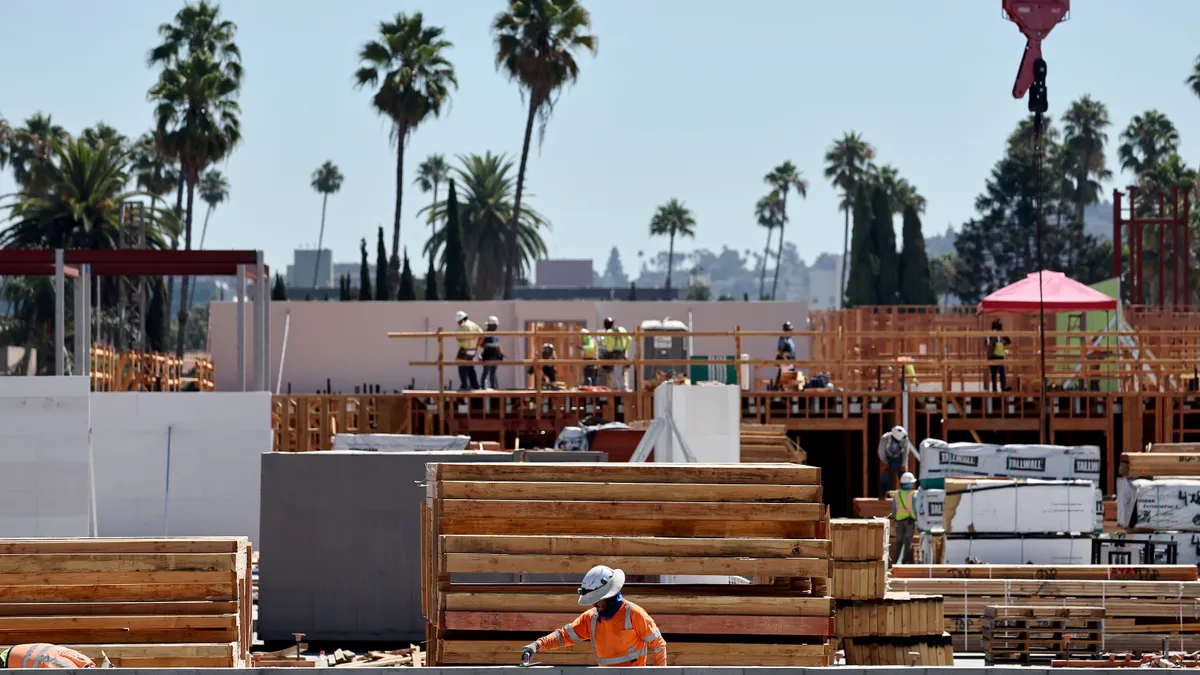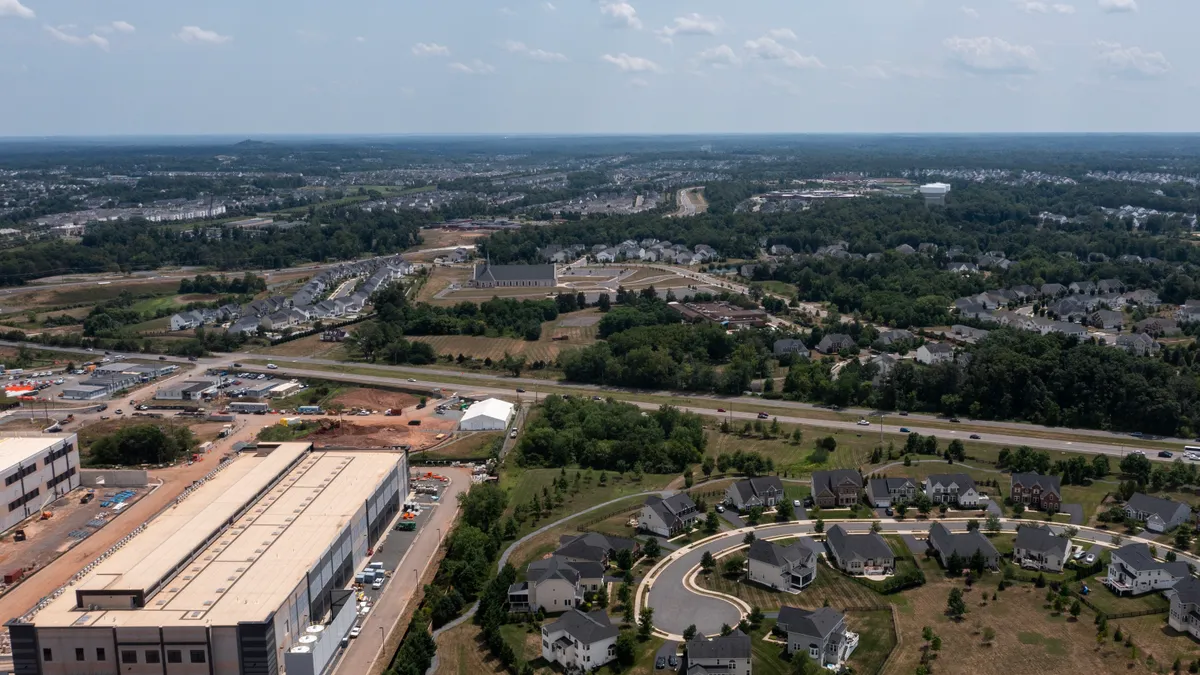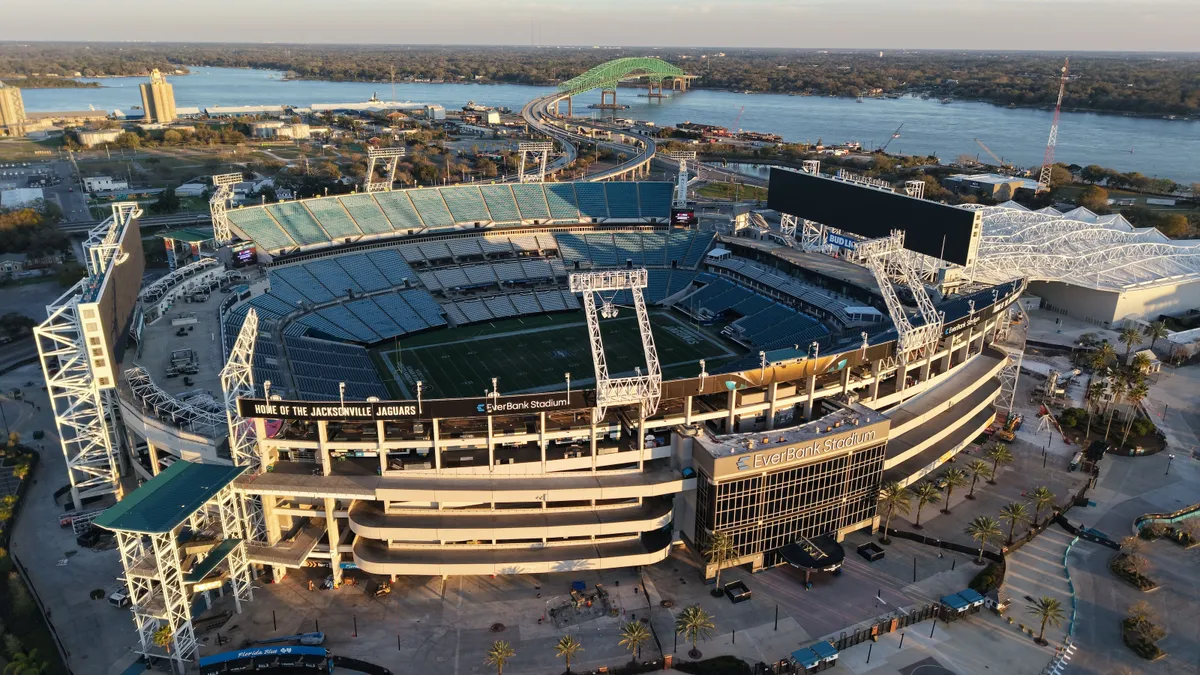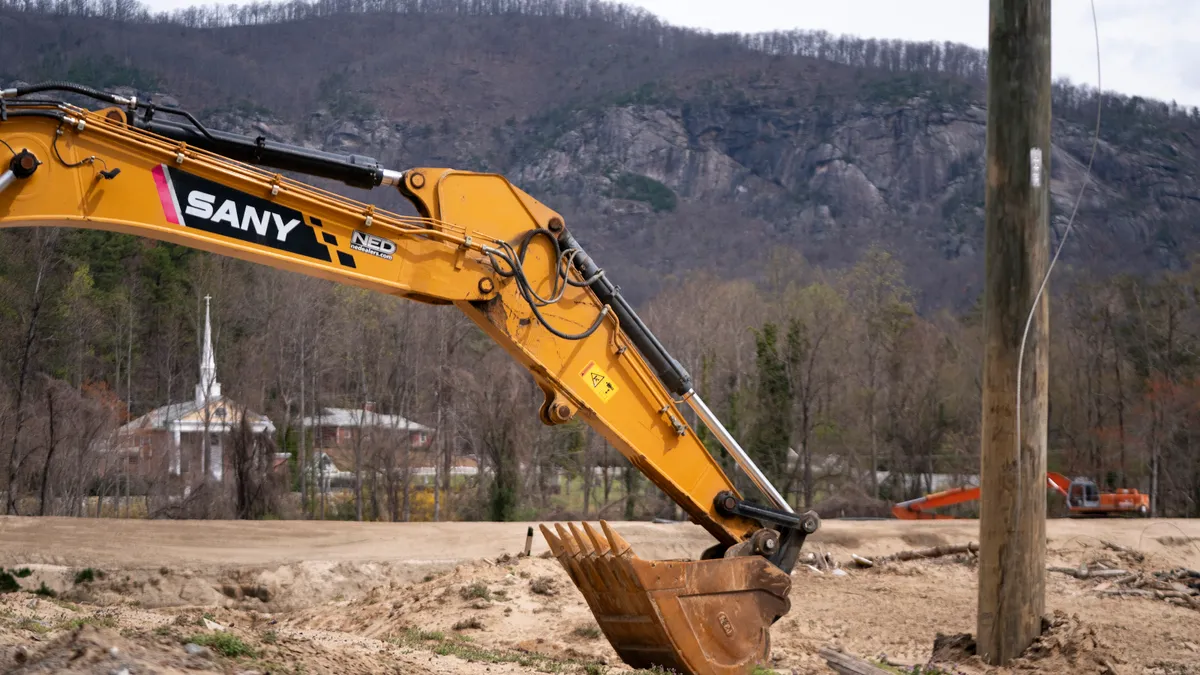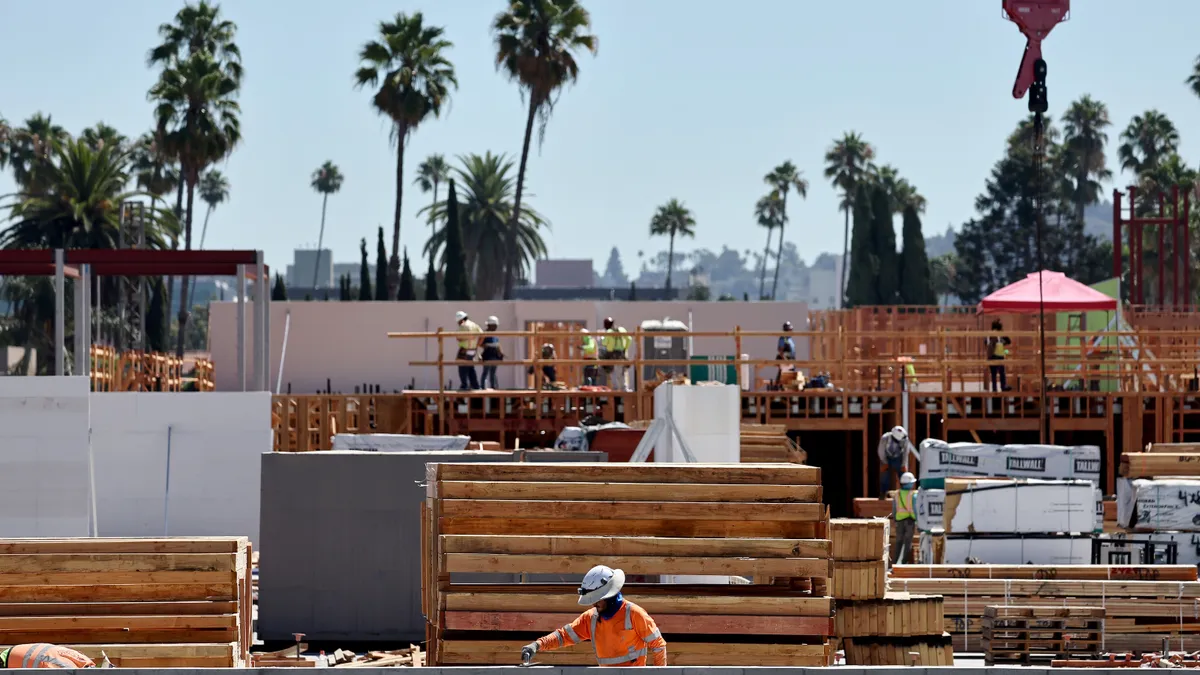Dive Brief:
- The Dodge Momentum Index, a benchmark that measures nonresidential building planning, ticked down 1.4% in November largely due to a slowdown in commercial planning, according to the Dodge Construction Network. Over the month, both commercial and institutional components fell about 1%.
- The drop in November offset the 1% gain in October, where slight growth in warehouse activity helped push the index back into positive territory for the first time in six months.
- “While both portions of the Momentum Index saw slower momentum in planning, overall levels remain steady and will support construction spending in 2024 and 2025,” said Sarah Martin, associate director of forecasting for Dodge Construction Network. “Nonresidential planning activity will remain constrained from stronger growth amidst ongoing labor and construction cost challenges.”
Dive Insight:
High interest rates, supply chain disruptions and stricter lending standards continue to weigh on the commercial segment, which includes office, retail and warehouse projects, said Martin.
Excluding data center activity, all commercial segments posted declines in planning levels in November, according to Dodge. This negative trend has dominated much of 2023, as planning activity in the commercial segment now remains down about 20% from year-ago levels.
On the institutional side, persistent weakness in educational planning continues to offset positive momentum in healthcare and public projects. Despite that drag, the institutional segment remains up 2% compared to a year ago, largely due to the sector’s resilience thus far to market headwinds, said Martin.
Year over year, the overall DMI was 14% lower than in November 2022.
“Commercial planning has generally been in decline since its peak last year, but it has begun to stabilize in recent months,” said Martin. “Comparatively on the institutional side, we’re just seeing a little bit more positive momentum trends throughout 2023.”
Architectural billings continue to fall
Meanwhile, the Architectural Billings Index, which also provides a leading indicator for upcoming construction work that’s nine to 12 months out, continues to plummet, according to the most recent data from the American Institute of Architects. The ABI score declined to 44.3, as more firms reported decreasing firm billings than the previous month. Any mark below 50 indicates a contraction in activity.
Indicators of future work in the pipeline stumbled as well, as firms reported a drop in inquiries into new projects for the first time since July 2020, according to the ABI report. Additionally, the value of newly signed design contracts also softened for the third consecutive month, according to the report.
“Things seem to have slowed down since the summer, and we are working on backlog projects. Fewer project leads and calls coming in, and new projects seem to be fewer and smaller,” according to a commercial firm quoted in the AIA report. “Hoping this is a year-end slowdown, but we are preparing for a slower 2024.”
A total of 17 projects valued at $100 or more entered the planning stages in November, according to Dodge. The largest commercial projects included:
- The $480 million Project Cosmo Data Center in Cheyenne, Wyoming.
- The $300 million Sherwin Williams Headquarters building in Cleveland, Ohio.
The largest institutional projects to enter planning included:
- The $315 million phase two of the FSU Health Hospital in Tallahassee, Florida.
- The $258 million LA Convention Center Exhibition Hall in Los Angeles.








